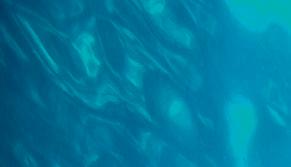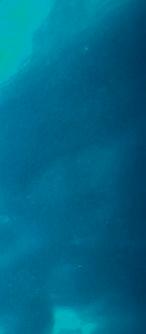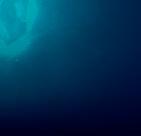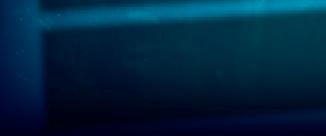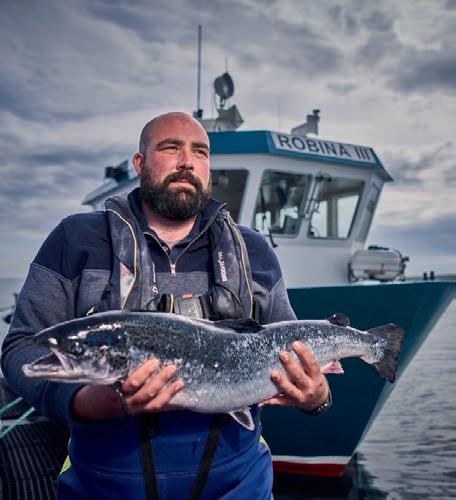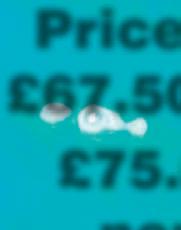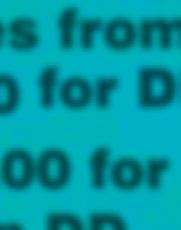F ish F armer
OCTOPUS



Is this the next farmed species?
INNOVATION
The Blue Food and SAIC summits
Feed




Aquafeed case studies
Subsea technology




Rise of the robots




Is this the next farmed species?
The Blue Food and SAIC summits




Aquafeed case studies




Rise of the robots
Bring confidence to your net cleaning job, with the most reliable pump on the market.

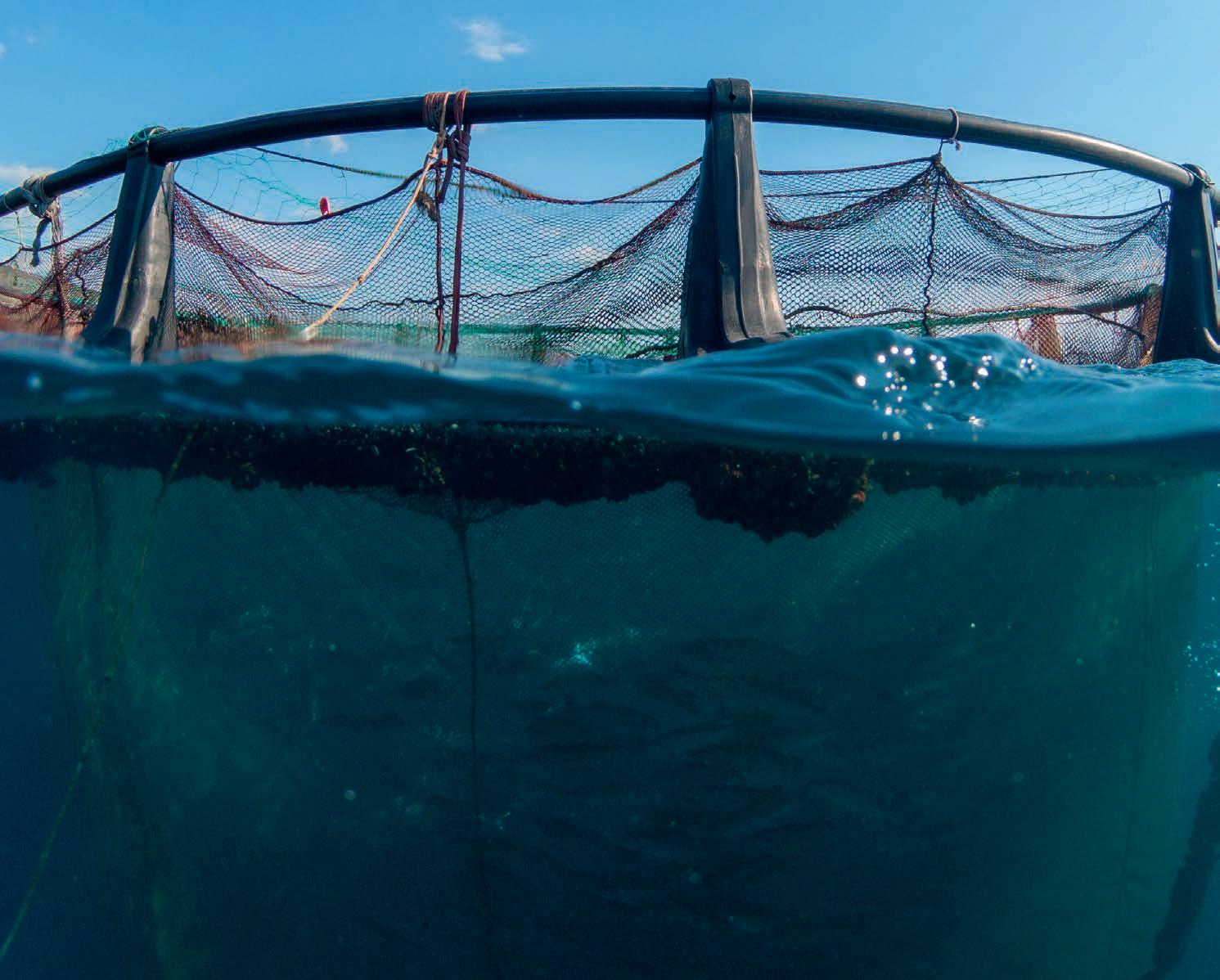
NLB’s high-pressure water jet pumps are proven reliable for offshore and onshore net cleaning. Engineered specifically for the aquaculture market, they withstand the harsh conditions of open seas, foul weather, and salt corrosion, all while delivering the same performance and durability NLB has been recognized for since 1971. Our units also offer a compatible interface with the industry’s leading head cleaning systems.
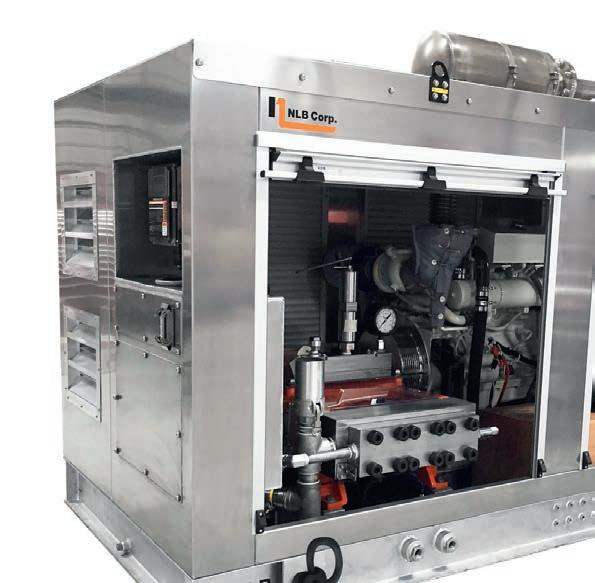
NLB will go the extra mile to make the switch easy for you. Contact us today to discuss your options!


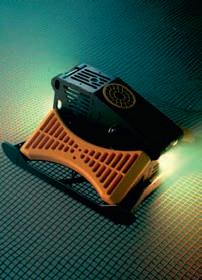

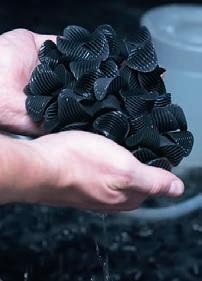
































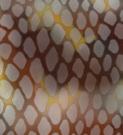
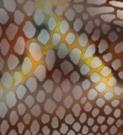




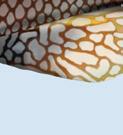







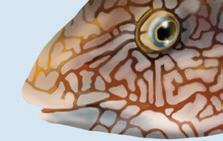






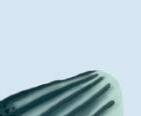

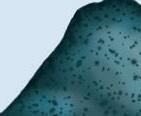

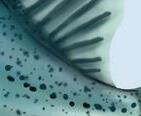




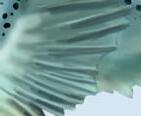
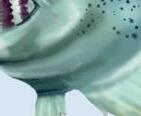






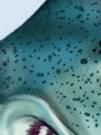
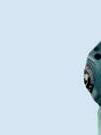

































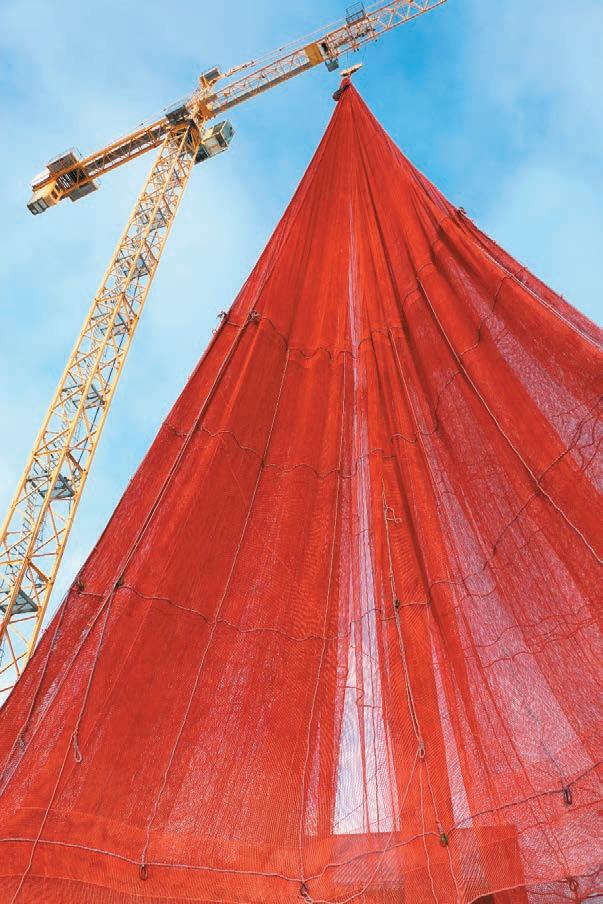
evidence-based regulatory approach to protect young salmon as they leave rivers and begin their journey to feeding grounds in the north Atlantic.
The Scottish Government’s Wild Salmon Strategy, published earlier this year, aims to build resilience and transform the fortunes of wild Atlantic salmon through coordinated action to manage pressures in rivers and coastal waters, including the effects of climate change, barriers in rivers to migration, diffuse pollution, fish diseases and sea lice from fish farms.
THE Scottish Environment Protection Agency (SEPA) has published more information on the zones where it believes sea lice pose the highest risk to migrating wild Atlantic salmon.
SEPA is consulting on the latest stage of its sea lice control measures, setting out a network of wild salmon protection zones in migration bottlenecks in coastal waters on the West Coast and Western Isles, such as sea lochs and sounds.
The Agency says the proposed zones would not be no-go areas for fish farms, but farmers operating within them all proposals for new finfish farms or increases in fish numbers at existing farms that could affect protection zones will be subject to risk assessment and appropriate permit conditions.
Farms in the areas identified could also be subject to tighter controls regarding sea lice monitoring, with stricter thresholds than in other areas.
Peter Pollard, Head of Ecology at SEPA, said: “The science is clear that Scotland’s wild Atlantic salmon populations have seriously declined over the last few decades and are now at crisis point. Safeguarding the future of Scotland’s ‘king of fish’ requires coordinated action and a broad range of interests working together to manage all the pressures they face in rivers and coastal waters, from climate change to migration barriers and sea lice.
“As Scotland’s environmental watchdog, SEPA’s new responsibilities on managing the risk to wild salmon and sea trout from sea lice offer an opportunity for a fresh, proportionate and evidencebased approach to working together on the shared challenge.
“Our modelling of wild salmon protection zones, built on international best practice, uses cutting edge science to triage risk and specifically builds in opportunities for additional modelling, monitoring, engagement and adaption. It does not lock in or out development in any area. What it might mean is farms in higher risk areas implementing tighter but achievable levels of sea lice control, with the sector having a good track record in innovating and adapting.”
SEPA said the second consultation, which follows an initial 2021 consultation and engagement with a range of stakeholders, outlines a proportionate,
Peter Pollard added: “We’ve worked hard to date to listen to a broad and often diverse range of views on the future regulatory landscape to support wild salmon. We understand views can be polarised and we’ll continue to listen during this further consultation, which we’re extending to ensure we hear directly from all those who share an interest in the framework and the future of wild Atlantic salmon.”
A series of workshops will be hosted with stakeholders during June, July and August 2023.
Detailed proposals for a risk-based, spatial framework for managing interaction between sea lice from marine finfish farm developments and wild salmonids in Scotland is available to view online. The consultation closes on 15 September.

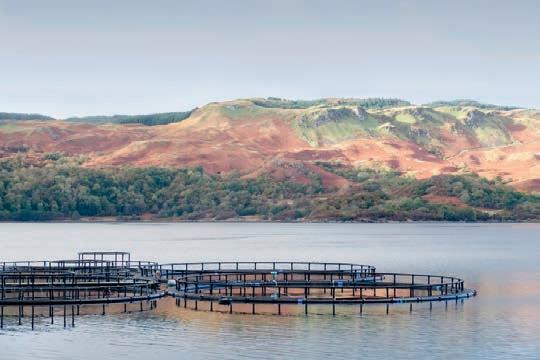
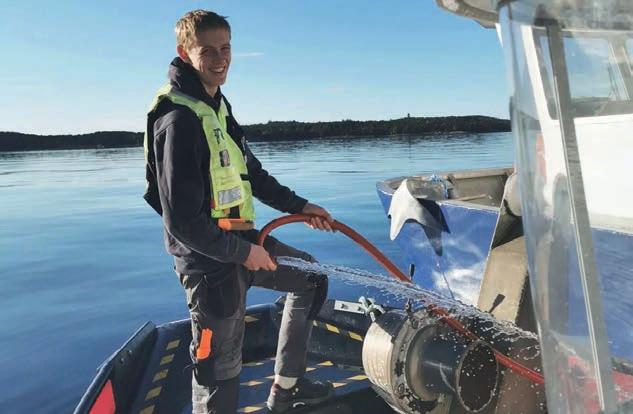
INDUSTRY body Salmon
Scotland has welcomed a report which is calling for a major reform of skills training in Scotland.
The report, Independent Review of the Skills Delivery Landscape, was commissioned by the Scottish Government and led by James Withers, former Chief Executive of Scotland Food and Drink. It makes 15 recommendations to help reach targets for economic transformation, including:
• the creation of a new single funding and delivery body, bringing together functions from Skills Development Scotland (SDS), the Scottish Funding Council (SFC) and, possibly, the Student Awards Agency Scotland (SAAS);
• giving the enterprise agencies a clear remit for supporting businesses, with workforce planning as an embedded and integrated part of business development and planning;
• ensuring there is a clear remit for the new qualifications body – the
successor to the SQA - in overseeing development and accreditation of all publicly funded post-school qualifications;
• moving responsibility for national skills planning to the Scottish Government;
• reform of SDS to create a new body with a singular focus on careers advice and education.
Tavish Scott, Chief Executive of Salmon Scotland, said: “The salmon sector, Scotland’s leading food export,
welcomes this well-argued case for change on skills businesses need.
“Our sector is responsible for creating thousands of high-paid, skilled, and rewarding jobs right across the country.
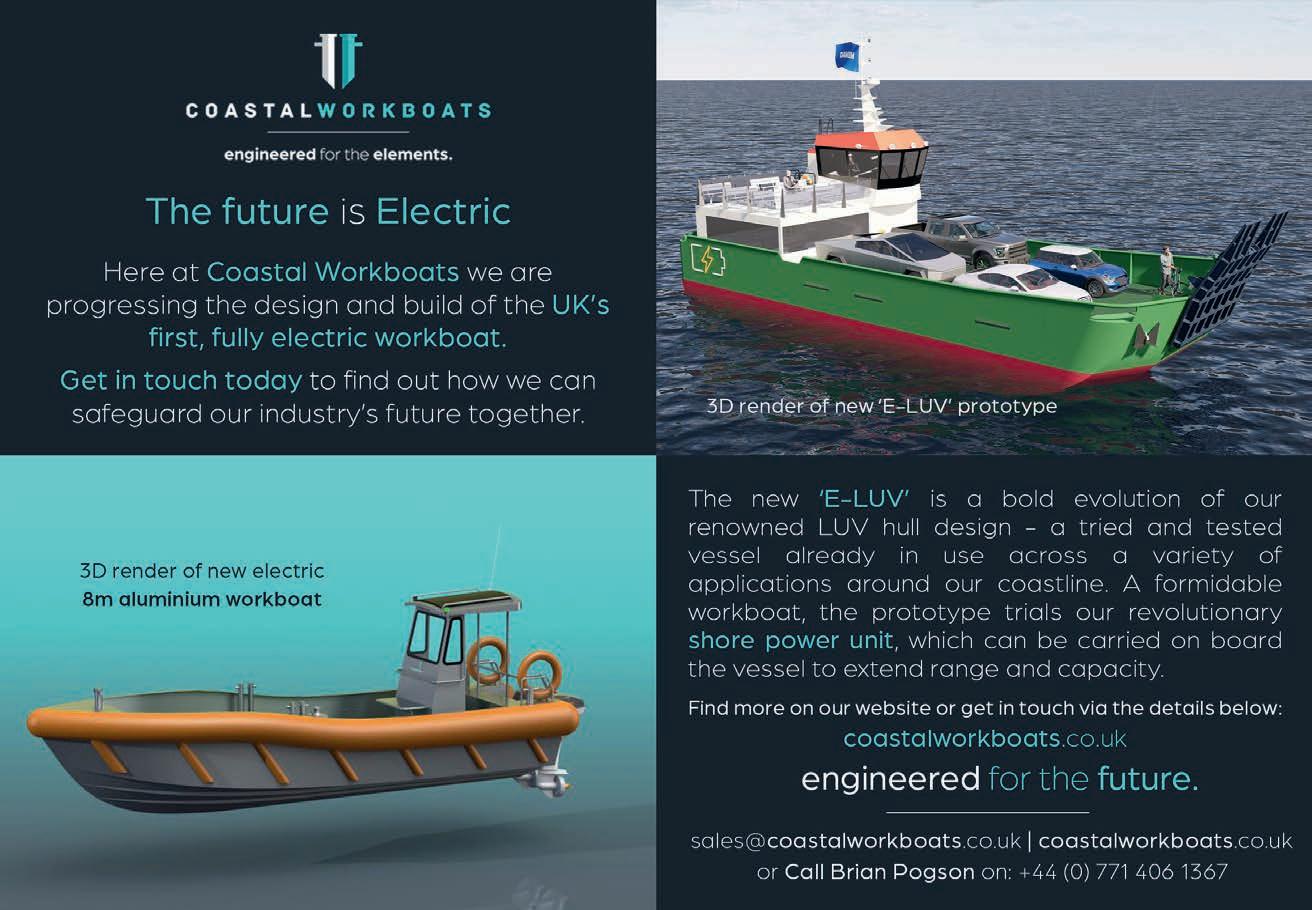
“We want to help the next generation of young people and are a leading provider of modern apprenticeships and other training opportunities.
“But the current approach does not work as effectively as it should.
“We hope the Government will embrace the recommendations, take the views of business and growth sectors such as ours, and move to implementation.”
Graeme Dey, Minister for Further and Higher Education in the Scottish Government, thanked James Withers and said: “I am supportive of the broad direction of travel James Withers identifies but will take a little time to consider fully the detail of the recommendations and the practicalities of implementing them.”
MATILDA Lomas has been promoted to the post of Veterinary Practice & Cleanerfish Manager at Bakkafrost Scotland. She was previously Biology & Cleanerfish Co-ordinator with the company.
Lomas joined the company in 2014. She is also a member of the Advisory Board of Women in Scottish Aquaculture (WiSA) and a Membership Engagement and Communications Lead Volunteer with Girlguiding Scotland.

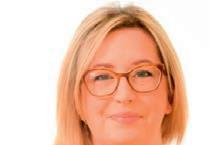
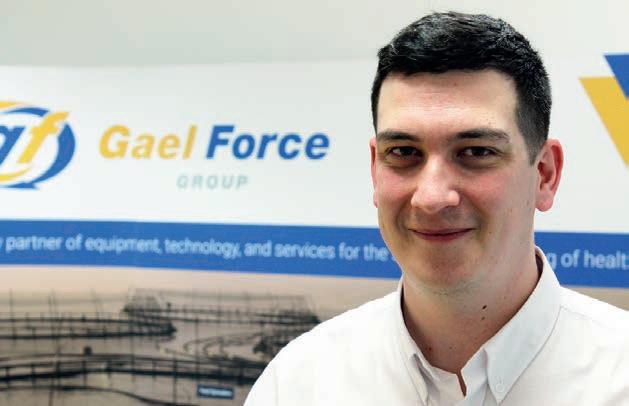
AQUACULTURE support business Gael Gorce Group has promoted Craig Graham to the newly created role of Customer Service Director. He brings more than a decade of experience working with the company, and will lead the delivery of a major strategic commitment to establish a sector-leading standard of service and support for Gael Force’s aquaculture customers.
He said: "We have always taken pride in offering what we hope is considered a high level of customer service and fast response times. The challenge to ourselves is to elevate that level even further."
INDUSTRY body Seafood Scotland has appointed Jeni Adamson as Industry Engagement Manager. She joins Seafood Scotland after six years working for land-based and environmental skills body sector Lantra.


Jeni will support Seafood Scotland in strengthening
relationships with key stakeholders across the entire supply chain of Scottish seafood, including the organisation and planning of the Responsible Seafood Summit which will be held in St Andrews in October 2024.
CLEANTECH fund Earth Capital Limited has backed aquaculture technology business Ace Aquatec, joining Aqua-Spark and Chroma Ventures as an investor in the company.
The sum invested has not been disclosed. Ace Aquatec said it would use the injection of capital to grow its current portfolio of products and markets.
As part of the deal, Bradley Jones, Senior Investment Manager with Earth Capital, is joining the Ace Aquatec board.
Wider changes to the board see Chris van der Kuyl CBE appointed Chair and Nina Santi joining the board as a non-exec director. Chris van der Kuyl is Principal of existing investor, Chroma Ventures and Nina Santi is also a senior advisor at INAQ AS, a business strategy advisory firm specialising in the seafood industry.
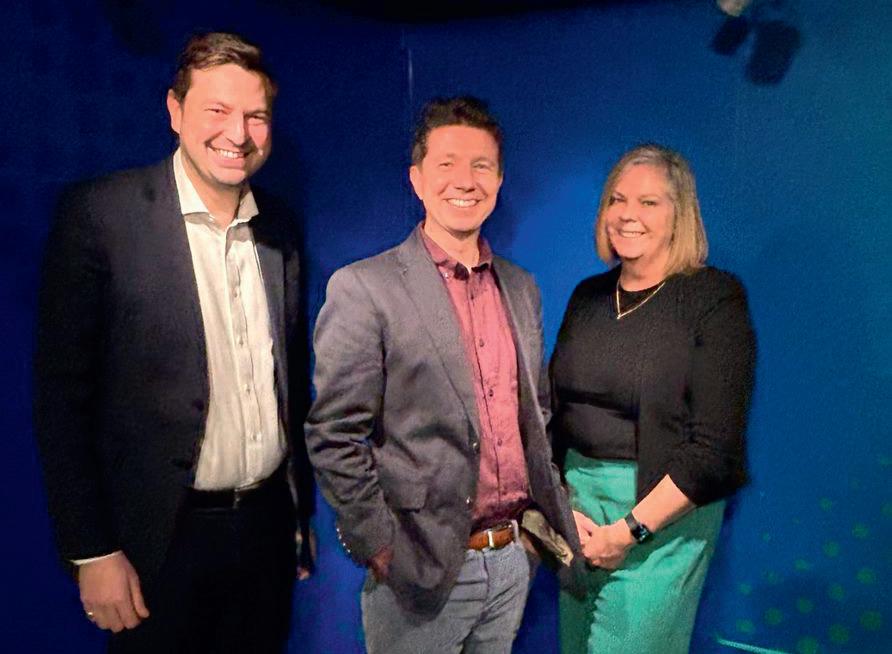
Earth Capital’s Bradley Jones said: “We are excited to be partnering with Ace Aquatec, a key player in the aquaculture industry, on the next stage of its development journey. Championing sustainable practices and setting high welfare standards paves the way to ensuring that seafood farming becomes one of the biggest opportunities to responsibly feed a growing population. Sustainable farming aligns perfectly with Earth Capital Limited's mission to advance technology within the energy, food, and water sectors while driving towards a net-zero future."
Nathan Pyne-Carter, CEO of Ace Aquatec, said: "Earth Capital Limited shares our outlook and passions – namely, the critical importance of technology to drive sustainable food production. Together we can tackle one of the world’s most pressing issues by providing sustainable and responsible protein for a growing world population. The team’s support and expertise will help us scale the business and take another huge step forward in the development of high-welfare products for the global seafood industry. We are also excited to welcome Bradley Jones to our board, whose deep knowledge and strategic insights will be invaluable in guiding our future growth."
The Dundee-based supplier of global aquaculture solutions has raised over £10m since its series A investment with Aqua-Spark and Chroma Ventures. Ace Aquatec has already shown strong growth in key markets including the UK, Europe, Canada, South America, and South East Asia and will use part of this additional capital to expand its presence and distributor networks in these markets. It will also provide a recruitment boost, with 10 jobs expected to be created including Engineering, Software and Sales support roles in Dundee and Chile.
The investment will also enable the acceleration of the firm’s development in innovative aquaculture technology solutions, including its Biomass Camera which has recently started production following successful trials. This underwater camera is designed to detect and quantify fish biomass automatically. It uses machine learning and artificial intelligence (AI) to produce accurate, real-time data on a range of fish species populations and distributions.
TRIBUTES have been paid to Neil Manchester, Managing Director at Kames Fish Farming, who passed away suddenly last month.

Manchester, who was 59, was appointed as Managing Director-designate at the trout farming buisness as from August 2021, and succeeded the company’s founder Stuart Cannon as Managing Director in February 2022, when Cannon took up the role of Chairman.
In an announcement on LinkedIn the company said: “Neil Manchester died very suddenly at his home on Sunday. Our hearts go out to his wife and two children, we offer them all our thoughts and condolences at such a difficult time.
“It is a huge shock to everyone at Kames, as we’re sure it is to all of you who have known and worked with Neil. He was a much-loved leader, colleague and friend, who has added so much to our business.
“He has driven Kames forward in strategy, communication, team empowerment, marketing nous and industry expertise over the past two years, helping us to thrive and shaping our future. Most of all he had an absolute passion for our values, our
community and our staff. We will carry on his vision and honour his great investment and commitment to us all.”
Neil Manchester brought more than 35 years’ experience in aquaculture, having started out at the company in 1985, before moving to Landcatch in 1998 and then Hendrix Genetics in 2011. As Managing Director of Aquaculture at Hendrix Genetics he was instrumental in developing the business as a global leading player in the aquaculture breeding sector. He was well-liked in the industry, and former colleagues and associates have already offered their own condolences.
Tavish Scott, Chief Executive of Salmon Scotland, said: “He was a bundle of ideas, common sense and humour. A real person of the seafood family.”

Keith Drynan Managing Director, Aquagen Scotland, described Neil Manchester as: “A gentleman who will be sadly missed in the industry.”
Chris Wallard, CMO and COO of Xelect said: “He was, we all agree, ‘one of the best ones’… we will miss him, and I will always remember him as one of the legends of our industry.”
See Obituary, page 17.
SCOTTISH salmon producer Mowi has denied it wants to gag a campaigner by banning him from its fish farms, in a civil case heard at Oban Sheriff Court on 1 June.

Mowi Scotland Ltd is pursuing an interdict to prevent environmental activist Don Staniford coming within 15 metres of its fish farms.
Acting for the defender, Don Staniford, advocate Simon Crabb called for the "ridiculously extravagant" action to be dismissed.
"Mr Staniford is a journalist and carries out watchdog functions," he said. "A picture tells a thousand words. Images do not lie.
"His source material informs mass media and welfare complaints.
"There is a necessity. There is a public interest. There is a genuinely held belief, which gives him right to investigate what he believes is unlawful practices.
"Mr Staniford is trying to expose unlawful conduct. He is there to protect the fish.
"It is not the case that journalists say 'okay we will leave it up to the authorities', especially with a vulnerable population. Wildlife do not have a voice.
"They require someone like Don Staniford to do that lawfully, which the law in Scotland allows him to do.
"The defender's ability to inform the public depends on his access to the waters where the salmon farms are located.
"His lawful authority comes from his right to navigate the public waters and do any act that is incidental to that.
"Mowi have employed an excessive restriction on the freedom of navigation.
"Any presence has been passive and temporary. He does not attend in large
numbers. He attends with journalists.
"Potentially we could have kayakers and yachters being told by Mowi to stay off the water and keep the cameras away.
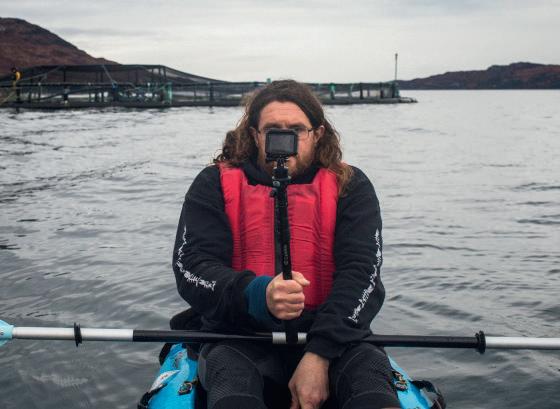
"The pursuer in this case seeks to protect itself from reputational damage."
Mr Crabb said installing cameras on the pens "would put the issue to bed".
Acting for the pursuer, Mowi Scotland Ltd, Jonathan Barne KC said: "My learned friend is throwing everything at the court in the hope something sticks."

He summed up Mowi's argument: "We own the stuff and people should not be able to come onto it.
"We have eight individual incidents of where the defender has tethered his boat to the pursuer's equipment and boarded." Mr Staniford, he said, had also deployed a camera underwater.
"If there was a yacht in the Firth of Forth, he would be entitled to tether his boat to the yacht and board the yacht. That simply cannot be right.
"The public has a right of navigation to sea lochs and rivers. It gives them a right from A to B. It does not give them the

right to every inch.
"There is no evidence an interdict would prevent the defender from navigating from A to B.
"Issues of proportionality or necessity do not arise, as there is a trespass, and may be a reasonable apprehension of trespass.
"We have a highly regulated industry," Mr Barne said. "There is a voluntary code, managed by Marine Scotland, where operators publish monthly mortality rates.
"Having a camera affixed to some pens is going to be far less useful than the information that is already available.
"It is not for the pursuer to modify and pay for equipment in order to satisfy the defender's curiosity.
"The pursuer is attempting to keep the defender off the equipment and a 15 metre allowance so there is not damage to himself or the equipment.
"The working environments can be potentially hazardous," he said. "To have third parties gaining access, with safety protocols, is simply not acceptable.

"We are not seeking orders against the public. The public at large have not on numerous occasions boarded the equipment of the pursuer.
"We are not trying to gag what is said by Mr Staniford. That is not the reason for this, and it is certainly not accepted."
In reply, Mr Crabb concluded: "He said Mowi's intention is not to gag Mr Staniford. Whether they intend it or not, that is the outcome."
Thanking the advocates, Sheriff Andrew Berry said: "I am going to reserve my decision so I can reflect on what I am told and submit a decision in writing."
Gael Force Group has named its partners in a project aimed at developing a ground-breaking semi-closed containment solution for fish farmers.
Gael Force’s SeaQureFarm is a semi-closed cage structure which aims to keep fish safe from pathogens and predators, and allow for the collection of waste, while at sea.
The Scottish-based company will be working with Cunningham Covers, a Northern Irish manufacturer specialising in protective covers and containment, and with Italy’s Serge Ferrari, a global leader in flexible composite materials.
The SeaQureWell, an integral element in the SeaQureFarm, is an arrangement
where seawater is pumped and pushed into a floating enclosed “well” with its floating collar at the sea surface.The collar supports the Well and its pumping arrangements which lifts deeper coastal water into the well, creating an in-well temperature profile that is warmer in the winter and cooler in the summer.
The SeaQureWell will be constructed of engineered high-quality composite membrane material, cut, and welded to form the “Well”, with structural flotation at the surface and a rigid sub-surface service and support structure. It aims to provide and maintain a secure controlled environment to safeguard healthy growing fish against external environmental threats
to the fish from sea lice, gill amoeba, jellyfish and algae bloom as well as protect against sea mammal predation.
Additionally, faecal depositions along with any uneaten food will be captured in the “Well” for on-site recovery.
Cunningham Covers produces and supplies a range of specialised cover products for aerospace, offshore, and aquaculture applications, including freshwater treatment bags, fresh-water storage bags, lice skirts, and other custom products.
Gael Force Group Managing Director, Stewart Graham, commented: “By announcing this next major step forward in the development of SeaQureFarm, we continue to demonstrate our commitment to the continual improvement of a greener, carbon-friendly way to sustainably produce a healthy, nutritious food protein. "

SALMON farmer Mowi is consulting with the local community on plans to switch the former Dawnfresh trout farm sites on Loch Etive to growing post-smolt salmon.
Mowi acquired Dawnfresh Farming Ltd in February this year, after Dawnfresh was placed into the hands of administrators in 2022. The Dawnfresh farming operations include three hatcheries, three freshwater sites and four seawater sites. Mowi Scotland currently operates the Dawnfresh Farming company as a separate business.
The Dawnfresh sites in the brackish waters of Loch Etive, have been used for raising rainbow trout. Now Mowi – which is exclusively a salmon producer – proposes to use them to grow smolts to a larger size before they are transferred to sea cages.
Mowi said: “The proposed post-smolt programme will realise a number of benefits

for the salmon as well as Loch Etive and the surrounding environment”.
Typically, smolts are moved directly from freshwater hatcheries and lochs to seawater sites at a size of about 130 grams, where they are grown for 18-24 months before harvest. With post-smolt salmon, they are moved to sea when they are larger and more robust at a size of up to 1.0 kg. This reduces the on-growing time at offshore sea sites to 12 months, avoiding a second summer of warm temperatures and resulting algae blooms –as well as micro-jellyfish – that can create significant health challenges for large salmon. The lower salinity in Loch Etive also means a lower sea lice population.
Mowi said that the move to post-smolt production will mean that fallow periods can be synchronised throughout the whole loch system, which will also help to keep sea lice
numbers down.
Mowi has also announced the appointment of Clara McGhee as Area Manager of Dawnfresh operations. Previously Farm Manager at Mowi’s 3500 tonne salmon farm at the Isle of Muck, she holds an undergraduate degree in Sustainable Development and a Masters in Sustainable Aquaculture from Stirling University.

THE Aquaculture Stewardship Council has logged record growth in ASC certification in the UK, with the number of certified farm sites doubling since February 2022.
Forty farm sites are now ASC certified in the UK, including finfish and shellfish producers. A further 18 farms are in the initial audit stage with a view to being certified by the end of 2023.
From January 2022 to January 2023, 16 more companies became ASC Chain of Custody holders – up from 88 at the start of the period. As of March 2023, there are 139 UK Chain of Custody holders.
Lorraine Gallagher, ASC UK and Ireland Market Development Manager, said: “We are delighted
to see such an increase in the number of farms and companies in the UK joining the ASC programme or becoming ASC Chain of Custody holders. We know that market demand is driving this increase and we expect even more farms and companies to take up this opportunity over 2023 and beyond”.
The ASC standards for aquaculture industry include requirements covering the potential impacts of the farms on the environment, workers, animal health and the surrounding communities.
Bakkafrost Scotland recently achieved ASC certification for four salmon farms in Scotland in 2023.
Ian Laister, Managing Director
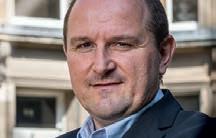
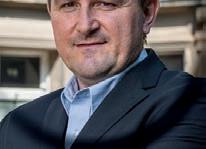

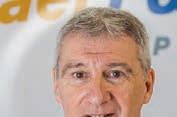
at Bakkafrost Scotland, said: “ASC develops and manages some of the strictest quality standards in the industry, increasingly sought after by customers. includes requirements covering aspects such as water quality, responsible sourcing of feed, animal health, fair working conditions and maintaining positive relationships in our communities in which we live and work.
“Bakkafrost Scotland is very much aligned to this level of quality control and inspection and happy to be working with the ASC team to develop the scheme across our business in Scotland.”
In the UK alone, demand for ASC labelled consumer products rose by 62% in 2022.The UK is trending above the global average annual increase of 14%.
THE proposed new RAS salmon farm in Grimsby, on England’s North Sea coast, will be one of the most technically advanced of its type, the company behind the project said yesterday.
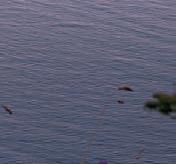
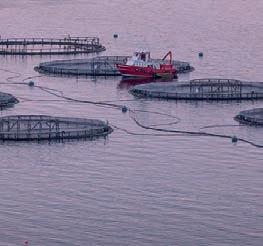
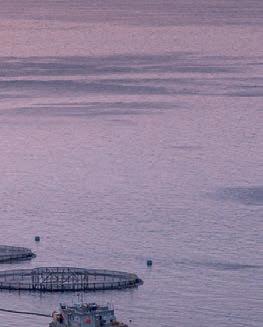
Neil Jamieson, director and founder of Aquacultured Seafood told Fish Farmer that there would be extensive use of artificial intelligence (AI) in its operation. The company is engaging the Israeli company AquaMaof to handle the RAS (recirculating aquaculture system) technology.
Aquacultured Seafood was in Grimsby yesterday to outline its plan, meet local residents living near the site and attempt to allay any fears they may have.
The event was held at the Grimsby Fishing Heritage Centre, the town’s award winning museum depicting the history of the fishing industry.
Up to about 50 people are thought to have shown up for the consultation which turned out to be a friendly encounter, although there were one or two “stop salmon farming” placards outside the building.
Canadian born Jamieson said the company spent three years looking at potential sites around the UK and visiting other RAS farms abroad.
It will be the UK’s first major salmon farm outside Scotland and the first to use RAS technology for grow-out production. Jamieson said he believed RAS to be the way forward and was now being adopted across the world
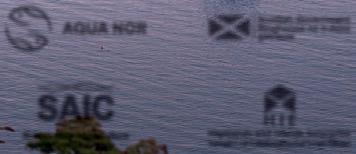

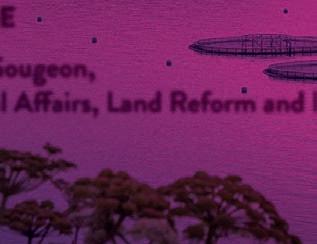





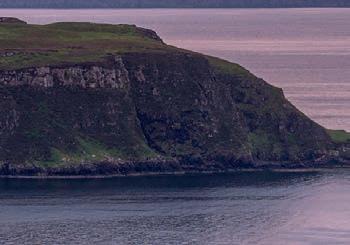
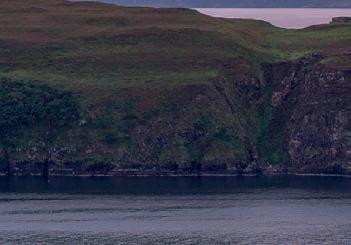
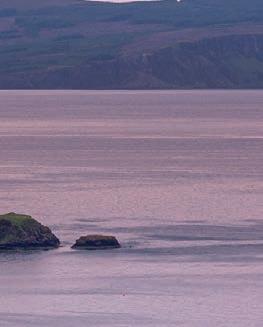

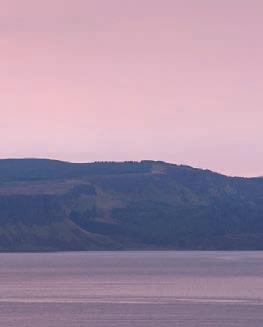


Why Grimsby? “Because of its access to fresh water and because of ABP’s (Associated British Ports) belief in using renewable energy,” he said to Fish Farmer.


“We were also enthused by the history of Grimsby and the fact that it has excellent support services in refrigeration, logistics and other important matters.”
He also thanked Young’s Seafood, which has its main production sites close to the site, for its “great support”.
The £75m project will create around 100 full-time jobs plus many others from

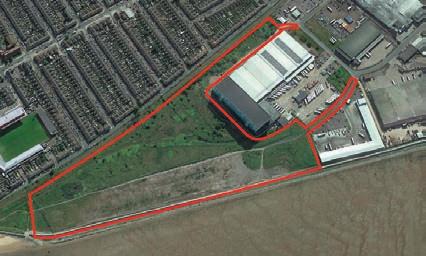
businesses supplying support services.




He said the expected timeline to the first harvest was broadly three to four years. A formal planning application will be submitted in the next few weeks and (if approved) this will be followed by six months to finalise the plans, 18 months for construction and a final 18 months to the first harvest.
Aquacultured Seafood’s market will be in the UK, Jamieson said: “We will be producing 5,000 tonnes of salmon a year against total UK consumption of 160,000 tonnes, which is really a drop in the ocean.”
Describing it as a game changer for the town’s seafood sector, another director, Mike Berthet, assured members of public attending the meeting that there will be practically no noise and no smells from the site and waste products would leave in sealed containers.
Peter Dalton, co-founder and director of the Grimsby Seafood Village project told Fish Farmer he thought the facility will be “absolutely brilliant” for the town’s economy, adding: “Some of the arguments being used by opponents were the same as those being used against us when we wanted to build our seafood business park.”

ON 31 May, the Norwegian Parliament voted in favour of the government’s controversial new “ground rent” tax, which will be levied on much of the country’s salmon industry.
The decision on the new tax – also known as the “salmon tax” – came after a lengthy and often fractious five hour debate in the Storting, as the Parliament is known. The vote was passed by 93 to 76 votes – a majority of just 17.
Even though the rate has been cut from the original budget proposal of 40% down to 35% and finally 25%, it effectively doubles the previous tax burden on the coastal salmon and trout farming companies when combined with existing taxes. Landbased salmon farms and small coastal farms are exempt.
Billions of kroner were wiped off the value of salmon company shares on the Oslo Stock Exchange immediately following the vote.
The outcome represents victory for Prime Minister Jonas Gahr Støre’s Labour-Centre party coalition, which has faced a barrage of criticism from the industry, opposition parties and business commentators since the plan was first announced in the national budget last September.
Right up until the last it looked as if the vote might be won on a majority of one after a late decision
by the Liberals – and the single seat Patient Focus party – to back the government.


Patient Focus was formed two years ago to promote the building of a new hospital in the Finnmark town of Alta. It won one of Finnmark’s five parliamentary seats through Norway’s proportional representation voting system.
The government won additional support when the far left Red (“Rodt”) party’s decided to back the 25% rate, even though it had wanted a far larger tax take from salmon companies. Rodt has nine sitting members in the Storting.
Other measures voted through at the same time included increased funding for coastal salmon farming communities, stronger environmental controls and an increase in the wealth tax valuation discount from 50% to 75% (which mostly affects privately owned salmon businesses).
Just days afterwards, salmon producer Mowi said that it had dramatically cut back on investment worth at least NOK 5bn (£367m), citing the new tax as the reason.
The company broke the news to the newspaper and media outlet
vg.no, saying it planned to call a halt to significant investment in its post-smolt strategy in Norway.
Mowi CEO Ivan Vindheim told vg.no that the company would stop the building of seven facilities along the entire coast.
So far Mowi has reacted more strongly against the tax than most of the other large salmon farmers, but they too look likely to go down the same path on future investment.
Vindheim said: “Unfortunately, it [the new tax] has consequences for the supplier industry.


















“The Storting majority has imposed a tax on us that amounts to more than double, on top of the tax we already pay.
“This means that our funds for investments decrease accordingly. So we have to adapt our plans based on the increased cost picture.”
Meanwhile, Conservative party leader Erna Solberg, who is widely tipped to return to power in 2025, has said that if re-elected, she would cut the tax rate to 15% and then study other systems including the Faroese model. The latter is regarded by in the industry as fairer, because it takes market prices and production costs into account.

SEVERAL leading Icelandic salmon farmers have come together to form a new industry group.
The 10 initial members include some of the biggest names in the business such as SalMar owned Arnarlax and Mowi’s Arctic Fish, Samherji and Benchmark Genetics
Iceland.
Called the Iceland Aquaculture and Oceans Forum or IAOF, its aim is to support the sustainable growth of the country’s rapidly expanding aquaculture sector.
IAOF says it will be a non profit organisation acting as a platform for the for international cooperation and dissemination of knowledge about marine aquaculture, both at sea and on land.
It will also talk about the challenges related to climate change and exploitation, and other features of fundamental importance for the sustainable development of the marine aquaculture sector in Iceland.
It also plans to use its experience and knowledge to establish partnerships with leading international institutions, research institutions, NGOs, universities, associations, clusters, companies and other stakeholders who can help understand and find solutions to the many challenges facing the sector today.
The new organisation said it plans to “participate in the work of creating new meeting places for ocean-related and land-based aquaculture farming themes and the global aquaculture industry”.
It also intends to generate knowledge about global ocean and land aquaculture, targeting various governments, business and international organisations.
Some of this will be done by meeting with the media and institutions to enhance the understanding of the industry.
The group’s first chairman is Kjartan Olafsson (pictured) who is also chairman of Arnarlax.

SALMON farmers in the Faroe Islands are facing sizeable increases in their tax bill, it emerged yesterday.
The Faroes’ largest fish farmer, Bakkafrost, has revealed that the Faroese parliament has finally approved a new law which will see some rates double at the top end. Details of the scheme became public earlier this year.
Bakkafrost said: “A total of nine different tax rates can be applied, dependent on the difference between the monthly FishPool Index prices and the average production cost for the Faroese salmon industry.
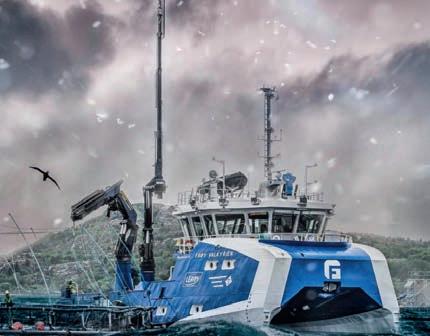
“The average production costs will be assessed twice a year.The applicable tax rate range from 0.5% to 20.0%.

As previously reported, the proposal consists of nine tax rates which range from 0.5% to 20%, calculated around the relationship between the “FishPool” price index and production costs.
At the highest level, the rate will be 20% if the FishPool price exceeds the equivalent of NOK 119 per kilo (£9.29)
which is the price Norwegian buyers were paying for the best quality fish last week.
Bakkafrost said in its first quarter report last month that when the rates became known it would revise its investment plan accordingly.
The Norwegian government which is forcing a new ground rent tax on its salmon farmer has rejected calls to switch to a Faroesstyle model.
The formula by which the tax will be calculated is shown below:
INTERNATIONAL investment group
Goldman Sachs Asset Management has bought the wellboat and aquaculture support business Frøy, it was announced earlier this month.
The news ends considerable industry speculation about this highly successful business, which was part of the NTS group acquired by the salmon farming giant SalMar last year.
However, Frøy did not fit with SalMar’s core business of salmon farming and a sale was always on the cards.
The announcement said the acquisition is at a price of NOK 76.50 (around £5.30) per share, and entails a total consideration for all the shares in Frøy of approximately NOK 6.6 billion (£482m).
It means Goldman Sachs is paying a total of NOK 4.8 billion (£350.8m) for SalMar’s shares in Frøy.
Tavis Cannell, Global Co-Head of Infrastructure within Goldman Sachs Asset Management said: “We are excited to be able to invest in Frøy, as one of the leading companies providing missioncritical transportation and support infrastructure to the aquaculture industry.
“Wellboats and service vessels are vital to enabling best-in-class farming practices and Frøy is at the forefront of driving sustainability. We look forward to partnering with Frøy and its management team, employees and long-standing customers in supporting long-term growth and value creation.”
SalMar CEO Frode Arntsen said: “We are pleased to have successfully completed the strategic review in Frøy

announced earlier this year.
“Following a constructive process and after reaching a final agreement we believe we have found the best solution, not only for the SalMar group, but for all shareholders in Frøy.
He added: “Following a successful process with many highly reputable interested parties involved, we have found a buyer for the shares in Frøy who we believe is a good fit and will be a strong partner for Frøy in the future.”
Frøy said: “We are pleased that Goldman Sachs Asset Management is becoming a strategic partner to us to further strengthen Frøy as a leading integrated provider of aqua services to fish farmers.
“By leveraging Goldman Sachs’ capital, expertise and network, Frøy will be well positioned to develop the business with the intention to continue the sustainable growth of the Company. The team is excited for the next phase of developing the Frøy group.”
The deal is expected to be completed by the end of the summer.
AQUACULTURE biotech group Benchmark saw its revenues for the six months to 31 March 2023 go up, year on year, by 25% to £98.9m.
The period, the first half of the group’s current financial year, also saw a 39% increase in adjusted EBITDA to £22.1m (H1 FY22: £15.9m). Benchmark’s financial accounting pre-tax loss was cut to £1.9m (H1 2022: loss of 5.1m. The figures are unaudited.
For the second quarter of Benchmark’s 2023 financial year, the company recorded revenues up 13% to £44.4m and adjusted EBITDA up 32% to £11.1m (Q2 FY22: £8.4m).
Benchmark’s Genetics arm recorded H1 FY23 Revenues at £34.5m, up 30%. This was driven by higher salmon sales from Norway and Iceland, the company said, with 181m salmon eggs sold (H1 FY22: 134m). Benchmark noted “continued commercial progress” in Chile with new customer wins and an endorsement from the Chilean regulator conferring “disease free compartment status”, which will enable the company to export salmon eggs from Chile.
The Advanced Nutrition business turned in a strong performance with revenues at £45.3m (up 8%) despite “soft” shrimp markets, while Health, benefiting from the commercial rollout of the combined Ectosan and CleanTreat lice treatment, recorded revenues of £19.1m, an increase of 78% year on year.
The company said the group was set to meet market expectations for 2023.
Meanwhile Lene Stokka, Catrine Smørås, and Ruben Helmersen Johansen have joined Benchmark’s commercial team for salmon. The change, a combination of promotions and position restructuring, is part of a planned strategic initiative to further strengthen the company’s customer support, following Kate Furhovden Stenerud assuming the role of Commercial Director for salmon at Benchmark on 1 May.
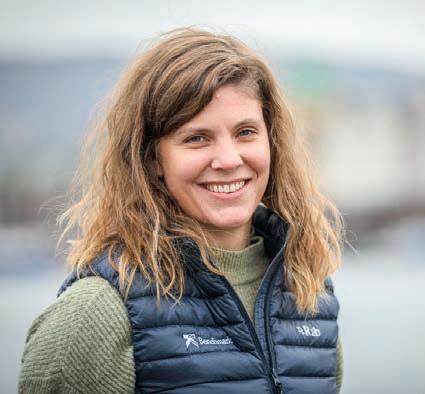
Lene Stokka and Catrine Smørås have been working as Fish Health Specialists in the technical department at Benchmark Animal Health since 2021, while Ruben Helmersen Johansen has been employed as a trainee in the marketing team since August last year and has now been given a permanent position as a Sales and Technical Associate.

A further decline in the value of the krone was the major contributor to another increase in the value of the country’s seafood exports last month, according to the Norwegian Seafood C ouncil.

T he seafood export total for May 2023 was NOK 13.1bn (almost £1bn), a rise of 7% or NOK 816m (£60m) on May last year.
One pound sterling will buy around NOK 13.6 today compared with around NOK 12 a year ago. Farmed salmon accounts for 70% of the country’s overall seafood exports.
Seafood C ouncil CEO C hristian C hramer said that, as happened in April, there was another significant currency effect last month: “ T he weak Norwegian krone alone contributed to an increase in value of around NOK 1.5 billion last month.”
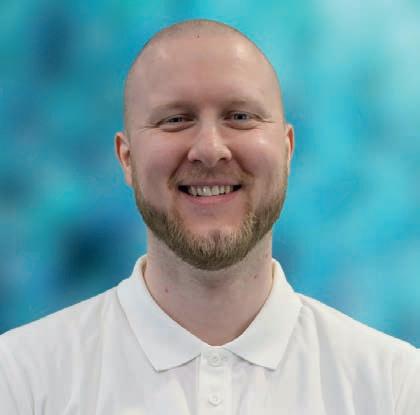
“Without this currency development, there would have been a decline in export value. T he market situation has now become more demanding,” he added.
C hramer said that measured in euros, the export value fell by 8% in May, while measured in dollars it fell by 5%, compared to
May last year.
“T he re-opening after the corona pandemic and a subsequent high inflation all over the world have contributed to raising global food prices in the past year.
“Together with the weak Norwegian krone, this has resulted in a strong increase in the value of seafood exports.”
So far this year, NOK 67.5 bn (almost £5bn) worth of seafood has been exported, a growth of NOK 9.9bn (£722m).
Seafood C ouncil analyst Paul T. Aandahl said: “In the most important market for Norwegian salmon, the EU, we see that the growth trend has reversed.
“An example of this is fresh whole salmon to the EU. T here, the export volume fell by 6% in May, to 44,874 tonnes, while the price measured in euros fell by 4%.”
Norway exported 82,148 tonnes of salmon worth NOK 9.6bn (£701m), a value rise of 14% on a year ago. T he volume was down by 2%. Poland, Denmark and the U S remain the main markets.
ICELANDIC salmon producer
Ice Fish Farm was unable to slaughter any fish during the first quarter of this year and is unlikely to produce a harvest during the current quarter, the company has reported.
Ice Fish Farm says the problem is due to lower winter temperatures and high mortality resulting from biological issues. Slaughter will start again during the first quarter which begins in July.
The high mortality rate is mainly down winter wounds and the disease parvicapsulose, caused by the Parvicapsula parasite, the company said.
Ice Fish Farm’s first quarter turnover was NOK 37.4m (£2.79m) compared with NOK 155m (£11.5m) over the same period in 2022.
This fall led in turn to a small loss (NOK 0.3m or £24k) in contrast with a profit of 12.9m (almost £1m at last year’s exchange rate) 12 months ago.
On a more positive note, Ice Fish Farm said the plan for smolt production this year continues, with improved robustness.
The report says: “Quality control implementation have been activated and all sites have been evaluated by a third party.
“The focus is on improving
conditions for the fish on land and utilizing our production capacity. This will improve our production on land and at sea. Robust smolt performs better in the sea and we see clear difference on FCR and Growth.
“Smolt release in 2023 is estimated to be around 5,5m at average size about 300 grams. This is lower than we estimated before, due to higher mortality and culling of smolt than expected.”
The report also says the company is on track for reaching the planned 6,000 tonnes harvest volume in 2023.
It states: “At the end of the Q1 2023, we had about 5.6 million fish in the sea of the generation 2022 and total biomass of 6,179 tonnes.
“Generation 2022 is now spread over two fjords into two production zones and four sites. All the cages have been updated with stronger nets and improved setup. All sites are fed from centralized feeding centre.”
Norwegian-owned Måsøval Eiendom and the Icelandic fishing company Ísfélag Vestmannaeyja recently entered into a strategic partnership with Ice Fish Farm.
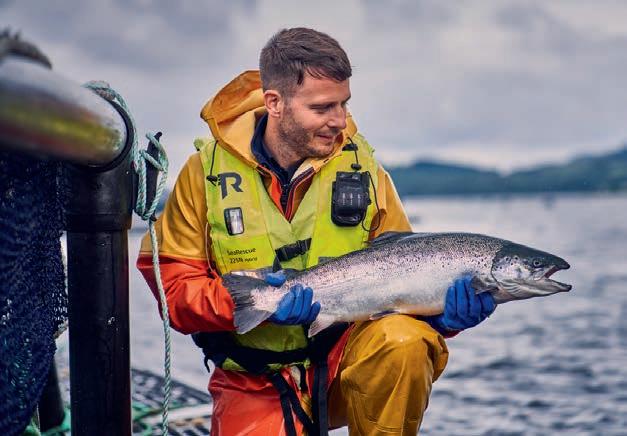
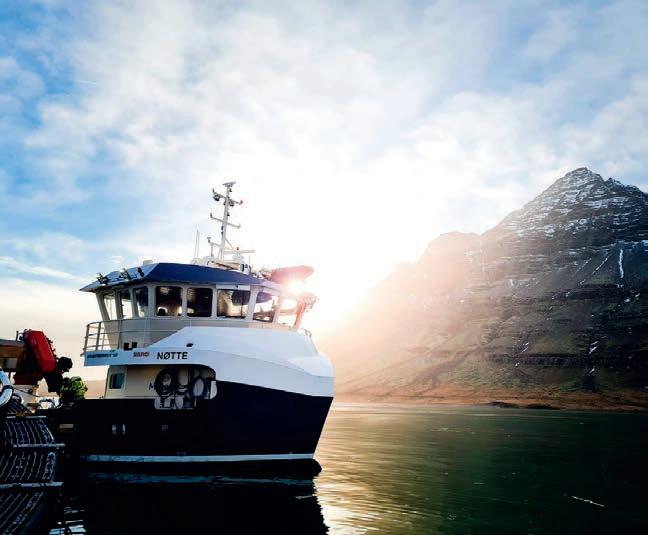
A separate holding company, Austur, has since been created to manage the joint ownership.
BAKKAFROST has set bullish harvest targets for its Faroese and Scottish farms over the next three to five years.
By 2026 the plan is for production of 95,000 tonnes in the Faroe Islands and 45,000 tonnes in Scotland.
But in 2028 that should increase to 110,000 tonnes in the Faroe Islands and 55,000 tonnes in Scotland. That would represent an 82% increase on the combined harvest figure for last year, which was 90,600 tonnes.
The plans were outlined at the company’s Capital Markets Day, held for the first time in Inverness, Scotland.
Ian Laister, managing director and Dave Cockerill, biology director of Bakkafrost Scotland respectively, outlined the situation in the UK’s 37 active sites.
Shareholders were told that survivability and harvest weights in Scotland were improving significantly thanks to various company measures. Gill health had presented the main problem.
But there had also been issues with PD (Pancreas Disease) and CMS (Cardiomyopathy Syndrome).
Gill health was now 45% lower than the industry average while lice was being maintained at the lowest recorded level.
The event was told that Bakkafrost’s increased water treatment capacity had been a major factor in improving gill health, but it did not remove all risks.
However, since the final quarter of last year the company has reported new capabilities for the “efficient and gentle” treatment of gill health and sea lice, helped by two year-round farming service vessels.
The company’s “large smolt” strategy – allowing smolts more time to grow before releasing them into sea cages – is expected to help address biological problems. Reducing the time at sea to around 12 months is expected to lead to reduced risk exposure and lower mortality rates, shareholders heard.
Bakkafrost’s stated priority for growth in Scotland over the next five years is to stabilise and ensure profitability, achieve best practice husbandry and strategic investment, growth through larger smolt and increased capacity and site development.
The two directors said Bakkafrost Scotland has a large scope for growth and for higher turnover by using larger smolt, along with further site development.
The overall strategic objective for Scotland, they added, is to build a healthy business around higher average harvest weights, better survival rates and a shorter cycle accompanied by production growth, higher prices achieved in the market and lower costs.
UK-based aquaculture software business Aquanetix is moving to Greece, following its acquisition by Innovasea.
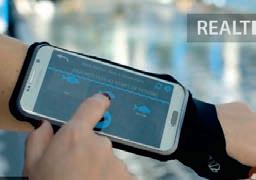
The cloud-based farm management software developed by Aquanetix is in use at more than 200 farms in 31 countries, helping to grow more than 30 species of fish and shrimp.
The US-based aquaculture tech group Innovasea announced yesterday that it had acquired Aquanetix, and that the UK company’s operations would be relocating to Corinth, Greece.
COD farming company Norcod has set out a long term business strategy for sustained major growth.
The Norwegian-based business said in its annual report that it is experiencing increased demand for year-round stable deliveries of fresh cod.

It announced that it is targeting a near sevenfold increase in its annual harvest by 2027.
“The global market demands stable deliveries of fresh cod, and for the first time, high quality farmed cod has been produced on a larger scale and delivered to the market. With wild fish stock under pressure and fishing quotas for cod being cut,” the report says.
CEO Christian Riber told investors: “We have strategically positioned our production facilities in the natural cold-water habitat along the coast of Central and Northern Norway, where we will establish new farm locations in the coming years to execute our long-term business plan.
“We have set a target of approximately 25,900 tonnes (whole fish equivalent ) annual harvest in 2027.
“The global market demands stable deliveries of fresh cod, especially with wild fish stocks under pressure and fishing quotas for cod being reduced.
“As a leading producer of farmed cod, Norcod aims to fill this gap in the market and provide high-quality and fresh cod throughout the year.”
CEO Riber said Norcod’s commitment to the entire value chain, from production to market, ensured stability and control in every segment, setting the stage for solid industrial growth in the years ahead.
“We are proud to have assembled a team of experienced aquaculture professionals who bring their expertise from the salmon farming industry to our cod farming operations.
“Additionally, we have seen a rise in interest and have established apprenticeships for students in aquaculture education, further contributing to talent development in the industry.”
Norcod’s core business area lay in the sea-phase of the cod farming value chain, where the fish grow from 0.1 to 3.5-4 kg in its commercial marine production sites.
Aquanetix co-founder Diogo Thomaz and his team will be relocating to the new HQ, and the company aims to hire more staff there.
Thomaz said: “We’re thrilled to become part of the Innovasea family and add our farm management software to its strong portfolio of egg-to-harvest aquaculture solutions.This is a wonderful opportunity for us to make additional investment into our business to enhance our existing tools and better serve our customers.”
Terms of the deal, which closed earlier this year, were not disclosed.
The company was founded in 2015 and
in 2020 it opened a full service office in Puerto Varas, Chile.
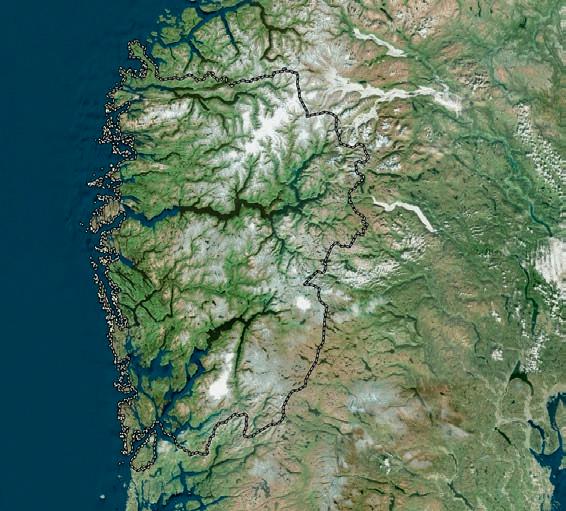
Innovasea CEO David Kelly said: “Acquiring a company of Aquanetix’s calibre presents an exciting opportunity for us. By adding its powerful farm management capabilities to our suite of real-time aquaculture intelligence solutions, we’ll be rounding out our precision aquaculture platform and further helping our customers make data-driven decisions to improve operations, run more efficiently and sustainably and become more profitable.”
He added that Innovasea’s footprint in Greece will help it execute on its growth strategy in key markets like the Mediterranean and Middle East while better serving existing customers in those areas. The group already has offices in the US, Canada, Norway and Australia.

AN outbreak of infectious salmon anaemia (ISA) is suspected at a Mowi-owned site in Norway, the country’s Food Safety Authority has said.
The location is at Kvinnherad municipality in the Vestland region.
Mowi first suspected it had a problem over a week ago and immediately notified the authority before sending it samples for analysis.
A number of ISA outbreaks have been reported along the Norwegian coast in recent months and this location is only a few miles from another site where ISA is also suspected.
ISA is an expensive problem for fish farmers because all the fish in infected cages are usually destroyed whatever their size or age.
The Food Safety Authority has warned that everyone
who travels to the area on fish farming business must take special care to avoid any further spread of the disease.
The Authority said Mowi first suspected a problem on 31 May. It confirmed the company’s suspicions following the testing of samples, which were then sent to the Veterinary Institute for confirmation.
In addition to tough travel restrictions, the Food Safety Authority said: “Localities with proven ISA must slaughter or destroy the salmon, and clean and disinfect the facility before it is left fallow for a minimum of three months.”
It adds that suspicion or detection of ISA means that salmon from the farm cannot be exported to Australia, China and New Zealand. Australia also bans imports from locations within 10 km of confirmed or suspected ISA outbreaks.
ISA does not present a health problem for humans.
Neil first came to Kames as a student in 1985. When he finished his course at Harper Adams university, he returned to work for us and stayed for over 10 years. He took to the aquaculture world immediately; he was fizzing with enthusiasm and incredibly hardworking. He became our hatchery manager and was part of many pioneering projects such as developing the pressure vessel for triploidising eggs. He excelled at getting things done and always being planned and conscientious. He took to life in Argyll like a duck to water, becoming Chairman of the Community Council, organising popular Hogmanay parties in the village hall, and loving the country sports, particularly fishing and shooting. He stood out for his drive to achieve, exuberant company, and natural enjoyment in the life he had chosen.
Neil then left to forge an ambitious career in aquaculture by working at Landcatch in 1998 and then becoming Managing Director of Aquaculture at Hendrix Genetics in 2011, where he was instrumental in developing the business as a global leading player in the aquaculture breeding sector. He travelled all over the world, to Chile, Hawaii, Malaysia and more, seeing some amazing sites and achieving many successes, as well as gaining great regard in the industry and of course creating friendships wherever he went –as clearly seen by the overwhelming tributes that have poured in since the sad news of his death.
I had kept in touch with Neil over the decades and felt sure he was a natural choice to replace me as MD when I retired to the Chairman position in 2021. Neil was delighted to return to Kames and Argyll, and his impact on the company has been tremendous. He fully understood Kames’ values and he was passionate about driving Stuart’s family
ethos and the business forward, whilst understanding that a company of Kames’ size needed to become more structured and corporate.
Neil’s management and communication skills have allowed us to execute a forward-thinking vision for Kames. He has helped to drive our innovative brood stock programme with his genetics expertise, as well as a “Future50” initiative, cementing the values of quality, sustainability and community that Kames was built on with more transparency and long-term strategy. Leading, championing and empowering our teams particularly motivated Neil, and it is a devastating blow to our staff to lose such a passionate, encouraging man, with his gently teasing sense of humour. However, the strength and responsibility he has instilled in his teams will remain, and he has given us real confidence in our route forward.
On a wider industry level, Neil was renowned for being enthusiastic, collaborative and helpful to everyone doing good things in the aquaculture sphere. He knew how much the industry had to offer – on both a personal and global impact level, and he loved communicating that.
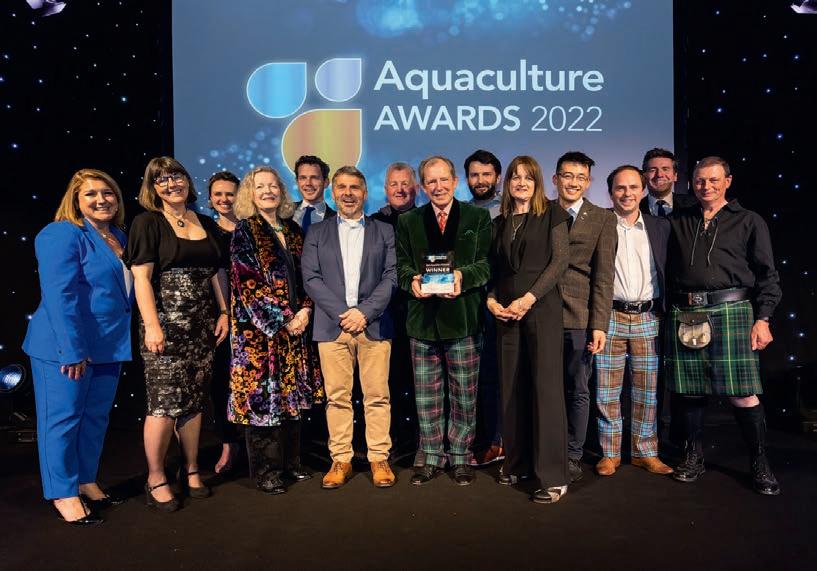
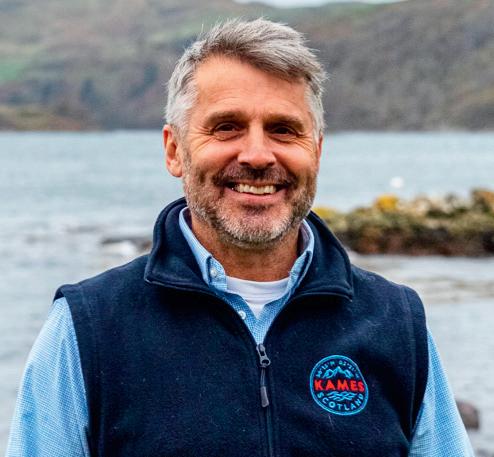
The move back to the West Coast also marked a change of pace for Neil. He had clearly thought about what he wanted from life, about what was important – and was living it. He relished spending more time with his beloved wife and two children as together they immersed themselves back in the outdoor Argyll lifestyle.
It is to them that we offer our greatest sympathy, and hope that they can glean some comfort in the great and farreaching impact that Neil had, and in the truly exceptional man that he was.
Stuart Cannon is Chairman of Kames Fish Farming. Left: Neil Manchester Above: The Aquaculture UK Awards winners 2022It is a devastating blow to our staff to lose such a passionate, encouraging man
growth will target 9,000 metric tons of biomass with goals to diversify species and expand into seaweed cultivation.
Gunnar Bracelly, Petros’ founder and President, said: “We are fortunate to have a strong partner in Innovasea, an industry leader in open ocean farming with proven experience with warm water species such as Red Snapper.
“Being able to rely on Innovasea’s full-service capabilities enables our team to focus on implementing the bold vision of diversifying the Aruban economy and becoming the catalyst for an aquaculture revolution throughout the Caribbean region.”
AQUACULTURE technology business
Innovasea has helped to secure government approval for the first ocean-based fish farm in the Caribbean resort island of Aruba.
The farm, which initially has permission for a biomass of 3,000 tonnes, will be located eight kilometres off the coast of Aruba, and will make use of Innovasea’s submersible SeaStation cage design. The farm will be operated by Petros Aquaculture.
The farm will raise northern red snapper, a high value species with strong demand in the US, but which has a limited and seasonal supply that comes entirely from the fishing industry.

Built over three phases, the farm aims to produce fish in a sustainable, secure and traceable manner. Once complete, it will feature 16 SeaStations and a land-based hatchery and employ close to 100 local team members. Future
Aruba, part of the Kingdom of the Netherlands, is a popular cruise ship destination. The design of the SeaStation cages means they will be submerged most of the time, when they will not be visible to tourists.
“We’re thrilled to be partnering with Petros to create Aruba’s first ocean-based fish farm,” said Langley Gace, Innovasea’s senior vice president of business development. “This is an important project for the country and the region and we’re confident that our open ocean expertise and our proven egg-to-harvest approach to fish farming will help ensure its success.”
A leading businesswomen in Surrey, a town on the coast of British Columbia, has expressed her concern over threats to force more salmon farm closures in the province.
Anita Huberman, President & CEO of the Surrey Board of Trade, was responding to reports that Joyce Murray, Canada’s Minister of Fisheries and Oceans, intends to propose additional closures of salmon farms as part of her salmon farming transition plan for British Columbia.
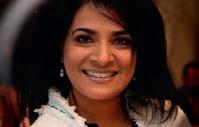
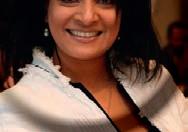
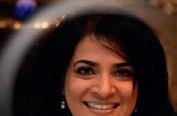
Surrey is the hub of salmon farming in the Vancouver area, and is home to numerous operations in salmon feed milling, fish processing, trucking, packaging, and the provision of goods and services.

Huberman said the community is already experiencing negative impacts due to the already 40 per cent reduction in salmon farming production since 2020.
She added: “We have seen the impacts the closures have had on our businesses in Surrey. Last year Mowi Canada West permanently closed their fish processing plant, which resulted in the loss of 80 direct jobs locally, and this isn’t the only example. There still has been no government action to support these workers.”
Any further closures of salmon farms will mean the removal of the entire salmon farming sector in BC, she said, not only impacting producing companies but many local businesses
in the supply chain on Vancouver Island and the Lower Mainland.
An earlier report prepared by RIAS Inc., an independent economics firm, estimated that salmon farming companies directly contribute CAN $46m in GDP and 344 full-time jobs in Surrey area, and indirectly around CAN $122m and 1,189 jobs are at risk.
Brian Kingzett, Executive Director of the BC Salmon Farmers Association, said: “We are calling on the federal government to bring a more rational approach to the transition plan and include other Ministers in providing leadership to developing a reasonable path forward.”
THE sale of Barramundi Group’s Australian fish farming business has fallen through because the prospective buyer was unable to raise sufficient capital, Barramundi has reported. In a stock exchange announcement made on 24 May, Barramundi said its Australian operations, managed under Marine Produce Australia Pty Ltd (MPA) had been placed into administration with a view to a complete “reconstruction” of the company.

The statement said: “Rob Kirman and Rob Brauer of McGrathNicol were appointed as Voluntary Administrators of MPA and its two subsidiaries, MPA Fish Farms Pty Ltd and MPA Marketing Pty Ltd (“MPA Group”) on 24 May 2023, by its directors pursuant to Section 436A of the Corporations Act 2001
(‘Act’).
“The Administrators are currently making an assessment of the MPA Group’s position with a view to undertaking a restructure or recapitalisation of the MPA Group in line with the objectives of the Voluntary Administration provisions of the Act. The Administrators, with the support from the MPA Group’s management,
intend to continue to operate the MPA Group on a ‘business as usual’ basis while exploring options for a sale and/or recapitalisation of the MPA Group.”
MPS will continue to trade while in administration, and Barramundi’s Singapore- and Brunei-based operations are not affected by the move. Last year it was announced that Barramundi was in talks
with Wild Ocean Australia over the sale of MPA, but it seems that Wild Ocean was unable to find sufficient finance for the acquisition. Barramundi had ambitious plans for expansion in Western Australia, but the project required more capital than the company was able to raise.

a detailed review of its strategic options, including evaluating a smaller scope or size for the farm.”
LAND based salmon farmer AquaBounty Technologies has “paused” work on its planned facility in Ohio, citing cost inflation.The US company has not specified when work will resume, and has left open the question of whether the project might go ahead at a smaller scale.
AquaBounty is the first company to produce genetically-modified (GM) salmon at commercial scale.Their fish combine the DNA of Atlantic salmon with other salmonid species in order to achieve faster growth, and are grown in RAS (recirculating aquaculture systems) farms.
Ground was broken at the new site in the township of Pioneer, Ohio in April this year.The farm was planned for a production capacity of 10,000 tonnes.
In a stock exchange announcement on Friday, AquaBounty’s CEO Sylvia Wulf said: “During the past three years, AquaBounty has been working with its design and construction partners to manage through and mitigate the increasing costs
that were exacerbated by historic inflation levels to complete construction of its Pioneer, Ohio farm. As cost estimates provided by our initial design/construction firm continued to increase, we engaged a second construction firm in January of this year to review the current cost estimates and to rebid the remaining construction elements in order to finalize the project’s Guaranteed Maximum Price (“GMP”), which was integral to completing our municipal bond financing.
“Despite the value engineering and cost reduction efforts we undertook, the GMP estimate that we received came in at a price that is significantly above our previously disclosed estimate of $375m - $395m [£302m - £319m]. Given this information, we cannot finance the project through a municipal bond placement without a significant increase in the Company’s equity contribution. As a result, the Company has put an immediate pause on further construction of the site while the management team undertakes
She added that AquaBounty has been working closely with the Village of Pioneer on the water and wastewater lines for the Ohio farm and the Village has approved the creation of a public utility, which will own and operate the water and wastewater lines required for the farm’s operation. AquaBounty is currently waiting for the issuance of the Right of Way (“ROW”) permit from Williams County. Wulf said Aquabounty appreciated the support and collaboration from the State of Ohio,Williams County Economic Development Corporation and the Village of Pioneer.
Wulf concluded: “We believe in this project and its importance to the Company’s growth strategy. Our focus now is on bringing it to completion in a manner that is prudent for the Company and our shareholders. In the meantime, we intend to continue to supply our customer base with salmon from our Indiana farm, while using that facility to improve our operational practices and to test new technologies in preparation for the Ohio farm start up. Progress also continues at our PEI farms to expand the production of non-transgenic eggs and fry and on our R&D work focused on improvements in our broodstock and the improvements in the overall health and well-being of our fish. I look forward to providing further updates on our review process over the coming months as we strive to create sustainable value for our shareholders.”
growing more seafood at home. This legislation would establish comprehensive standards for offshore aquaculture, helping US producers meet the growing demand for fresh, locally-sourced seafood.”
Senator Schatz said:“Hawai‘i’s diverse aquaculture produced over $80m [£64m] of finfish, shellfish, and algae in 2019. At the same time, the movement to restore native Hawaiian fishponds such as those at He‘eia and Maunalua continues to develop momentum. This bipartisan bill would increase federal support for both.”
The AQUAA Act would establish National Standards for offshore aquaculture and clarify a regulatory system for the farming of fish in the US exclusive economic zone (EEZ). The bill would also establish a research and technology grant program to fund innovative research and extension services focused on improving and advancing sustainable domestic aquaculture.
The introduction of companion legislation in the US House of Representatives is expected soon.

TWO US senators have reintroduced legislation that aims to provide the regulatory framework needed to increase American offshore aquaculture production.
The bipartisan bill, the Advancing the Quality and Understanding of American Aquaculture (AQUAA) Act, sets out to increase production of sustainable seafood offshore in US federal waters and create economic opportunities for American communities coast-to-coast.
The bill has been introduced by Senators Roger Wicker (Republican, Mississippi) and Brian Schatz (Democrat-Hawaii).
Senator Wicker said: “The aquaculture industry is growing rapidly, but the lack of a national permitting system for federal waters has held back development and prevented American producers from
Drue Banta Winters, Campaign Manager of lobby group Stronger America Through Seafood (SATS), commented: “Now is the time for Congress to act to support the expansion of American aquaculture offshore. As one of the most environmentally friendly forms of protein production, aquaculture will ensure American food security by increasing our supply of healthful and affordable seafood sustainably.
“Communities across America would benefit, creating new job opportunities for American workers throughout the US supply chain, including for fish farmers, feed producers and manufacturers, and seafood processors, as well as for American famers of crops that can be used in fish feed, such as corn, soybeans, peas and more.”
THE Tasmanian government has drawn up a long term plan for the state’s salmon farming industry.
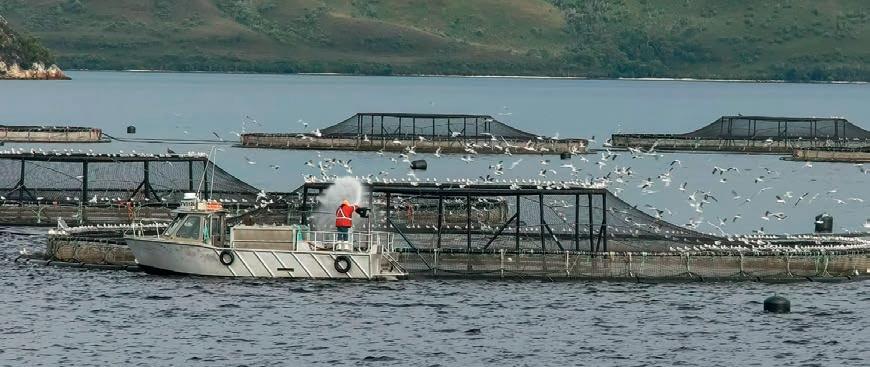
A key aim of the strategy is to restore declining public trust in the sector. Primary Industries Minister Jo Palmer admitted that support for salmon farming had declined and said: “This is an industry that desperately wants the Tasmanian people’s approval.”
But she also said the number of critics who wanted the industry closed down was small, but very noisy.
The Tasmanian government, she added, was committed to a thriving industry – one that was economically successful and environmentally responsible.
The Tasmanian Salmon Industry Plan 2023 sets out aims and actions in four core priority areas:
• Sustainable industry;
• Healthy ecosystems;
• Prosperous communities; and
• Contemporary governance.
The document promises a revamped regulatory system and “improved” penalties for companies breaching the regulations. It also says that for proposed new farms, “the Government will support planning proposals in areas that are further away from land, in higher
energy, more exposed and deeper water.”
Jo Palmer said, launching the plan: “Tasmania is surrounded by temperate oceans, with highly valued wild fisheries and exceptional opportunities for diverse forms of aquaculture.
Over the past 40 years the Tasmanian salmon industry has emerged as a leader in innovation and producing premium seafood.
“We are well placed to build on our natural advantages, to provide more sustainably sourced seafood while protecting our unique marine ecosystems.
Salmon is Tasmania’s largest primary industry and has become Australia’s most valuable aquaculture sector.”
The Minister said Tasmania will produce a plan to feed the state, wider Australia and other parts of the world, This would be supported, she said, by world class research and development, and new forms of partnerships such as participation in the Blue Economy Cooperative Research Centre.
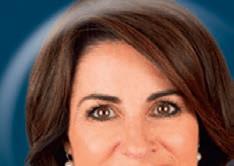
She pledged to continue to support businesses large and small, with an extensive consultation process among the local community.

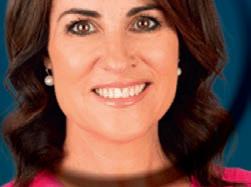
Tasmania is Australia’s main salmon producing region, but most of the major companies have fallen under foreign ownership over the past two years.
Critics of the industry said the plan contained very little detail, accusing the government of a “cynical public relations exercise”.

COOKE Aquaculture has once again picked up a platinum honour at the “Canada’s Best Managed Companies” awards event.

The aquaculture division is part of the wider Cooke Seafood group and includes extensive salmon farming interests in Orkney and Shetland.
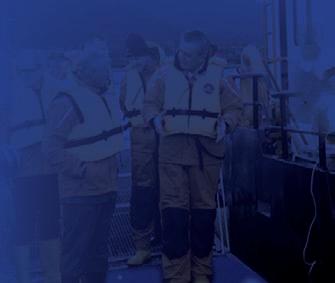
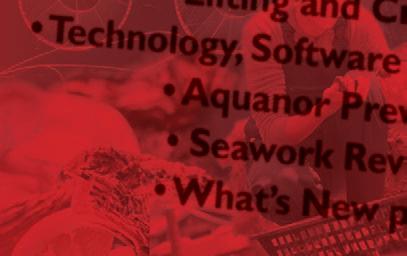
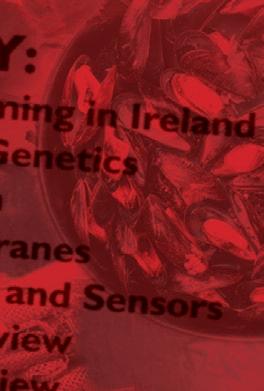

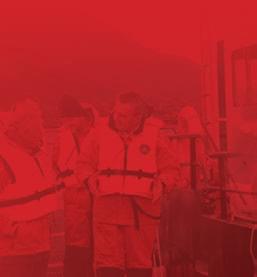
It is the 18th consecutive time that Cooke has collected this award.
CEO Glenn Cooke said: “We are dedicated to maintaining our Best Managed Platinum Club designation each year.
“Our people are our most important assets, and I am personally so proud of the care and commitment they bring to their jobs each day.
He added: “It is important that we continue to provide for our communities and cultivate our oceans with care and it means a lot to be
recognised nationally for this, along with our overall business performance.”

Canada’s Best Managed Companies remains one of the country’s leading business awards programmes.
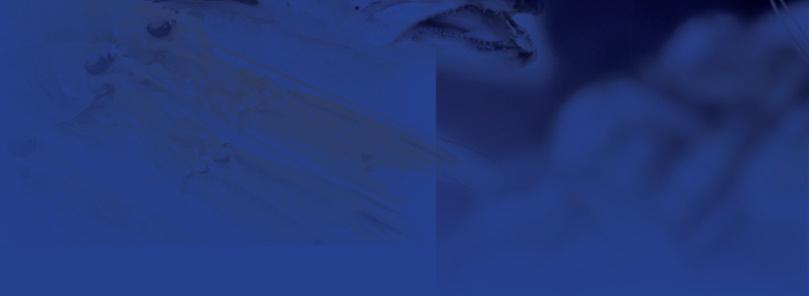

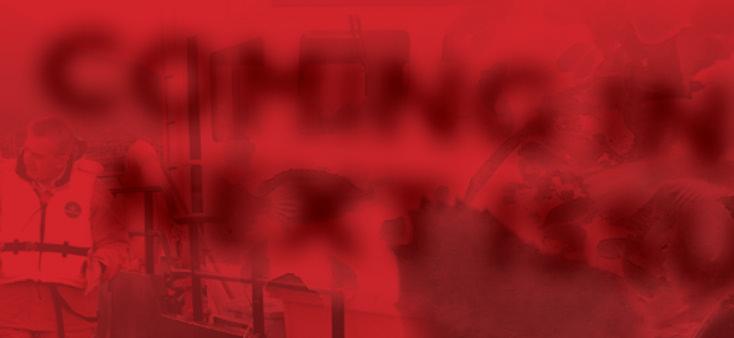


Each year, hundreds of entrepreneurial companies compete for this designation in a rigorous and independent evaluation process. Applicants are evaluated by an independent panel of judges with representation from programme sponsors and special guests.
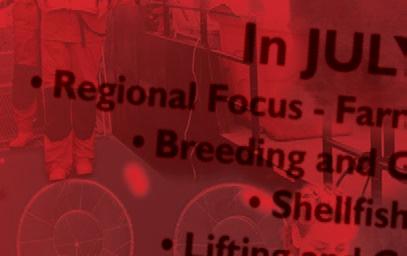
Cooke Seafood has been busy on the acquisition trail over the past year, having taken over the Tasmanian salmon company Tassal, Europe’s largest shrimp and prawn processor, Morubel NV and the large US seafood distributor Slade Gorton.
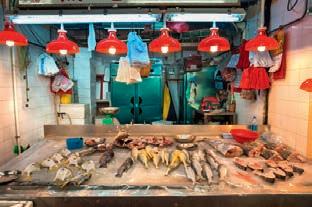
THE global market for salmon and other seafood could be changing, with increasing demand in Asia, the latest data from the Norwegian Seafood Council suggests.
The Council’s CEO Christian Chramer said in his latest monthly report that while Europe clearly remains the largest single market for Norway’s seafood, there were signs of a shift in demand to other parts of the world.
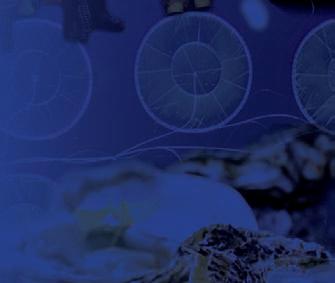
Europe takes 68% of Norway’s seafood overall exports, Asia 21% and North America 9%.
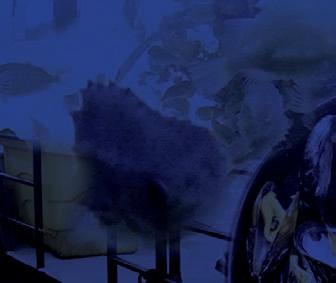
But Chramer added: “We are seeing a shift in total Norwegian

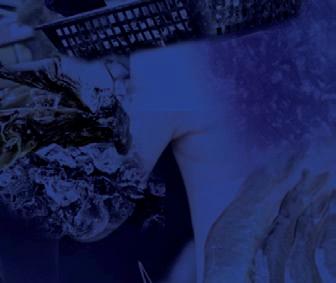
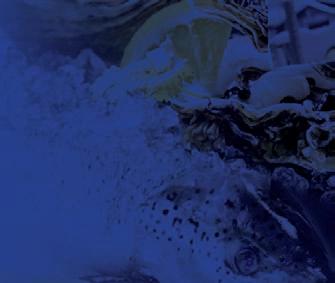
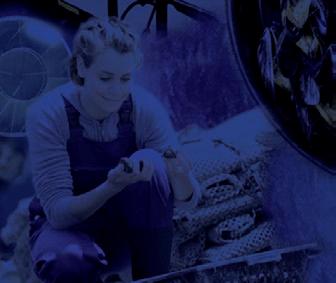


















seafood exports from Europe to overseas markets such as Asia and North America. In May, we have never had a lower European value share [comparing May year on year] than this year.”
Seafood analyst Paul T. Aandahl added: “China had the greatest value growth in May, with an increase in value of NOK 218m (£16m) or 83% on the same period last year.”
The Council also reports demand for salmon in China rising, ending at 3,297 tonnes, 86% up on a year ago.
But as the Council’s China Director Andreas Thorud points out, May 2022 was affected by a full shutdown in Shanghai and a great deal of uncertainty in the market due to Covid uncertainty in China at the time.
“Since the turn of the year, the re-opening in China has created a strong demand for salmon that has persisted,” Thorud added.


SOFINA Foods has appointed one of the food industry’s highest profile figures as the new chief executive for its European division which includes Young’s, the UK’s largest seafood company.
He is Ash Amirahmadi (pictured) currently managing director of Arla UK, which means he switches from the problems of the dairy industry to the challenges of buying cod, haddock and salmon.

He takes over in August from Michael Latifi, who stepped in as CEO for Sofina Foods Europe in 2021 when the Canadian parent bought Young’s and other operations in the Eight Fifty Food Group.
Latifi remains the founder, chairman and chief executive officer of Sofina Foods Inc in Canada.
Amirahmadi is regarded as a leading figure in the UK food sector and was awarded the OBE earlier this year.
Born in Iran, he came to the UK as a youngster to escape the impact of the Iran-Iraq war.
After graduating, he began his career with Unilever and spent time in various businesses before joining Arla in 2004.
Sofina Foods Europe, a subsidiary of

Sofina Foods Inc., is one of Europe’s leading manufacturers of processed protein products for both retail and foodservice customers via its Karro, Young’s Seafood and Greenland Seafood subsidiaries and has operations across the UK, Ireland, France and Germany.
Latifi said: “We are delighted to welcome Ash to the Sofina family. I am confident that Ash’s deep experience and reputation within the grocery and farming sectors will help us deliver ongoing success across our European operations and demonstrate our continued commitment to quality and innovation.
“Ash joins us at an important time for the industry. He will help Sofina Foods Europe lead the way in developing a
more sustainable supply chain, capable of producing great-tasting, affordable and high-quality products for consumers and greatly contribute to our vision.”
Amirahmadi added: “I am delighted to be joining Sofina Foods and relishing the opportunity to work with Michael Latifi and the Sofina Foods Europe team to build on their significant progress in transforming the business towards category leadership.
“Sofina Foods has a track record of working in partnership with its customers and suppliers, developing sustainable and resilient supply chains, investing in its people, adding value to categories, and long-term commitment to social responsibility across multiple stakeholders.”
SALMON producer Mowi is to cut an unspecified number of jobs at its secondary processing plant in County Donegal, Ireland.
The company said it has been talking to staff at the facility, which is sited on a peninsula in the far north of the country.
Mowi has been carrying out a streamlining review of jobs across its global set-up, announcing earlier this year that around 430 jobs were likely to go worldwide.
Despite record profits last year, the company is understood to want a 12% reduction in its workforce worldwide, saving around £20m to help combat soaring cost inflation.
This is expected to be carried out by streamlining the business, introducing more automation and renegotiating contracts with suppliers.
A company spokesman told the Irish press: “It is with great regret that Mowi Ireland has begun a programme of consultation with staff regarding a reduction in employment numbers.
“Following a global review, a decision has been reached to streamline a number of processing plants which are under capacity.
“This will result in secondary fish processing ceasing in Ireland by October 2023 leading to a number of redundancies at the company’s Rinmore base in Fanad, Donegal.”
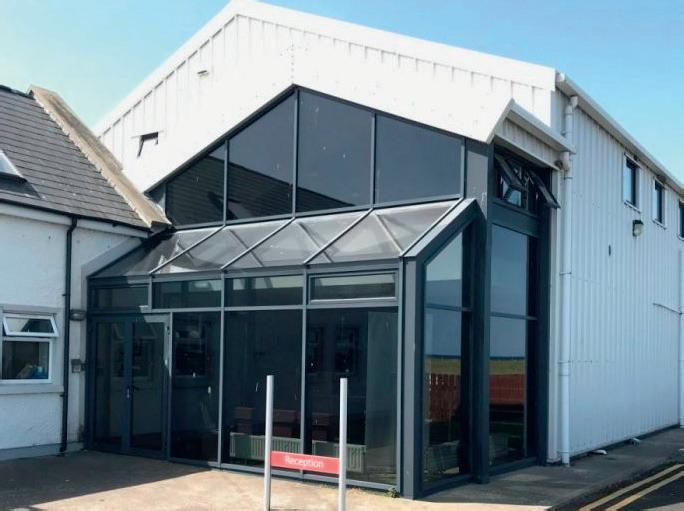
A consultation process has commenced with a view towards redeploying staff elsewhere within the company in Donegal.
“The consultation exercise will be used to establish if staff, who currently work in secondary production, can be deployed elsewhere within the company’s Donegal headquarters.”
Mowi said it could not put a figure on the number of jobs likely to go until the consultation process has been completed.
“Ash joins us at an important time for the industry ”
“A decision has been reached to streamline a number of processing plants which are under capacity ”Above: The Mowi office in Donegal
UK-based Direct Seafoods has launced an apprenticeship scheme for new and experienced fishmongers. The bespoke course, developed in partnership with Crosby Training, aims to further enhance the skills and knowledge of wholesale fishmongers to take their career development to the next level.
The course covers food safety, health and safety, picking and packing and knife skills. Each of these modules, over a 12 month course, contributes to the qualification of a Level Two Diploma upon completion of an assessment, with each module tailored to the apprentice’s level of ability.
So far the business has taken on several apprentices across three of its UK sites. The Direct Seafoods group includes Bidfresh, which has 12 fishmonger brands around the UK.

Neil Poxon, Operational Support Manager at Bidfresh commented: “I’m delighted that Direct Seafoods is utilising this great initiative. It’s something I’m thrilled to be able to offer our current and future employees and am incredibly passionate in seeing it succeed.
“This fresh approach to recruitment will help us not only in achieving our ambitious growth plans but also providing sustainable, progressive careers for those involved in the scheme moving forward, helping us to retain and develop the fantastic talent we have within our business.”
SEAFOOD producer and processor
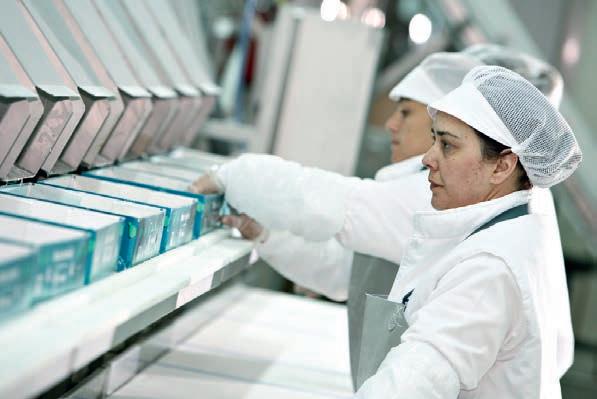
Grupo Profand has reported increased sales for 2022, but it saw profitability cut thanks to its decision not to pass on rising costs to customers.
Profand, based in Vigo, is one of Spain’s largest seafood companies and has operations in 10 countries, ranging from processing to catch fishing and aquaculture.
For 2022, Profand reported revenue up to €929m (£798m), up 15% on revenue for 2021; but the companay also said that earnings before interest depreciation and
tax (EBITDA) were down 19%. The company is privately held and the figure for EBITDA was not made public.
The company said that profits had been hit by costs, including high fuel and electricity prices, freight charges and staff costs.
Profand has been on an acquisition spree over the past few years, buying up US firm Stavis Seafoods in 2018; processor and seafood distributor Caladera, and Seafreeze in 2019; and in 2021, Greek aquaculture business Kefalonia Fisheries.

RAW material inflation, especially for salmon, has had an impact on Iceland Seafood International’s first quarter results.
But the company adds, in its report for Q1, that there are signs of a more balanced external environment on the horizon.
ISI reported a 23% increase in sales from a year to €123.1m (£107m), along with a slightly lower net margin of €9.8m (£8.52m) leading to a net loss of €2.2m (£1.9m) against €0.8m (£695,000) in Q1 2022.
The Q1 report said the quarter was marked by prices increases in key import factors, mainly salmon, which is important in its Spanish and Irish businesses.
The report said: “Steep price increases in salmon negatively impacted sales volume in the quarter. Price increases offset the impact of lower volume, leading to a slight growth in sales in Euro terms.
“These increases in salmon prices caused similar challenges as in the same period last year, as it takes time to push cost increases through to customers.
“Based on current forward prices, the price of salmon peaked in March this
year, compared to the beginning of May 2022. The outlook for the remainder of the year is good, as salmon prices are expected to come down and stabilise.”
The group said seafood prices are still high and have increased more than prices of other animal protein.
“This has decreased demand, reflected in lower volumes. After strong sales in S-Europe in March, demand fell in April.
“The outlook for the coming tourism season in Spain is good, which should positively impact demand. Salmon prices have stabilised after a sharp increase in Q1 23 and are expected to ease further in the coming months.”
ISI put the sale of its Grimsby production site on hold late last year after it failed to find a suitable buyer. The loss from that operation was €2.3m (£2m) which was in line with budget.
The company added: “Significant steps have been taken towards improved operation in the period, in line with what was previously communicated. “ The process of recovering inflationary costs had come through as planned, production efficiencies and the installation of new equipment.
But “a negative market trend” where volume has declined through significant consumer price increases had a significant negative impact on sales.
“It needs to be seen if these impacts are temporary or long-term, but this will delay the point where IS UK will reach a positive cash flow,” ISI said.
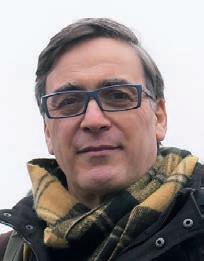
Speaking to the Herald newspaper about the Scottish Government’s plan for Highly Protected Marine Areas (HPMAs), the Net Zero Minister, Mairi McAllan said that she firmly believes that you don’t impose policies on the communities. You work hand in hand with them to make them work, she argued, and that’s the only way to do it sustainably.
Sadly, the Scottish Government does not seem keen to apply the same approach to the proposed sea lice risk framework which SEPA aims to impose on the salmon farming industry. The problem with the sea lice risk framework is that unlike HPMAs, there is not the slightest possibility it will work, regardless of whether SEPA and Marine Scotland Science work hand in hand with stakeholders or not.
The whole narrative of sea lice impacting on wild fish is wrong and has been since sea lice were first implicated in wild fish declines in Ireland during the 1980s. The fact that the science does not support the risk framework appears to make little difference. Instead of working hand in hand with the industry, SEPA and MSS are only prepared to discuss selected parts of the science and hence the steamroller that is the framework continues to move towards its unwanted and unneeded imposition on salmon farms.
The basis for the risk framework is claims from the wild fisheries sector over many years that sea lice from salmon farming is responsible for declines of wild salmon and sea trout yet, there is hardly a shred of evidence to support this claim. Even Marine Scotland Science’s summary of the science states that some of the observational data that show wild fish declines do not prove a causative link with aquaculture. The relevant observational data is now over 15 years old.
Last month, as part of an ongoing complaint, Marine Scotland Science said that the organisation does not use individual river catch data for any research or monitoring purpose. How then can they link the appearance of any farm with changes in river stocks of wild salmon and sea trout?
The truth of the matter is that they don’t. Instead of using real data, Marine Scotland Science relies on modelled studies to justify the imposition of this risk framework. This is why, in my opinion, they are so reluctant to work with experts from the industry to discuss the viability of the framework. Instead, SEPA, supported by Marine Scotland Science propose to impose the framework and see then whether it works or not.
There is a lot of nonsense written about the impacts of the salmon farming industry. Every Tom, Dick and Harry seems to have an opinion, although most are anglers, NIMBYs or vegans. If one believes everything that is written, the seas around Scotland are a dead zone with no marine life at all, killed by fish waste, medication or simply foreign greed.

Yet, in her interview with the Herald, Mairi McAllen highlighted the success of the existing Marine Protection Area at Lamlash Bay off the Arran coast. She highlighted that after 10 years some species are demonstrating a 400% increase in abundance, which she said is incredible.
Lamlash Bay was originally established as a No Take Zone in 2008, covering an area of 2.67 sq km. No fish or shellfish could be taken from this area, including from the shore. Local activists were keen to protect this area because it is home to one of the largest beds of maerl, a coraline pink seaweed, in Scotland.
In 2016, the No Take Zone became
Above: Lamlash Bay and Holy Island
Below: The sea bed at Lamlash Bay
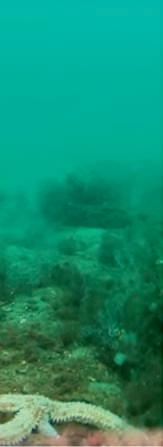
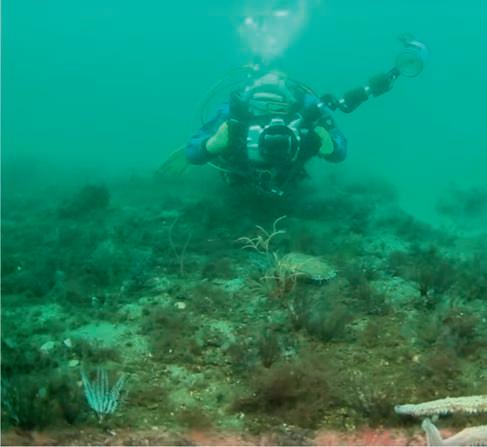
part of a much larger legally enforced Marine Protected Area covering 282 sq km. This MPA is not a No Take Zone, as some forms of fishing are allowed. Also, within the MPA is the Lamlash Bay salmon farm which was established in 1988. The farm’s location is also very to close the original No Take Zone.

Whilst the local groups on Arran have actively campaigned against plans to open a second farm on the opposite side of the island, there is very little comment about the impact of a farm that has been located right in Lamlash Bay for the last 40 years. Any success of the No Take Zone and the MPA are both despite the presence of this salmon farm. Could it be the impact of this farm is not as claimed for salmon farming as a sector?
Restricting fishing in protected areas is one thing but the curtailment of all human activities might be a step too far, at least until the benefits are proved. One of the problems with HPMAs could be the perception that they would be imposed over such



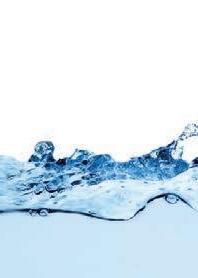
a large area in one go. Perhaps local communities need to be persuaded of the benefits by a more measured approach.



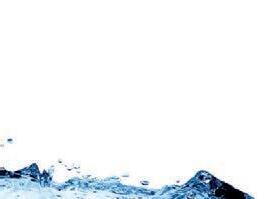

In much the same way, the salmon farming industry needs to be persuaded that the sea lice risk framework will achieve its aims. Unless SEPA and Marine Scotland Science are more open to discussion of all aspects of the proposals and not just those SEPA and Marine Scotland Science want to discuss, I can see that the salmon farming industry will be demanding that they be treated in the same way as other local communities and not have this policy forced upon them.
See also Salmon Scotland, page 26.

Instead of using real data, Marine Scotland Science relies on modelled studies
When Professor Russel Griggs finalised his report on the aquaculture regulatory process, he made several things clear.

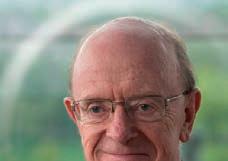
He said his recommendations – accepted in full by the Scottish Government – should lead to a new framework within 12 months. That was 16 months ago.
He also said the “degree of mistrust” was at a level he had never seen before – an observation which those in the salmon sector took seriously and have sought to remedy.
Unfortunately, despite appointing a new Chief Executive, the Scottish Environment Protection Agency (SEPA) continues to choose a different path.
At the end of May, along with our business Managing Directors, I was due to meet with Scottish ministers – something that SEPA officials were aware of, as a government-funded agency.
But a few days before that, SEPA decided to brief the BBC about its latest consultation on the sea lice risk assessment (SLRA) framework, and its proposals for protection zones.
We only found out about this because the BBC, quite properly, did its job and came to Salmon Scotland for a reaction.
As that news piece went to air on Wednesday 31 May SEPA still hadn’t given us the courtesy of providing the document for the sector to digest. Nor had they published it on their own website.
And SEPA wonder why there is a culture of mistrust when they behave like this?
We all agree the regulatory regime for aquaculture in Scotland is not fit for purpose.
The need for urgent change is firmly recognised by Scottish Government ministers, and it is vital that civil servants press forward on the “rapid progress” that was promised on streamlining the aquaculture consenting system.
Griggs outlined how to make Scotland a world leader in regulating the blue economy.

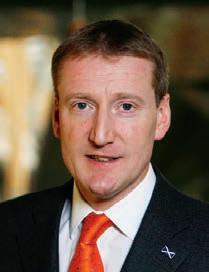
This is about better – not less – regulation, and we are ready to work constructively to deliver improvements across our shared social, economic and environmental priorities.
If the system is more streamlined, as recommended by Griggs, we can deliver the responsible and sustainable growth needed to continue creating vital jobs in the Highlands and Islands, generating millions for Scotland’s economy.
With a low carbon footprint and alignment with the UN’s sustainable development goals, the blue economy has a vitally important future ahead of it.
As part of their “one planet prosperity” strategy SEPA is supposed to be working “to protect and enhance Scotland’s environment, helping communities and businesses thrive within the resources of our planet.”
Instead, it has chosen to dredge up the issue of sea lice once again, without recognising the huge innovative progress that our businesses achieve in tackling this naturally-occurring challenge.
The current enforcement regime regulated by the fish health inspectorate requires operators to take action to prevent, control or reduce sea lice, and combined with our effective sea lice management measures this makes the instances of high lice levels extremely rare.
Husbandry and preventative methods include fallow periods, stocking coordination, cleaner fish, lice skirts, net cleaning, good nutrition, and larger smolts.
Should a treatment be necessary, we have advanced technology in the form of hydrolicers, thermolicers, and

As SEPA launches yet another consultation on its sea lice risk assessment framework, Tavish Scott questions the priorities of those regulating the Scottish salmon sector
freshwater delivery systems.
Our stocking, preventative, and technological sea lice management measures have enabled us to greatly reduce our reliance on authorised veterinary medicinal treatments which we now only use when required in specific situations.
It’s also important to recognise that sea lice from farm-raised salmon are not responsible for the decline in wild salmon numbers recorded over many decades.
And you don’t just have to take my word for that.
SEPA’s Head of Ecology told MSPs in a Holyrood committee session in November 2020: “I will start with the big picture. Do we think that sea lice from farmed fish are responsible for the declines that we have seen over the decades in wild fish? No.”
Indeed, speaking to the BBC, SEPA also said this week: “What this means for farmers is that they need to continue doing what they’ve been doing very well over a number of years, which is innovate to manage sea lice.”
SEPA added that salmon farmers are “very good at adapting and innovating to find solutions for the longer term”.
So if SEPA does not believe salmon farming is behind the decline in wild salmon, and we’re effectively managing naturally occurring sea lice, what is the point in attempting to introduce 120 protection zones across the west coast of Scotland?
As part of its Wild Fisheries Strategy the Scottish Government lists 14 different pressures on wild Atlantic salmon – several of which relate to climate change and habitat loss.
“Salmon are a cold water adapted species that are highly sensitive to river temperature,” the government points out.
Also: “The loss of natural riparian woodland can increase temperatures and have other detrimental impacts, while excessive overshading by commercial forestry can reduce instream salmon growth and numbers and exacerbate acidification”.
Scotland’s salmon farmers care deeply about the decline in wild salmon numbers.
That is why we set up the £1.5m Salmon Scotland Wild Fisheries Fund, which helps to restore habitats among other measures to save the king of fish.
It is being co-ordinated by fishery manager Jon Gibb, who has brilliantly championed a constructive relationship between the farmraised salmon sector and fisheries and angling groups.
One of the other pressures facing wild salmon listed by the government is “water quality”.

It points out that “salmon require clean, well oxygenated water to thrive. Point source (e.g. septic tanks or licensed discharges) and diffuse (e.g. acidification, eutrophication, sedimentation) pollution can cause direct
mortality, or stress that affects subsequent growth and survival.”
Sadly, earlier this year, it emerged that seven stretches of Scottish rivers totalling more than 45 miles are not expected to fully recover due to pollution from sewage.
The Forth Rivers Trust told the i newspaper: “Ensuring Scotland’s iconic salmon have fresh, clean water is vital for their survival and we call on SEPA and Scottish Government to ensure rivers around Scotland are not forgotten about and properly protected for the future of our wildlife, with measures put in place to ensure all rivers meet good condition.”
Of course this is in an area where salmon farms do not exist, but analysis by Salmon Scotland shows that more than 3 million cubic metres – equivalent to 1,200 Olympic swimming pools – of waste was released into rivers in salmon farming regions in 2022. This sewage crisis should surely be the top priority for Scotland’s environmental regulator?
And yet in a press release outlining its “priorities for 2023-24”, SEPA failed to mention sewage or waste.
I have no doubt that everyone at SEPA cares passionately about the environment, just like salmon farmers do.
So let’s focus on the very real challenges facing our natural environment such as water quality, and ensure an even more sustainable future for both farm-raised and wild salmon.



The news that Spanish seafood group Nueva Pescanova plans to invest £55m in the first industrial scale common octopus (Octopus vulgaris) farm this year, has been met with outrage by scientists and environmentalists.

The company’s plans to farm up to one million animals in the 50,000 square metre facility have been on the cards since the company announced in 2019 that it had managed to close the octopus breeding cycle, following eight years of research. The company has since bred five generations in captivity.

News of the new facility was also not welcomed by a growing number of influential animal rights charities including PETA, Compassion in World Farming and the Aquatic Life Institute, who are making their opposition to the project loud and clear. They believe that farming octopuses together in large tanks, when they are naturally solitary animals, would be “torture on an industrial scale.”
Members of the public are also weighing in, particularly those who have watched the Netflix film My Octopus Teacher, which did so much to raise awareness about the sentience of octopuses.

More than 140 organisations and academics also recently signed a letter to the government of the Canary Islands warning about the environmental risks of the proposed octopus farm, and potential investors have been made aware of the significant suffering that farming could potentially cause them.
The Spanish government has been called on to recognise octopuses as sentient creatures and to reverse the decision to allow the farming project to proceed.
Opponents argue that such large-scale production would be energyintensive, produce dangerous emissions, and lead to further depletion of wild fish stocks to provide feed for the captive animals.
In its defence, Nueva Pescanova points out that farm is designed to be highly energy-efficient. It will also be managed using advanced, disruptive technology, commonly referred to as Aquaculture 4.0.
On 8 October 2022 – World Octopus Day – protests were staged outside Spanish embassies around the world, including Tel Aviv, Barcelona, Buenos Aires, Toronto, Mumbai and Mexico City. The word has indeed been spread widely!
In April this year, the UK’s Royal Society for the Prevention of Cruelty to Animals (RSPCA) expressed its serious concern over the plans to produce 3,000 tonnes of octopuses per year in tanks and demanded a halt to the proposals.

According to Dr Marc Cooper, head of farm animals at the RSPCA, octopuses are highly advanced, complex and intelligent marine animals that tend to be solitary creatures. Their suitability to be farmed is highly questionable and there is a significant gap in knowledge on how to properly care for them and meet their needs in a commercial setting.
Dr Cooper also said he was not aware of any humane slaughter methods for octopus that could be carried out on a commercial scale. Nueva Pescanova plan to kill the octopuses using ice slurry, which opponents including Eurogroup for Animals, say would produce a slow and painful death.

However, the company claims to have created the perfect conditions for the octopuses to grow, that take into account their need for adequate space, optimum temperature, water quality, food and an absence of predators. The company is using the EcoBiological Production System, which is an advanced zootechnical solution that can recreate the natural conditions of a species in the wild in aquaculture tanks.
The octopuses will be housed in different sized tanks depending on the stage of their lifecycle and size, and their welfare is guaranteed, including at harvest.
Nueva Pescanova has undertaken extensive research in collaboration with IIM-CSIC, National Autonomous University of Mexico, CIIMAR, University of Malaga, University of Vigo, the Spanish Institute of Oceanography








The company claims to have created the perfect conditions for the octopuses to grow
(IEO) and Samertolameu, including population density studies and investigations to determine levels of stress hormones in cephalopods to help maximise their welfare. The research demonstrates, the company says, that the animals normally adapt to group environments without territorial aggression. Also, captive breeding does not appear to have a significant impact on the microbiome of the octopus, which is responsible for keeping the animal healthy. As a result, the company concludes that the stable, controlled, pathogen-free environmental conditions of its aquaculture facilities avoid stress to the animals and may positively influence their health and well-being.
A major benefit of farming octopus in captivity is the ability to reduce pressure on wild stocks. Octopus ranching is practiced by other companies, but Nueva Pescanova has now raised the bar. The company also hopes that their breeding programme could be used to release juveniles back into the wild in future, to help repopulate stocks.
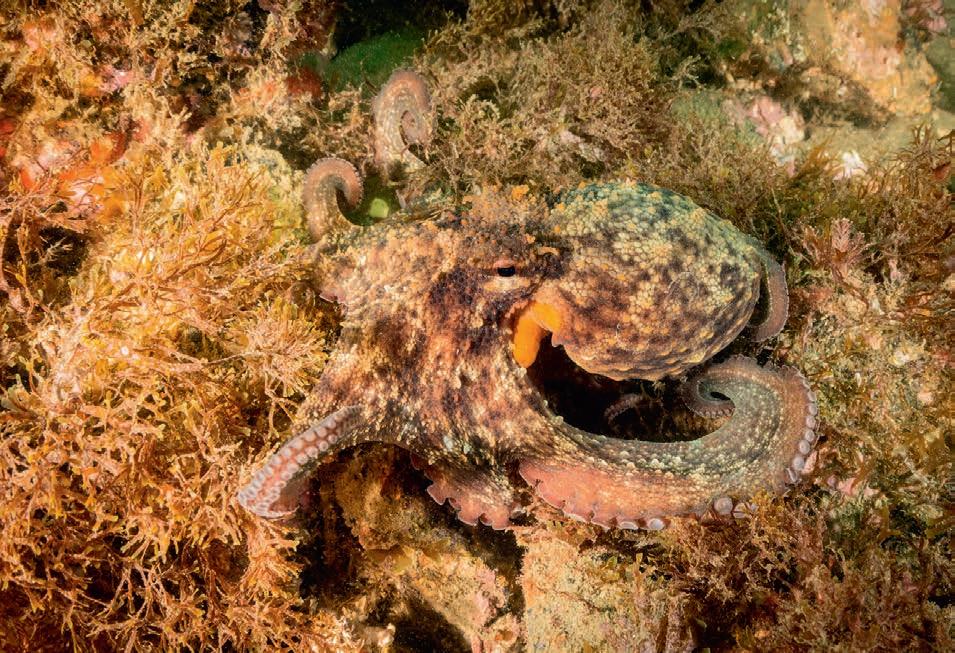
Nueva Pescanova is developing its own sustainable feed, using offcuts of fish from its extensive seafood business interests. The company operates a fleet of more than 60 vessels that fish in the coastal waters of Angola, Argentina, Mozambique and Namibia, operates shrimp farms in Ecuador, Guatemala
by the National Autonomous University of Mexico (UNAM) for the Yucatan red octopus (Octopus maya), which is also farmed. Research is ongoing to widen the basket of raw materials suitable for octopuses.
Despite all the reassurances by Nueva Pescanova, a viral petition by campaign group Eko to capture the world’s attention to the octopus farm had attracted more than 250,000 signatures at the end of May. Another petition by Avaaz demanding a global ban on octopus farming, was nearing 1 million signatures.
According to the 2021 Sector Sustainability Update on Octopus by the Sustainable Fisheries Partnership (SFP), global annual production has been around 500,000 tonnes in the five years to 2021 (FAO). An estimated 60% of octopus catches come from the Pacific Ocean, and 28% from the Atlantic Ocean. Whatever the objections, the demand for octopus is increasing world-wide, particularly in Mediterranean countries, Asia, Mexico and the USA and aquaculture can potentially fill the gap.
An exceptional oyster, at the
An exceptional oyster, at the
The ORKA oyster is selected for its survival rate, its shape and its colour, all for the sake of meeting your expectations.
The ORKA oyster is selected for its survival rate, its shape and its colour, all for the sake of meeting your expectations.
Variété : Crassostrea gigas oyster
Variété : Crassostrea gigas oyster



Tailles : G1.5 to G8
Tailles : G1.5 to G8






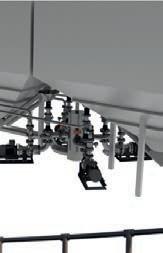

France-based Ÿnsect, a leading operator in the insect production sector, has launched a genotyping chip named Axiom® YNS_Mol1 for mealworms (Tenebrio molitor), which will allow for selection based on the genomic diversity of the species. Genotyping will help producers to find strains of mealworm that require less water and are more resilient in the face of climate change. The chip, developed with Thermo Fisher, will enable Ÿnsect to select for survivability, size and other factors in mealworm larvae, without risking genetic inbreeding. ŸnFABRE hopes to set up farms dedicated to genetics, supplying the Ÿnsect vertical farms with higher performing lines of mealworms, increasing productivity by 15 % per year while ensuring greater resistance to disease.
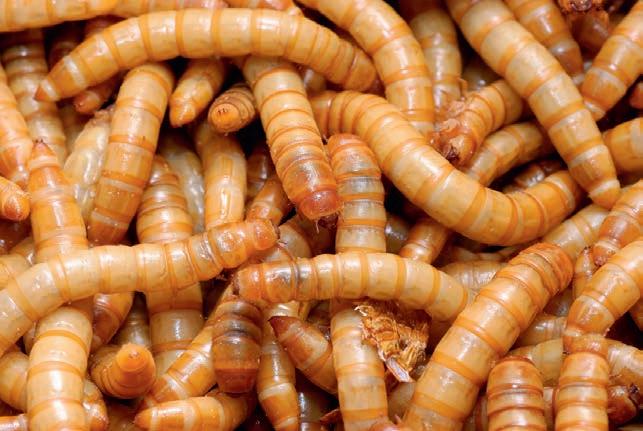
Independent salmon farmer Loch Duart has switched to BioMar’s Blue Impact feed, citing the product’s low carbon footprint, high levels of Omega-3 and the fact that 75% of its marine ingredients are sourced from fish processing by-products, reducing the levels of wild caught fish required and thereby helping to preserve wild stocks.
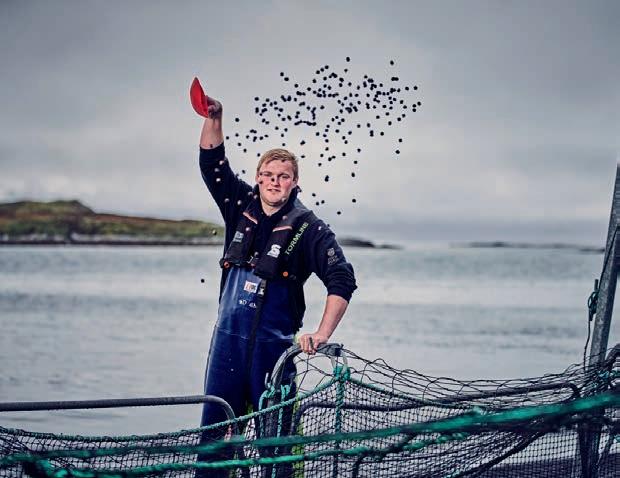
Mark Warrington, Managing Director of Loch Duart, said: “BioMar’s holistic approach to sustainability, with Blue Impact addressing multiple sustainability challenges in the industry, is a key driver for us switching to this diet. At Loch Duart, we are serious about reducing our impact on the planet because it’s the right thing to do.”

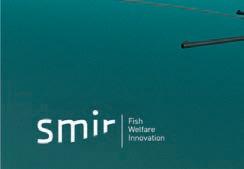
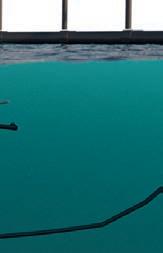
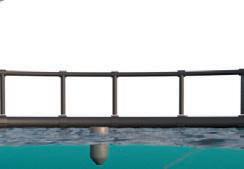
Smirfeeder is a new feeding system that uses water as a transportation source for feed pellets. The system is designed for efficient and gentle transport of feed and comes with significant cost and environmental benefits compared to traditional airborne systems.
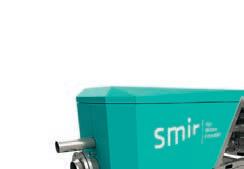
The system is well suited both for newbuilds and as a retrofit on existing feeding platforms.
Smirfeeder is designed for standard sinking pellets, as well as for the introduction of floating pellets.
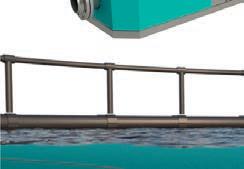
• Allows the farmer to improve feed conversion ratio
• High feeding capacity
• Reduced power consumption
• No wear and tear on the feed pipes
• Low noise levels
• FF Spreader to ensure optimal distribution of the feed
• Multifeeder Unit
smir.no
While salmon feed represents a huge element in the European aquafeed market, aquaculture involves a range of species and the feed for all them is continually being fine-tuned.
This includes not only freshwater farmed species such as tilapia and catfish, but also the cleaner fish used by salmon farmers to keep sea lice numbers down.
Fish Farmer this month focuses on two facilities representing the state of the art in their fields, each of which have recently been upgraded: the Alltech Coppens Aqua Centre (ACAC) in the Netherlands and World Feeds’ plant in Yorkshire, England.
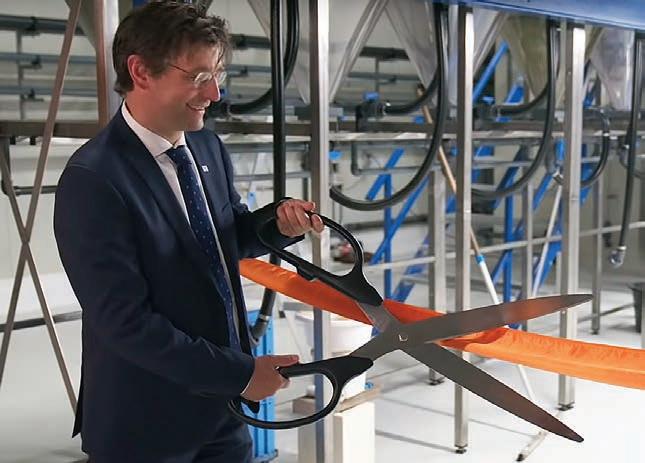
The ACAC, Alltech Coppens’ research facility in the Netherlands, has been in operation for just over two decades. Initially it shared the site with a producer of ornamental fish, and over time it grew more and more into an aquaculture research facility. In 2016, when international feed group Alltech acquired Coppens International, the parent company saw the value of research in aquafeed and signficant investments were made to expand the facility
Last year another RAS (recirculating aquaculture system) was added to the ACAC, with the official opening in September.
The new RAS is a variation on the model developed by the University of Guelph, Canada and was installed with the help of Zebcare, a RAS specialist and subsidiary of Netherlands aquaculture business Fleuren & Nooijen.
Robin Biermann, ACAC Manager, says:
“We can keep fish to any specification –warm water or cold, freshwater or saltwater.

“So far the facility has been mainly used for African catfish and trout. But it is also capable of housing, for example, sturgeon, European perch, eel or tilapia. It depends on where there is a need to improve something.”
He adds: “There are no ‘complicated’ species; you just have to find the small adjustments to make it work.”
The RAS system consists of a holding unit, where the fish are housed in an array of tanks, and a filtration unit. In the latter wastewater is first filtered mechanically by a drum filter. The second step is biofiltration, via a “moving bed” filter, an aerated basin filled with shell-like biocarriers, which provide a surface for beneficial bacteria to grow on. These transform ammonium into less harmful nitrate.
The filtered water is then either heated or cooled as required, disinfected by a UV column and then flowed back into the holding tanks.
The new system allows water to be temporarily stored in a buffer tank. This means that fish waste, including faeces, can be examined without having to flush water into the sewer – saving both water and energy.
Above: African ca�ishWe always say that if you do one trial, then you get 10 questions out of that
Two facilities, in Yorkshire and the Netherlands, demonstrate the variety of challenges and opportunities in aquafeed when catering for the needs of very different species
A key factor in the Guelph system relates to faeces collection. At the base of the tank there is a grid, small enough to stop the fish from passing through it, but wide enough to allow faeces to flow through without any resistance.

The water in the tanks moves in a gentle vortex and this, combined with the conical shape of the tank below the grid, permits the faeces to settle in the centre of the tank, falling into a bottle which can be collected every day for analysis.



The design allows Alltech Coppens to combine growth and digestibility studies at the same time, in the same tank. ACAC is the first facility in the world carrying out digestibility studies on African catfish in this way.
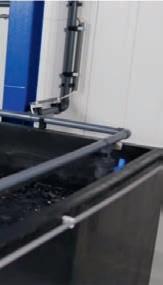


Ben Lamberigts, Manager Quality, Nutrition and Research with Alltech Coppens, says: “This is still a young industry, and we are probably 20-30 years behind nutrition for farmed land animals.”
Having said that, for all the talk of RAS being a new concept in aquaculture, catfish have been grown in recirculating systems since the 1980s, Lamberigts adds.
Regarding the research programme at the ACAC, he says: “We do get enquiries from customers, for example regarding adjustments on their feed, but most of the work we do is coming from our own nutrition knowledge.
“We always say that if you do one trial, then you get 10 more questions out of it.”

ACAC also works with universities, with PhD projects ongoing with both Wageningen in the Netherlands and the University of Stirling in Scotland.
both Wageningen in the Netherlands and the University of Stirling Scotland.
Alltech Coppens works with a range of ingredients but one that Lamberigts thinks is underrated by much of the industry is land animal by-products, particularly waste streams from the poultry industry. Even feathers, once hydrolysed and made digestible, can be used in aquafeed.
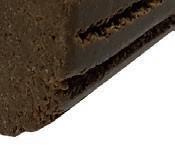

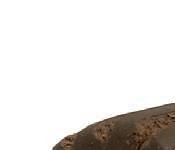
He comments: “Personally, looking at sustainability and circularity, these are raw materials that are not used enough.”




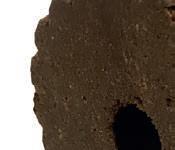
Energy for the plant comes mainly from local, renewable sources, but the company plans to make the ACAC even more energyefficient by 2025, further reducing its carbon footprint. And with investment in RAS aquaculture ever increasing, further expansion for the Centre is expected.
World Feeds’ factory in Thorne, near Doncaster in South Yorkshire, provides aquafeed for aquariums all over the world, with specific feeds tailored for different fish species of all types and sizes.
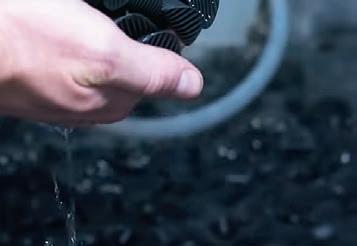
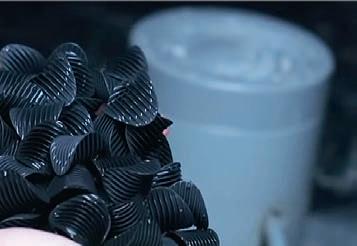


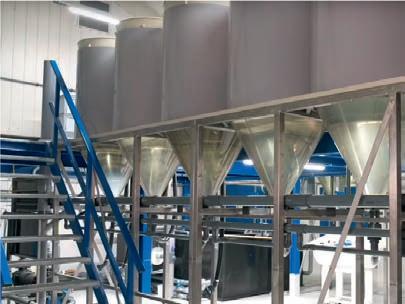
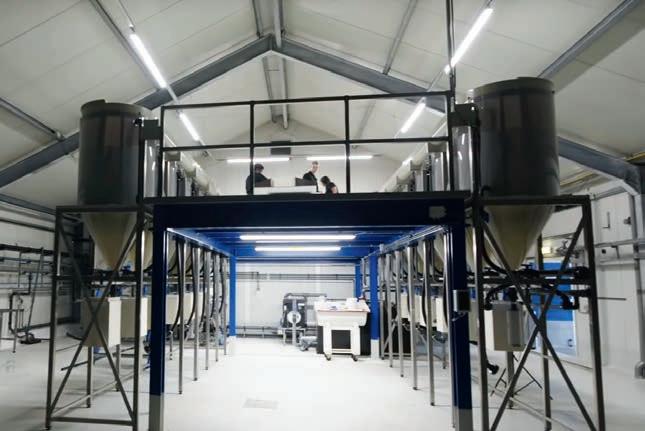
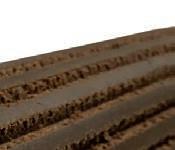
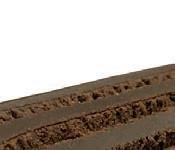
More recently, however, the company has also branched out into aquaculture, producing feed not for salmon but for the cleaner fish that help keep the salmon free of sea lice.

The company has two separate brands; Vitalis Aquatic Nutrition, supplying public aquariums and the hobby market; and Vita Aqua Feeds, supplying the aquaculture sector.
Vitalis Aqua Nutrition supplies aquariums and the aquatics sector around the world in 40-plus cities, from Europe and North America to the Far East and Middle East, including the famous Dubai Mall and Hotel
Atlantis aquariums in Dubai, UAE. The biggest aquarium in the world, SeaWorld Yas Island, opened last week in Abu Dhabi. World Feeds is supplying feed for all its fish, more then 100,000 individual animals and hundreds of species.

Managing Director Peter Kersh explains: “Traditionally public aquariums would use wet fish to feed their fish, frozen squid, herring, mackerel and tuna for example. It was very expensive to keep frozen, and messy to cut it up. You broadcast it into the water and it leaves lots of tissue in the tank, leaving water cloudy and putting huge pressure on the filtration system.
“Plus, nutritionally it’s not giving the fish everything they need.”
World Feeds was set up to change the way the industry thinks about fish feed. One of the key differences is that the production process for feed pellets involves cold extrusion rather than baking pellets, enabling a softer texture.

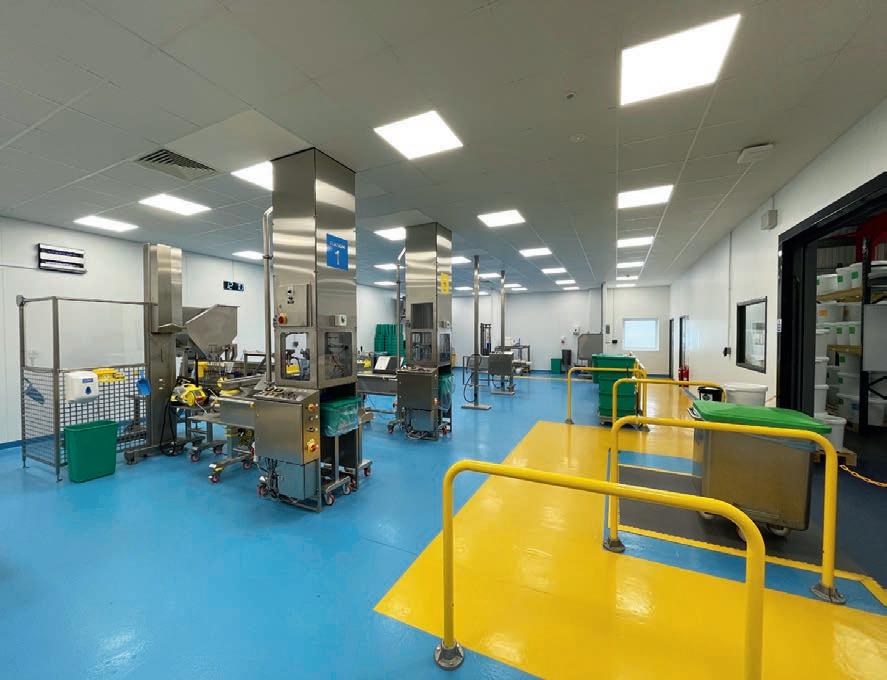

As Technical Director Mark Wilson explains: “For fish, the acceptability of feeds is not just about taste and smell – it’s also about texture. We found that species coming in from the wild adapt very quickly to pellets when the texture is soft.”
As Peter Kersh puts it: “When you show these products to people who have not seen soft feed before, there’s a wow factor.”
Mark Wilson also stresses: “All the ingredients we use are specific to our philosophy.”


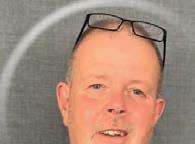

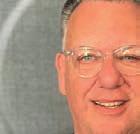

This includes a high proportion of sustainably sourced marine ingredients, as well as tailored vitamins and minerals, and seaweed-based ingredients.
In aquariums, fish of different sizes and species are kept in the same tank, creating the risk that feeding inadequately will lead to aggressive behaviour. The company’s solution was to develop a feed block which is soft enough for fish to graze on, but which retains its integrity in the water. This way, the more dominant species can graze and, when they have finished, other species can take their place feeding from the blocks.
Vitalis Aqua Nutrition is now an established brand around the world, selling to customers from Europe and North America to the Middle East and Far East. In 2018, World Feeds decided to branch out into aquaculture. The market for salmon feed is well established and dominated by large players producing at scale. There was an opportunity, however, to take advantage of the growing trend to using lumpfish and wrasse in salmon cages as cleaner fish.

As Mark Wilson puts it: “We’ve worked



with so many species over 30 years that, collectively, we have a lot of knowledge between us.”
Just as in an aquarium, a sea cage with salmon and cleaner fish poses the challenge of feeding two different species. Vita Aqua Feeds (VAF), the company’s aquaculture arm, addresses this using feed blocks.
Trials in Norway proved very successful, including in terms of fish health and welfare outcomes, and the company then started its commercial roll-out in Scotland.
Peter Kersh says: “We’ve had a big success in getting producers in Scotland to take on our feed block, to help breed and feed the cleaner fish. And when the cleaner fish are fed correctly they do a great job of eating the sea lice.”
Loch Duart Salmon was to first to adopt the new feed system and now the leading salmon producers in Scotland have converted to using VAF feed blocks.
The blocks are held on a metal spike attached to a float and cable, so when the feed has been consumed – usually after just a day – the float rises up to the surface. The block can retain its integrity and its nutrients for two days in the water.
Now, World Feeds is looking to target the Norwegian market, with leading producer Lerøy already trialling the VAF feed system.
With an increasing interest in growing a variety of species in RAS (recirculating aquaculture systems) sites, the company sees even more possibilities in aquaculture in future.


Kersh says: “This is just our start in aquaculture, and we have got all sorts of ideas that we can bring our technology to bear on. The species of fish is not a limitation for us, by any stretch.”




All the ingredients we use are specific to our philosophy






The clock is ticking. Farms certified under the Aquaculture Stewardship Council’s scheme have until 14 January 2025 to ensure that their feed is souced from suppliers that meet the ASC’s new Feed Standard. Feed represents around half of the cost of production for finfish farmers, and – excluding seaweed mariculture – an estimated 70% of aquaculture production is dependent on feed.
The sustainability, carbon footprint and ethical credentials of an aquaculture business are, therefore, hugely impacted by its supply chain, and above all by its feed suppliers.
The ASC’s Feed Standard was launched in 2021, and as of January this year feed mills have been eligible to apply for certification. They will need to show that they have met the legal, social, and environmental requirements for both the feed mill’s own operations and for the suppliers of ingredients used in feed production. Compliance with the standard will be assessed by accredited third-party auditors, who will work with the mills to ensure that both day to day practices and record-keeping meet the ASC requirements.







By requiring responsible sourcing for all major feed ingredients, ASC aims to address issues in both the supply chain and at raw material level. Requirements on reporting of performance will also improve assurances, the ASC says, by creating unrivalled transparency throughout the entire aquafeed supply chain, as well as rewarding environmental sustainability and assisting future research into responsible feed.












ASC CEO Chris Ninnes notes that in 2020, total seafood production reached 213 million tonnes and provided billions of people with an important source of animal protein, according to the Food and Agriculture Organisation SOFIA 2022 report.

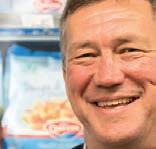



Ninnes goes on: “Aquaculture provides 58% of this production by weight and 67% by value, and the macro-nutrients this provides

 By Robert Outram
By Robert Outram
are an essential and undervalued component of global food security. Fortunately, farmed seafood provides these food security and nutritional benefits with a much lower carbon footprint than protein from terrestrial farmed livestock.
“Much attention, often negative, is focused on the inclusion of fish meal and fish oil in farmed diets, whilst almost ignoring completely the impacts of terrestrial plant materials that constitute up to 85% of the diets of carnivorous fish.”
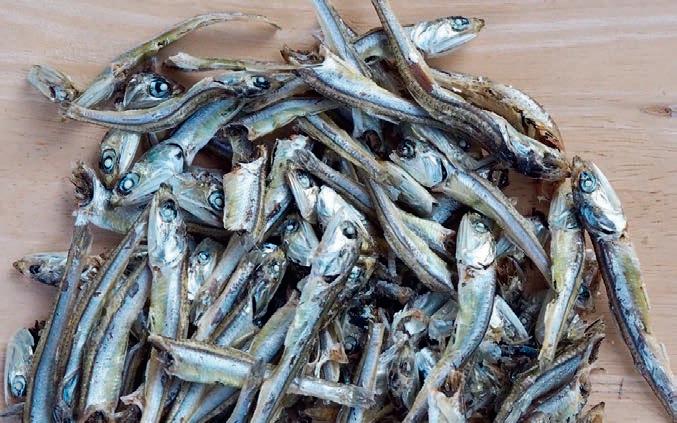
He stresses: “To farm seafood responsibly demands that the ‘upstream’ impacts associated with the production of feed ingredients be monitored and reduced, with an imperative focus on social responsibility and environmental improvement. This is exactly the role that the new ASC Feed Standard will play by incentivising these improvements. Given the increasing importance of farmed seafood within global food systems, this has become ever more crucial as the population of the world increases.
“Ensuring the feed used by this vital sector is sourced responsibly through the holistic approach set out in the ASC Feed Standard is essential to achieving sustainable aquaculture. I am especially proud that the ASC Feed Standard upholds key labour requirements across feed ingredient supply chains and seeks to mitigate and reduce risks of deforestation and land conversion.”
The sustainability of marine ingredients in aquafeed has been a major element in debates over the ethics of aquaculture, but the ASC standard also focuses on issues arising out of plant-based feed, especially deforestation, land use conversion and social impacts.
To comply with the standard, feed mills will need to carry out a risk assessment for every component that represents 1% or more of the feed they produce. The ASC describes its approach as “holistic”.
This page from top: Aquafeed pellets; Chris Ninnes; Marine ingredients like anchovies are s�ll a key element in aquafeedSo, for example, wild-caught marine ingredients such as fishmeal and fish oil must come from sustainable legally obtained sources or, in the case of whole-marine ingredients, at least from sources that are making progress towards sustainability through Fishery Improvement Projects (FIPs). These are multi-stakeholder initiatives for specific species and regions bringing together the private sector, the Marine Stewardship Council, Marin Trust and nongovernmental organisations such as the World Wide Fund for Nature (WWF).
ASC has also signed a memorandum of understanding to work more closely with the Sustainable Fisheries Partnership (see report, Fish Farmer May 2023), which assesses fisheries around the world and helps to develop and implement FIPs.
Soy and other plant-based ingredients will have to come from sources that do not involve deforestation, whether legal or illegal. Production that involves the conversion of, say, wild grassland to agricultural production would also be considered a risk factor.
Genetic modification (GM) for agricultural products is not currently permitted in Europe and the UK, but it is in the US and Canada. Since the legislation varies so much internationally, the ASC requires only that if GM ingredients are used in feed production,
details must be disclosed.
ASC certified feed mills must record and report their energy use and greenhouse gas emissions; and work to improve energy efficiency, use of renewables, and water usage.

Another core requirement is adhering to social responsibility. This includes fair treatment and wages for employees, respect of indigenous and tribal people’s rights, and ensuring that no child or forced labour exists. The ASC Feed Standard includes many other social and effective management system requirements, including policies, procedures and processes for topics such as the prevention of corruption, bribery, or falsification of documents. They will also be required to conduct due diligence on their supply chains to assess and mitigate these key social risks.
Alexandra Warrington, ASC Senior Coordinator, Feed Standard says: “Producers will need to speak with their feed suppliers now, to ensure they are preparing for ASC certification to meet the January 2025 deadline.”
Some of the farmers operating ASC-certified sites run an integrated business, producing their own feed, some rely on a single supplier and some have several suppliers.
Warrington notes: “The big feed producers are already carrying out risk assessments in their supply chain. Going forward, compliance with the feed standard should be part of their ongoing risk assessment.
“For the smaller mills, however, it will represent a bigger step up. Even so, we are seeing a lot of interest from smaller mills. For example they have their own supply chain and they may have some ethical concerns.”
This is only the start of a journey of continuous improvement for the industry. Warrington emphasises: “This is version 1.0 of the standard. We will continue to improve it and we will keep raising the bar!”
Find out more about the Feed Standard online at asc-aqua.org/ producers/farm-standards/feed-standard/
Producers will need to have that conversation with their feed suppliers
Heila HLM8-2S: 1200kg @ 7.43m





Heila HLM10-3S: 940kg @ 10.3m
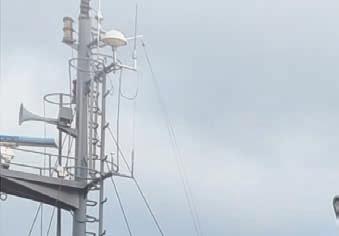

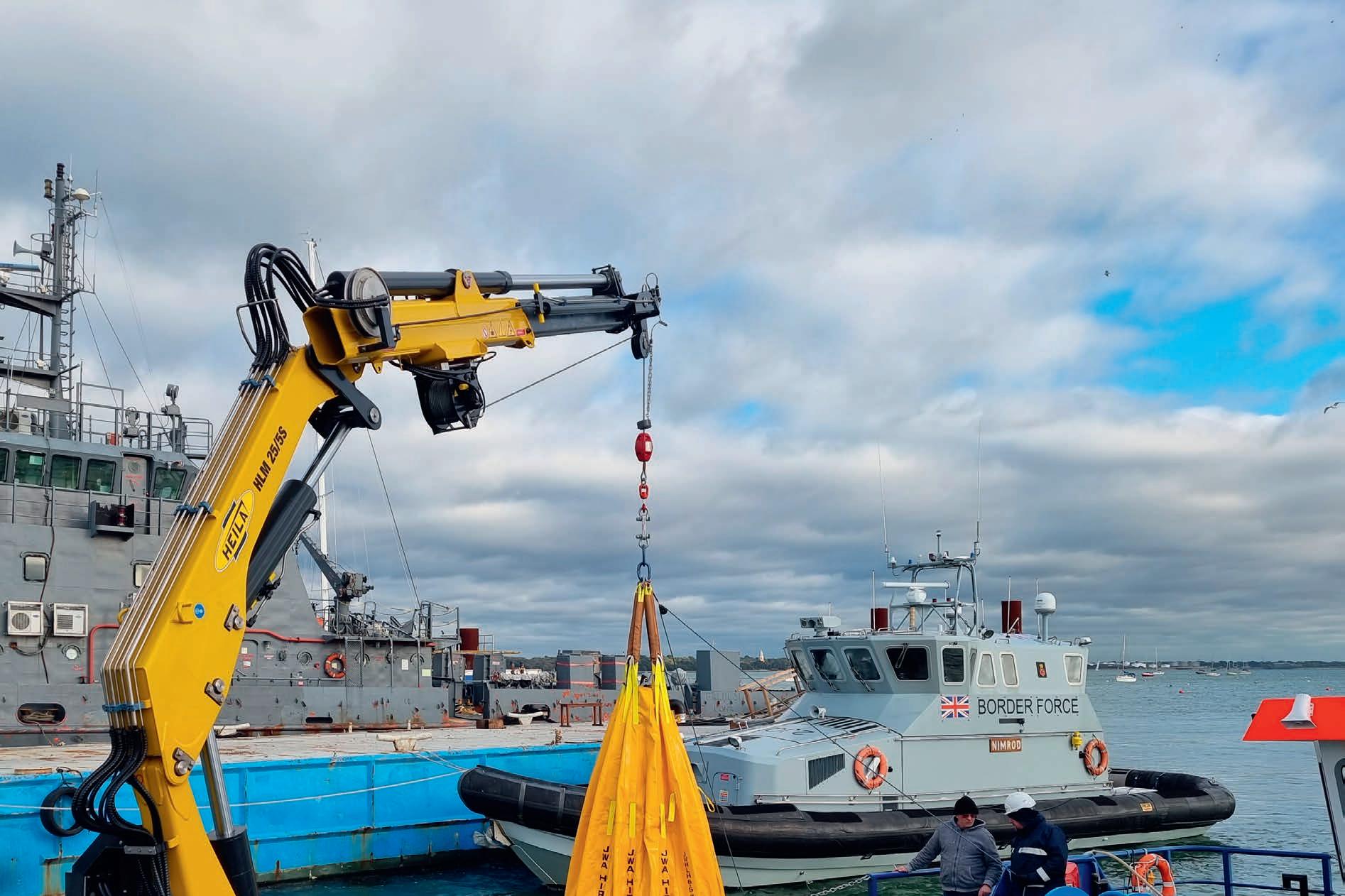
Heila HLM25-3S: 2200kg @ 10.5m




Heila HLM25-5S: 1200kg @ 14.7m

Heila HLRM45-5S: 1750kg @ 14.9m

The Aberdeenshire-based provider of hydraulic, lifting and mechanical equipment and services has invested heavily in expanding their fleet of stock marine cranes to meet soaring customer demand.

are lengthy and causing issues for clients, Brimmond –the exclusive UK and Ireland provider and servicer of Heila Marine Cranes – has a wide range of cranes in its fleet, with four available immediately in the UK.
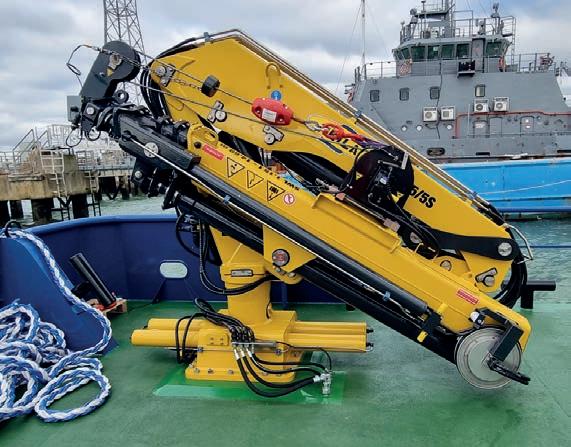
Heila models available in 2023:



Heila HLM8-2S: 1200kg @ 7.43m
Heila HLM10-3S: 940kg @ 10.3m
Heila HLM25-3S: 2200kg @ 10.5m

Heila HLM25-5S: 1200kg @ 14.7m
Heila HLRM45-5S: 1750kg @ 14.9m
Heila is a global leader in the manufacture of specialist heavy-duty marine cranes with over 700 customers worldwide. Heila’s manufacturing facility in Italy has several cranes currently in build for Brimmond stock with four fully foldable versions available to purchase now.
Technical Sales Manager of Brimmond, Paul Dingwall, said: “Following the impact of Covid-19, supply chains are they struggle to source materials. This has translated into increased costs and even possible project delays.
“We pride ourselves on our high-quality service, which is a crucial reason for our ongoing client loyalty. The current for Brimmond to keep stock of Heila marine crane models which should assist our clients who require a quicker turnaround at a secure cost.”
“Heila is a very strong strategic fit for us, and we’re excited to further develop our partnership as the exclusive UK and Ireland distributor, service partner and agent for Heila Marine Cranes.
repair and upgrade a diverse and ever-increasing range of new and second-hand marine cranes. Managing Director of Brimmond, Tom Murdoch, said: a high-quality product and service, we recently invested even higher level of service to our customers, providing a s.”
Brimmond recently added two new fully equipped service vans for their experienced team of crane technicians who carry out servicing, maintenance and the UK and Ireland.
stereotypes with the facts about seafood. Her advice to the industry was to meet the consumers “where they are at” and to build trust through personal commentators and through demonstrating authenticity. She stressed: “This is a long game. Trust cannot be built or repaired overnight.”
Millennials and Generation Z consumers are looking for authenticity, she said: “They don’t want to hear from ‘a company’, they want to hear from a person.”

She concluded: “I can’t do it alone – this is going to take an army of voices online to shift the needle.”
Tonje Osmundsen, Research Director at the Social Research Facility of the Norwegian University of Science and Technology (NTNU), spoke about the Norwegian perspective on aquaculture.
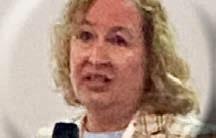

She said the origins of modern fish farming in Norway’s coastal communities meant that “aquaculture is not perceived as something from the outside.”
The Sustainable Aquaculture Innovation Centre (SAIC) held a new two-day event focused on the future of aquaculture, attended by around 300 delegates.
Taking place on 16 and 17 May 2023 at the University of Strathclyde’s Technology and Innovation Centre in Glasgow, the Sustainable Aquaculture Summit covered three core themes: fish health; “innovation with impact”; and “sustainable food, strong communities”.
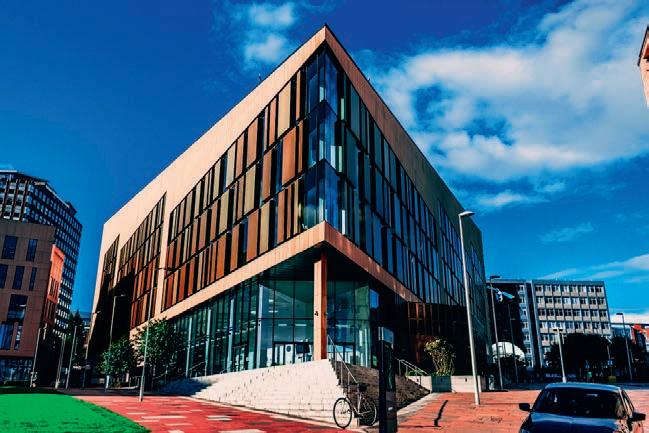
The conference kicked off with a day devoted to the long-term vision for aquaculture. Opening the event was Annabel Turpie, Director of Marine Scotland, standing in for Rural Affairs Secretary Mairi Gougeon who had been called away on official business.
Delivering the keynote address, Annabel Turpie said: “Aquaculture in all its forms is an important sector for Scotland” and added that it was playing a vital role in ensuring that Scotland becomes a “good food nation”.
She referred to the Scottish Government’s Blue Economy Vision which, she said, recognises that economy and society are embedded within nature, not external to it. And she promised the government will “soon” be publishing its Vision for Sustainable Aquaculture, which would include a commitment to follow a “balanced natural capital approach”.



Meanwhile, she said, “good progress has been made” on the new Consenting Task group set up in response to the Griggs Report and a trial process will hopefully be deployed within the next few months.

Next up was Emily de Sousa, an online blogger, seafood educator, CEO of Seaside with Emily and fisheries scientist by training. She talked about how the seafood community could make the case for its many benefits, in the face of widely shared arguments that “there is no such thing as sustainable seafood”.
She said “Seafood is misunderstood” – some consumers have misconceptions about fisheries and aquaculture, there is uncertainty and a lack of trust, and some consumers believe “It’s easier not to eat it.”
De Sousa has made it her mission to counter these


There are more than 1,000 fish farms along the country’s coast, she noted. The industry has a strong social licence but there is also open public debate, mainly focused on environmental impacts and whether the distribution of profits is perceived as fair.
Is Norway at a crossroads, however? The resource rent tax (“salmon tax”) has led to frozen investments while farmers are facing higher costs, for example to tackle sea lice.
Regulation may become simpler in future, Osmundsen speculated, but perhaps it may also prove less accommodating to the industry.
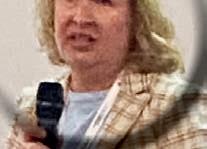
The first of a series of panel debates focused on the role of aquaculture on society. Moderated by Professor Grant Stentiford, Chief Scientist, CEFAS, the panel included: Leaf Hendricks, WWF; Chris Ninnes, Aquaculture Stewardship Council; Emily de Sousa; and Tonje Osmundsen.
As Leaf Hendricks commented: “Sustainable aquaculture is not an end in itself, it’s an approach to how we do business.”
Using an interactive poll app, the audience also had their say, rating the relative importance of key factors for the sector on a scale of one to 10.
The first question was: “How can we move towards a more sustainable seafood sector?”
Responses were:
7.7 Innovative feed sources
6.8 Greater use of renewables
6.7 Less fragmented, more adaptive regulation
5.7 Integration of remediation and rewilding
5.4 Multitrophic sites.
The audience members were also asked: “How do we bring more young people into the sector?”
7.7 More apprenticeships and internships
7.6 Visibility of education and career opportunities
7.2 Industry placements for college students
5.4 Initiatives such as “Young Farmers”
Practitioners, innovators and academics gathered in Glasgow last month to share their insights on the future of aquaculture
Chris Ninnes pointed out that fishing and aquaculture can be “a hard life”. He said: “We need to look at technology to reduce the need for labour, and try harder to attract people.”
A third question was: “What are the biggest challenges facing the sustainability of UK aquaculture?” The verdict was:
7.7 Public perception, trust and social licence
7.5 Fish health, welfare and survivability
7.2 Environmental issues and climate readiness





6.8 Sustainably sourced feed and ingredients
6.7 Government support for growth at local and national level.
There was also a discussion on the Scottish Government’s vision for the Blue Economy, with Sally Jamieson, lead for the Blue Economy, Scottish Government; Feargal Brennan, Strathclyde University; Cathy Tilbrook, Head of Sustainable Coasts and Seas, NatureScot; Elaine Jamieson, Head of Food and Drink and Life Sciences and lead for the Blue Economy at Highlands and Islands Enterprise (HIE).
Delegates heard that the Scottish Government is taking a “natural capital” approach which will help to create a framework to support marine planning policies and promote investment in nature-based solutions, and help marine sectors to consider environmental risks.
HIE’s Elaine Jamieson stressed four key concepts: “People, Planet, Place and Prosperity.”
Hamish Rodger, Chief Fish Health Officer, Patogen and a member of the SAIC Independent Scientific Panel, chaired a discussion on fish health and welfare, with: Professor Geoff Sim, Director of the Global Academy of Agriculture and Food Systems, and Chair of Global Agriculture and Food Security, University of Edinburgh; Professor Joyce Tait, Co-director, Innogen Institute, University of Edinburgh; Nick Joy, independent consultant and FF columnist, and founder of Loch Duart salmon; and Simon Docherty, Queen’s University, Belfast and former president, British Veterinary Association (BVA).
Simon Docherty noted that the BVA has just launched its position paper on sustainable aquaculture. Welfare is a key issue as well as health, he said, which posed the question: “What is a good life for a fish?”
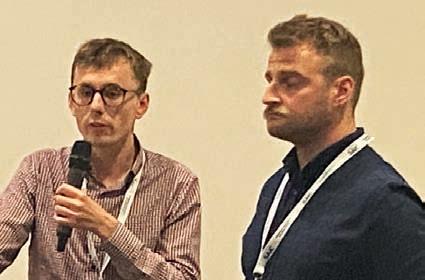
Nick Joy warned that government policies are reducing food production around the world and said: “Until we stop thinking that we are gods, and understand that we have to think about sustainability and welfare – and about the fact that we have to feed people – we will fail.

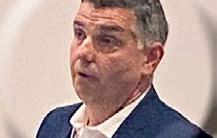

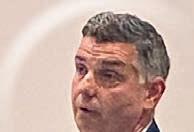
“Collaboration must be open, and we must be ready to discuss the most difficult things.”
Asked to select the most impactful opportunities to improve fish health and welfare, the audience responded:
7.8 Prediction, data gathering and analytics
7.5 Skills and training
7.2 Prevention eg vaccines
6.1 Artificial intelligence
5.7 Genetic technologies

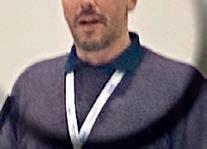
Joyce Tait noted that these are inextricably linked. For example, the development of vaccines makes use of genetic science. A panel discussion on attracting and retaining talent included Alison Gray, Director with Skillfluence, which is working with SAIC

on a number of projects; Donald Waring, Mowi Scotland; Lynn Houmdi of Flexible Working Scotland and Jill Couto-Phoenix, Head of Skills and Talent, SAIC.
The Summit also saw a series of showcases highlighting innovation in the commercial and academic spheres
These included presentations from: Suneet Shivaprasad at Rare Earth Global, which is finding a use for hemp seeds as a basis for aquafeed; John Pennell at East Coast Innovation, which has created a more fish-friendly transfer system for salmon which does not rely on pumped suction; Kim Last of SAMS on sea lice detection early warning system using a holographic camera combined with artificial intelligence; and Ian Armstrong of Pulcea on progress in developing a sea lice treatment that combines hydrogen peroxide treatment with ultrasound.
A session on innovation in shellfish and seaweed production included Rhianna Rees, Business Development Manager with the Scottish Seaweed Industry Association; Tim Bean of the Roslin Institute who explained research which will hopefully lead to a method for reliably diagnosing the shellfish parasite Bonamia ostrae; Alejandro Gutierrez of the Institute of Aquaculture at Stirling University who talked about genomic research aimed at improving the stock of farmed seaweed; and Professor Christine Edwards who described how field test kits have been developed to detect toxins in shellfish.
A final session on innovation and the environment heard from: Dr Andrew Mogg of Tritonia Scientific on his company’s innovations in underwater 3D mapping; Tom Wilding of the Scottish Association for Marine Science (SAMS) on a genetic “barcoding” method to track biodiversity on the seabed; Lisa Harrison of the University of Stirling on a study of phosphorus levels in sea lochs; Benchmark Animal Health’s Jamie Dawson and Tony Boyd on the results of trials on the effectiveness of Benchmark’s CleanTreat system in removing traces of the sea lice treatment Salmosan; and Ash Penley, Net Zero Manager with Sealand Projects, on a project that aims to develop a wave power unit to provide offshore farms with clean energy.
Opposite page from top: The Technology and Innova�on Centre, University of Strathclyde; Annabel Turpie; Emily de Sousa; Tonje Osmundsen
This page from top: Fish health and welfare panel: (From le�) Hamish Rodger, Nick Joy, Simon Docherty, Joyce Tait and Geoff Sim; Donald Waring; John Pennell; Jamie Dawson (L) and Tony Boyd
This is a long game. Trust cannot be built or repaired overnight
”
Last month, salmon farming company Mowi Scotland Ltd was fined £800,000 after an employee was crushed and drowned when he fell into the water during a boat transfer. What happened, and just as importantly, what lessons have been learned?
On the afternoon of 18 February 2020, at Mowi Scotland Ltd’s Ardintoul fish farm on the south side of Loch Alsh, the work boat Beinn Na Caillich was preparing to transfer Assistant Fish Farm Manager, Clive Hendry (58) from Dornie, to a floating permanent structure known as a Sea Cap, which housed a galley, toilets and other accommodation with computers controlling some fish farm functions.
The “touch and go” transfer would see the boat stop with one of its gates lined up with the Sea Cap’s ladder so that Hendry could step through the gate onto the ladder.
The Beinn na Caillich approached the Sea Cap starboard side on at half a knot, with the engines in neutral. This would have been just prior to putting it into reverse to slow the vessel to a stop and allow Hendry to step off to the Sea Cap’s ladder.
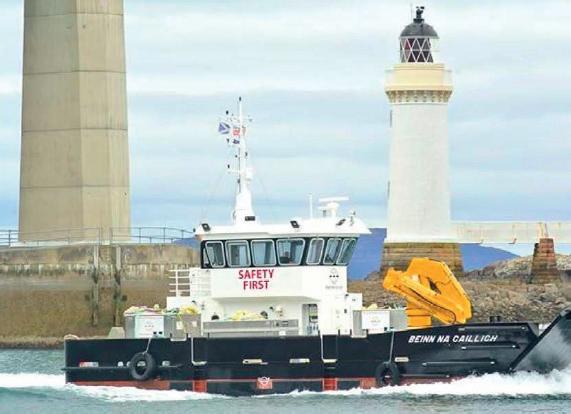
While the vessel was still moving slowly ahead, Hendry stepped through the gate, putting both hands and his right foot on the rungs of the Sea Cap’s ladder.
The boat’s skipper shouted in surprise as he did so and saw the boat hit Hendry in the right side. As the boat was now reversing it also clipped him on the left side.
A technician on board the Sea Cap saw Hendry “struggling and distressed” and having difficulty holding onto the Sea Cap’s ladder. The technician attempted to stop him from falling by holding onto his lifejacket and clothing, but the severely injured man slipped out of them into the water.
Inverness Sheriff Court heard later that the water’s temperature was between 6.1 and 8.8 degrees centigrade. A reflex breath action forced an involuntary intake of water into the unconscious man’s lungs, and he drowned within 20 seconds.
Efforts to revive him by fellow workers with CPR, a defibrillator, plus actions by
Above: Mowi’s workboat Beinn Na CaillichThe crew on board Beinn Na Caillich were not fully prepared to deal with the emergency
Lessons have still not been learned from the fatal accident that cost Clive Hendry’s life, says his partner. By Sandy Neil
ambulance paramedics and Broadford Hospital staff failed.









The Marine Accident Investigation Branch (MAIB) launched an inquiry into the incident, published in June 2021. The MAIB report said Clive Hendry had worked in the fish farming industry for more than 20 years, and was regarded as a hard-working member of his team who was respected for his experience.



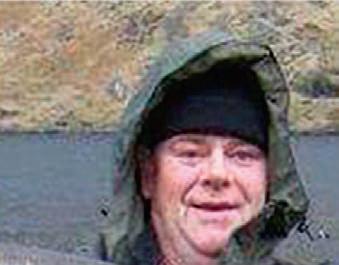
The investigation concluded: “The conduct of the boat transfer had not been properly planned or briefed and was not adequately supervised or controlled.


“A risk assessment for the transfer of personnel to and from the fish farm installations had not been carried out and a documented safe system of work had not been produced.”

The MAIB highlighted several safety issues, noting: “The transfer of personnel by workboat had not been properly risk assessed, and safe systems of work had not been put in place.”
“The crew on board Beinn Na Caillich were not fully prepared to deal with the emergency situation. They had not conducted regular man overboard recovery drills and were not familiar with the vessel’s recovery equipment



“The workboat and fish farm owner of Beinn Na Caillich did not have an effective marine safety management system and lacked staff with the experience to oversee its marine operations.






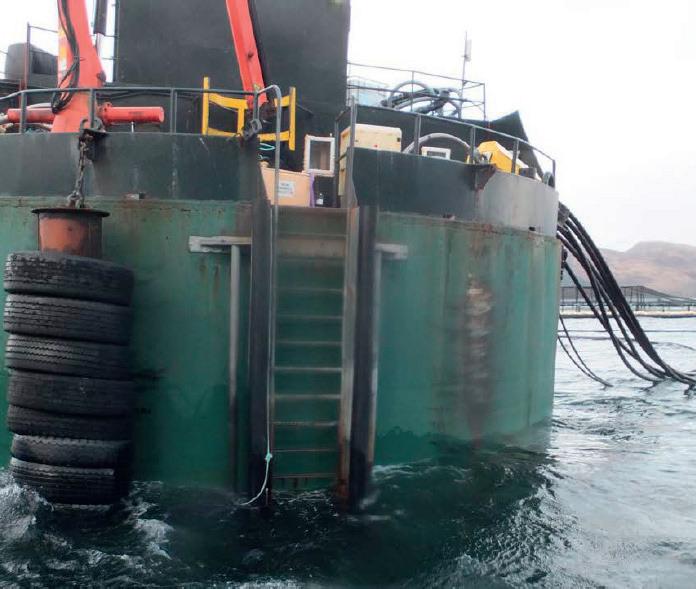


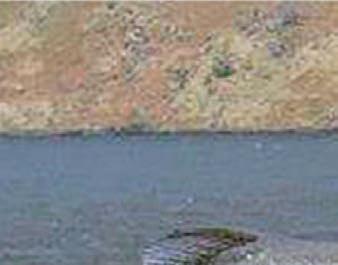
“Recommendations have been made to the owners to apply the standards set out in the Workboat Code Edition 2 to all its existing workboats and, specifically, to fully implement a safety management system across its fleet, as well as ensuring that it has appropriate marine expertise to oversee its marine operations.”
The MAIB report noted that safety recommendations did not create a presumption of blame or liability.
An extensive investigation by the Maritime and Coastguard Agency (MCA) concluded Mowi Scotland Ltd, owner of the workboat, failed to take all reasonable steps to ensure the boat was operated in a safe manner.

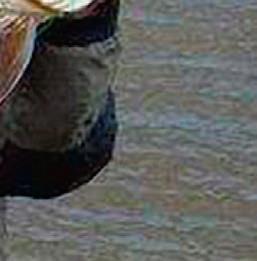
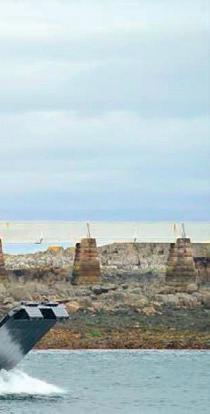
As heard by Inverness Sheriff Court on 9 May, the MCA’s investigation revealed Mowi Scotland Ltd had failed to provide effective safe systems of work, sufficient or suitable risk assessments, sufficient risk mitigation, and sufficient control over






Personal Protective Equipment (PPE). The company also failed to prevent unsafe practice, with sea gates left open while a vessel was travelling.
Mowi Scotland Ltd was charged by the Crown Office and Procurator Fiscal Service (COPFS) with serious breaches of the Health and Safety at Work Act 1974, which led to Clive Hendry’s death.
The company admitted health and safety failings which could have prevented Clive Hendry’s death, and pleaded guilty to failing to make risk assessments for the safe transfer of employees from its larger vessels to the Sea Cap.
It also admitted failing to monitor safe systems of work to ensure safe transfers and failing to provide supervision to ensure flotation devices were properly secure so they would become detached, as happened in Hendry’s case.
Principal Fiscal Depute David Glancy presented the facts to the court, ending by saying: “What should have happened was dialogue about how Mr Hendry’s safe transfer could be achieved.
“Instead he was left with the responsibility for his own actions and he had not been told what and what not to do”.
For the company, Peter Gray KC told the court: “Mowi takes its responsibilities to its employees’ safety very seriously.
“It is a matter of great regret and concern that Mr Hendry lost his life due in part to the failings of the company.
“It was a completely routine transfer which had been carried out by experienced employees as part of their daily routine and that no transfer would take place until the vessel was stationary.
“It will never be known why Mr Hendry departed from that practice. But the company recognises its responsibilities fully.”
Sheriff Sara Matheson fined the company £800,000, reduced from £1.2m because of the guilty plea. Mowi was also ordered to pay a victim surcharge of £60,000.
The Sheriff expressed sympathy to Clive Hendry’s family and friends who were in court and said: “There is nothing I can do to bring him back.”
She added that what she could do was to bring home to companies the importance of health and safety in the workplace, to prevent a repetition of such deaths.
The Crown Office and Procurator Fiscal Service (COPFS) said: “The investigation by the Maritime and Coastguard Agency found

that the company had failed to make a suitable and sufficient risk assessment or maintain systems of work for the health and safety of employees when transferring from a vessel to a structure such as Sea Cap.
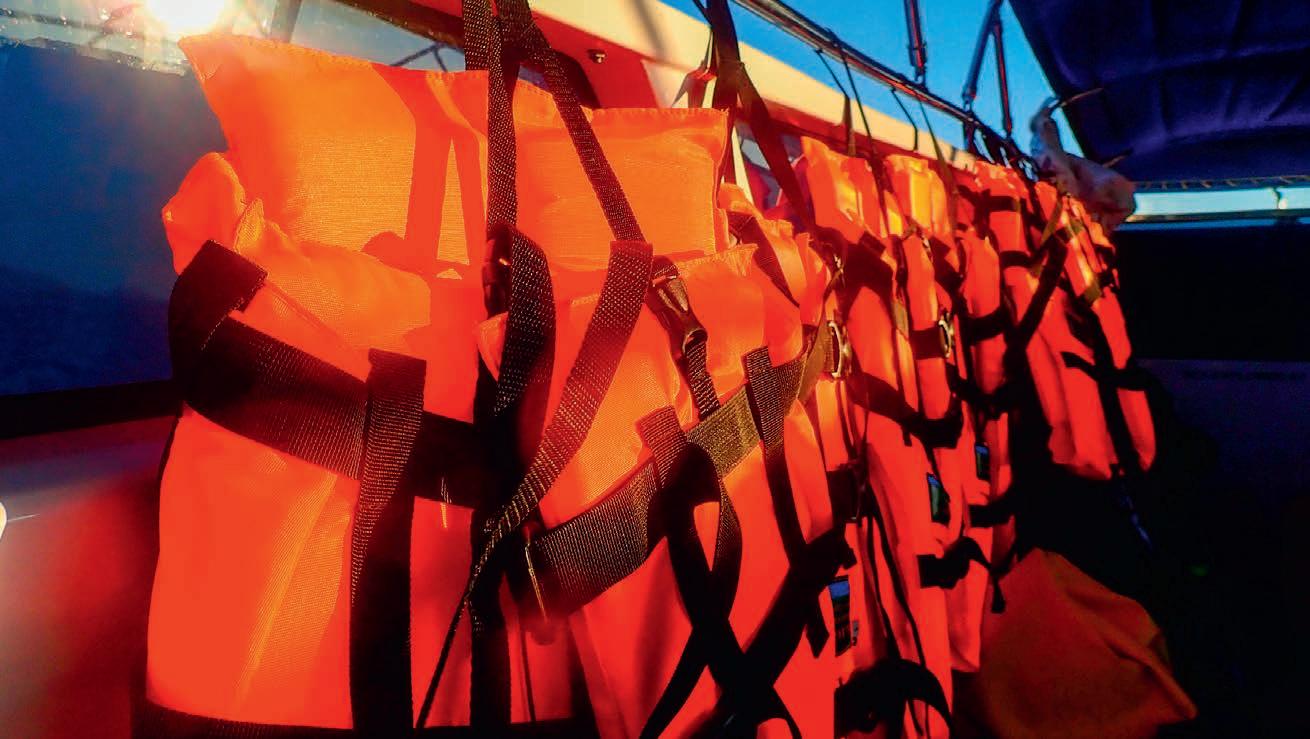
“They also failed to provide employees with the necessary supervision to ensure lifejackets were properly tightened and secured.
“Mr Hendry was left responsible for his own actions in transferring to the Sea Cap. He had not been told what to do, nor what not to do when they arrived alongside.
“Mowi had not previously mandated the wearing of restraining straps and left it to the discretion of the wearer. Since Mr Hendry’s death, their use has been made compulsory and a more effective design of lifejacket introduced.
“The Beinn na Caillich and other similar vessels have been modified to allow the wheelhouse windows to open and public address systems installed to allow better communication between the helm and the working deck.
“Unsecured ‘touch and go’ transfers have been stopped. Any transfers to or from vessels like the Beinn na Caillich now only take place once vessels are secured, and the master of the vessel is satisfied that it is safe to do so.
“Life sized mannequins are now used to add reality to man overboard drills.
They should have known better, should have done much better
The frequency of these drills is now recorded by the company to ensure that those on board are familiar with both the drills and equipment available to them.
“Risk assessments and safe systems of work are now in place for all offshore activities.”


Speaking after sentencing, Debbie Carroll, who leads on health and safety investigations for the COPFS, said: “Clive Hendry was much loved by his partner and a well-liked and respected man by friends and colleagues. Our thoughts are with them at this difficult time.
“Mowi Scotland Limited accepted liability and the Crown accepted their guilty plea to the contraventions of the Health & Safety at Work etc Act 1974.
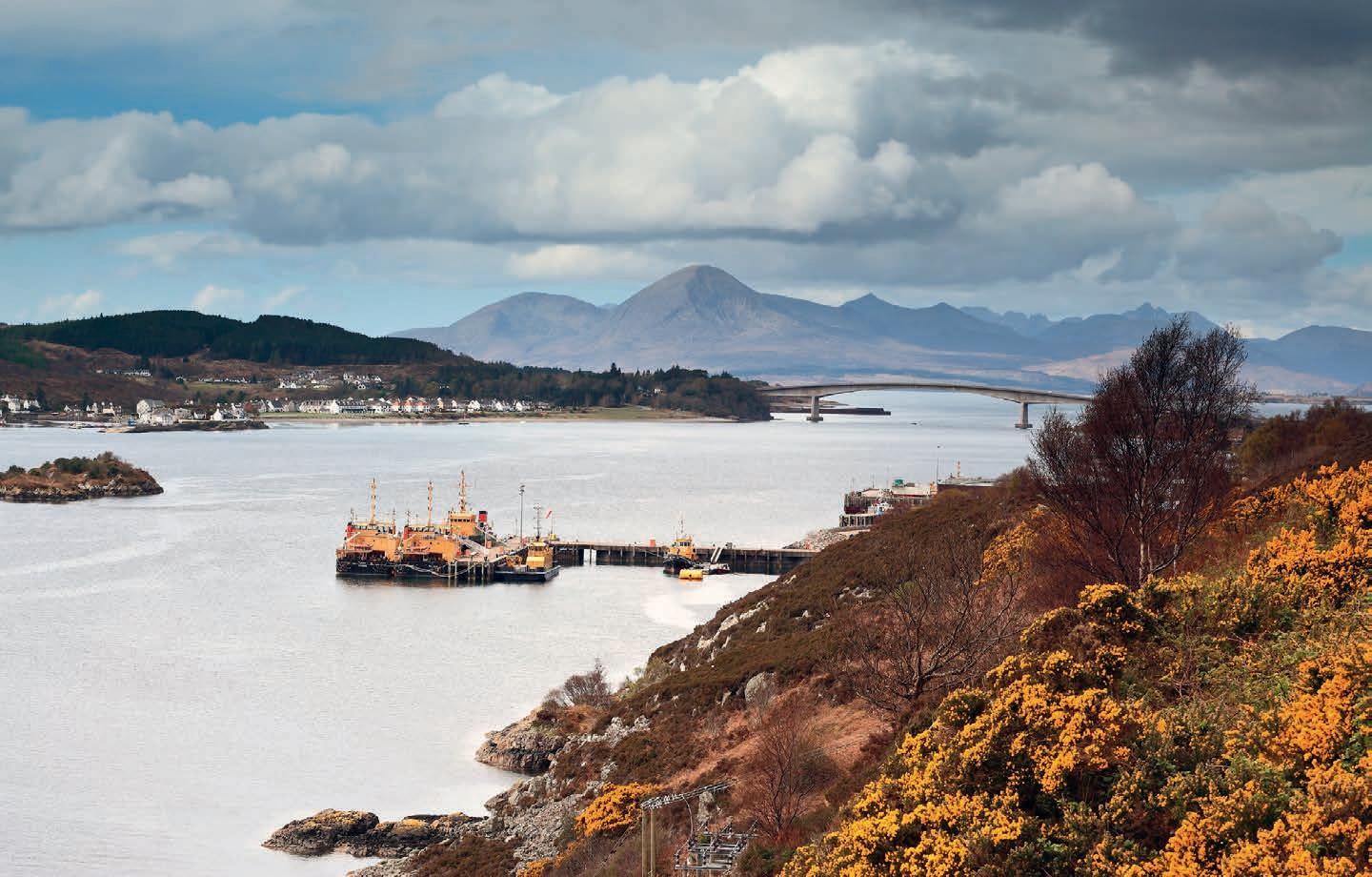

“Since this incident the company has introduced new risk assessments and has put into practice safe systems of work.
“Had these been in place at the time then Mr Hendry’s transfer from the Beinn na Cailleach to the Sea Cap would have taken place without incident and he would be alive today.
“Hopefully this incident should prompt other employers to consider their duties and that failing to keep their employees safe can have fatal consequences for which they will be held accountable.”
After the sentencing, MCA lead investigator Jay Staff said: “This case highlights the consequences of unsafe practice and failing to operate a boat safely.
“My thoughts are with the family and friends of Clive Hendry, who I hope can take some comfort from this result.
“We also hope lessons have been learned. The MCA will always investigate and take action against failings of this nature.”
Catriona Lockhart, Mr Hendry’s partner of 28 years, said: “There
on and I still can’t believe the largest salmon producers in the world had so many health and safety failures. Clive should have been kept safe at work.
“My next fight is to get a Fatal Accident Inquiry into all the circumstances as to why my Clive never came home alive, so that Mowi Scotland, and the aquaculture industry more widely, learn from these shocking health and safety failures, so that no other families have to go through this living hell, and that Mowi Scotland’s workforce are kept safe and all come back home alive.
“My life has been destroyed by what happened - and I don’t believe MOWI have changed the way they operate.”
Ms Lockhart has taken civil legal action to sue Mowi over the accident.
Louise Adamson, trustee of Scottish Hazards, the health and safety charity which has been supporting Ms Lockhart, commented: “Mowi Scotland is a company with resources aplenty, which had a moral duty and a legal responsibility to look after Clive, and which failed in the worst possible way in both respects. They should have known better, should have done much better, and their failings have led to another entirely preventable death.
“The subsequent devastation for his partner and wider circle of family and friends is unquantifiable. While this will be heralded as a significant fine, it is another example of hollow justice. It is a penalty which does not fit the crime. It was never going to fit the crime.
“And for Catriona, it is irrelevant. Her prime concern is that lessons be learned from Clive’s death, and we will now work with her towards securing a Fatal Accident Inquiry to prevent other families having to walk in her shoes.”
Mowi Scotland Ltd was approached but did not wish to





















The new AQ series of calibration-free pH sensors are specifically designed for the demands of RAS and aquaculture applications. With the AQ5 operating at 5 metres depth and the AQ50 at 50 metres, these advanced digital pH sensors offer RS232 and RS485 communication as standard and can be powered within the range of 5V to 42VDC. Communication is made seamless through ModBus or Terminal programs, ensuring easy integration into users’ SCADA systems. These state-of-the-art, calibration-free pH sensors constantly monitor pH, temperature, and salinity. They also assess their own performance, alerting operators if any servicing is required.
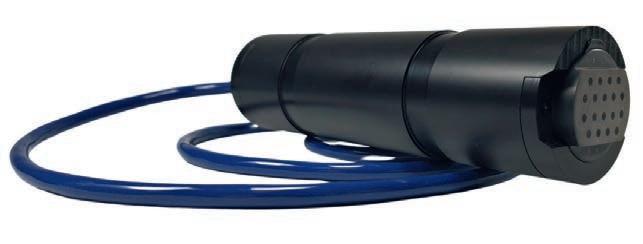
Visit www.anbsensors.com for more information.

Norwegian seafood employers’ organisation Seafood Companies (Sjømatbedriftene) has created a separate committee to represent the interests of members focused on land based fish farming. The organisation’s Managing Director Robert Holmøy Eriksson said: “We already have members such as Salmon Evolution, Giant Salmon [Gigante Salmon, pictured], and Salfjord. In addition, several of the country-based ones have made contact and are in the loop to sign up.“
He added: “If we are to reach the potential of five million tonnes of salmon and trout by 2050, we need to be completely dependent on a sustainable and balanced production between traditional farming, land-based farming and farming at sea.”



The triogen® PPO3 range is the newest generation of positive pressure Ozone generators from BIO-UV Group, capable of up to 1Kg/h Ozone production per generator. The generators incorporate the triogen® PPO3 Ozone production modules, state-of-the-art communications and connectivity, together with advanced safety and operational features. The generators are available in two different control configurations, alongside a range of sized and specified ancillaries as well as a complete turnkey system including feedgas and Ozone injection.
The triogen® PPO3 range meets every aquaculture industry requirement with ozone technology to guarantee water quality for high levels of fish production.
To find out more go online to: www.bio-uv.com/en/products/triogen-ppo3-4/
Cermaq Norway has entered into a contract with the aquaculture technology company AKVA to build a NOK 700m (£51m) post-smolt plant on the island of Sørøya in the Finnmark region. It is thought to be the largest such RAS contract of its kind in the country so far, with design and engineering work starting immediately.
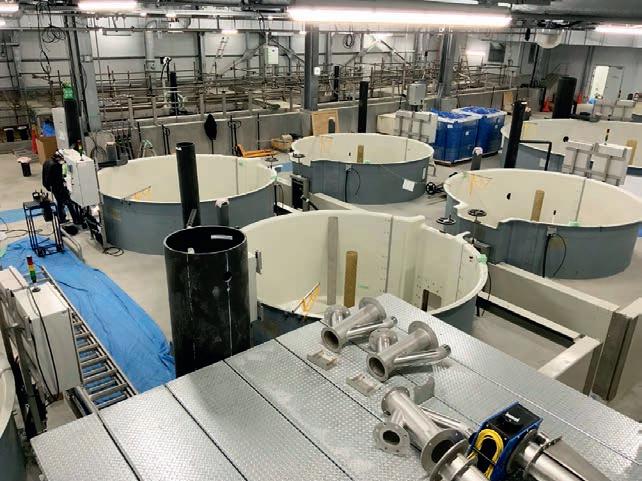
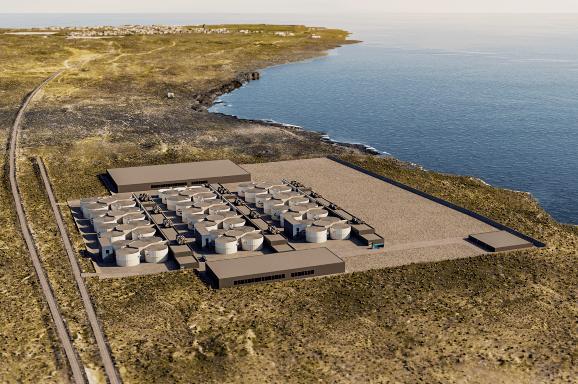

Knut Nesse, CEO of AKVA said: “This contract with Cermaq Norway represents for AKVA the largest contract in Norway ever, and will support the activity level in our Land Based business for the next few years”.
Knut Ellekjær, CEO of Cermaq Norway said the facility will be ready in 2026 and will produce around 12 million male smolts annually.
Land based salmon farmer Proximar Seafood has made the first drawdown from its 8.8 billion Yen (£55m) blue sustainability loan facility. This, it says, will enable it to complete the land purchase agreement for its RAS farm project in Oyama, Japan. The loan was provided by Mizuho Bank, Shizuoka Bank and Development Bank of Japan.
Proximar CEO Joachim Nielsen said: “We are pleased to successfully make the first drawdown of our bank loan and complete the land purchase agreement with the full down payment to [Proximar’s construction partner] Daiwa House Industries.”
The first harvest is expected in mid 2024.
Iceland’s national planning agency has given a further go ahead for the fish farming company GeoSalmo’s plan to build a new RAS salmon farm in the south west of the country. The GeoSalmo project aims to use a hybrid system incorporating RAS (recirculating aquaculture system) and flow-through technology. The facility will initially produce around 7,500 tonnes, but output will eventually rise to nearly 24,000 tonnes. The facility will be built in Ölfus, about 20 miles from the capital Reykjavik, a location which the company says is rich in natural resources such as freshwater and saltwater that are naturally filtered by volcanic rock.
The land based fish farmer Salmon Evolution has said it is now getting on top of its biological problems, after an outbreak of amoebic gill disease (AGD) in its facility at Indre Harøy, Norway. The company says it has taken “swift and appropriate actions to remedy the situation”. This included reducing temperatures and feeding, increased UV dosage on intake water, fast tracking harvest of batch two in a historically strong market and freshwater treatment. The problem now appears to be under control, the statement concluded, and the company has implemented a number of actions to minimise the risk of such event happening in the future, including installing on-site freshwater production capabilities, reducing response time and enabling precautionary freshwater treatments.



Everyone involved in sea fish farming is well aware of the scale of the energy in ocean waves. However, despite huge investments, no economic means of capturing it offshore has been developed. This energy is halved at the shoreline but is still prodigious. If new research fulfils its promise, it could deliver unlimited cheap power. This could be used for servicing offshore pens, to pump water through tanks onshore, or to reduce costs in recirculatory systems.
The first attempt to capture ocean wave energy at the shoreline used natural blowholes. This was a Spanish invention, in which up-and-down wave movement moved air to power a generator on top of a cliff.
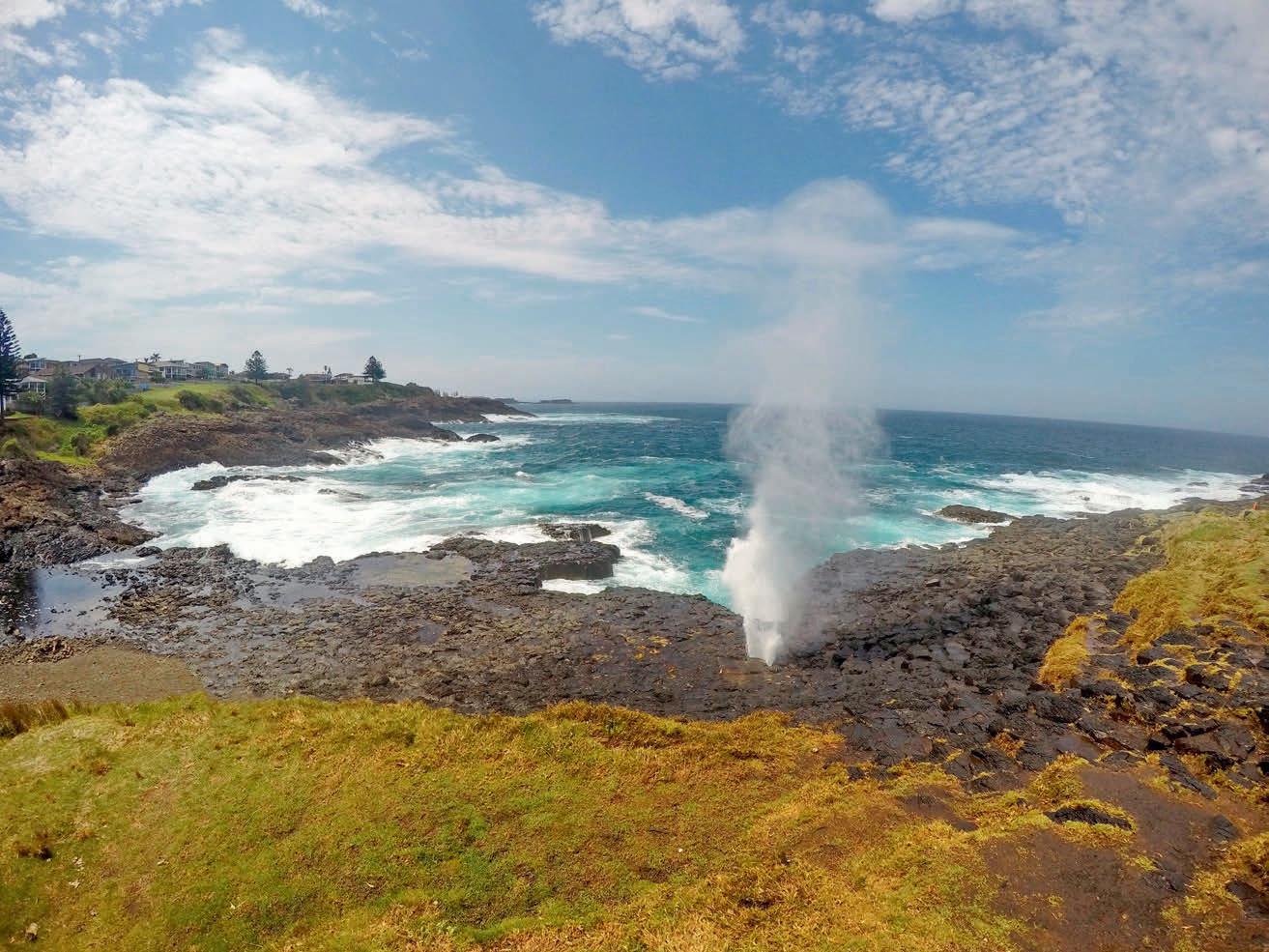
Next, an American inventor proposed man-made blowholes, but the cost of excavating these would have been far too high.
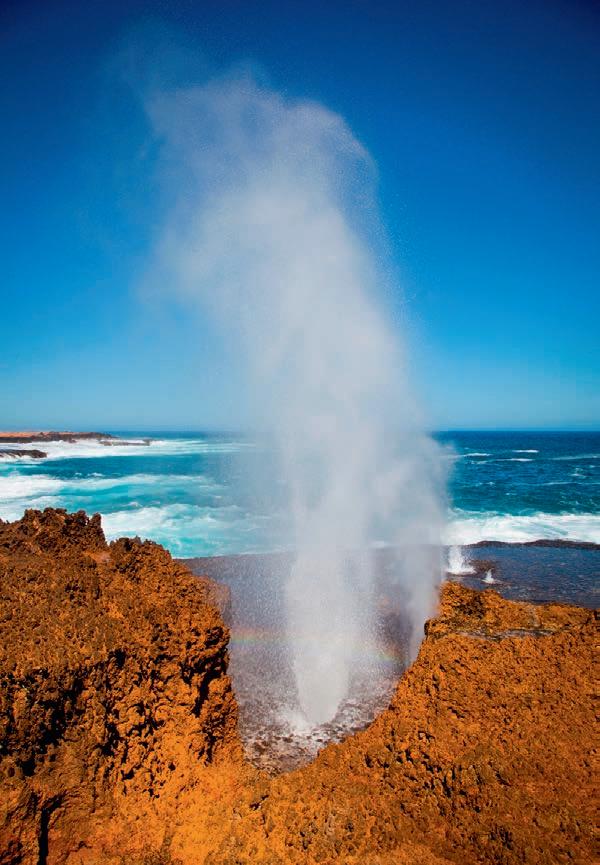
Now, the Lighthouse Authority in Ireland has agreed that its site at Loop Head, County Clare, can be used for a fullscale pilot operation, and proposals to include fish farming in the list of applications of this new source of green and cheap energy are most welcome.


Sea water pumped by this almost free energy could enable tanks on land to replace pens in the sea for fish


 Above: Blowhole at Kiama, Australia
Left: Quobba blowhole, Australia
Above: Blowhole at Kiama, Australia
Left: Quobba blowhole, Australia
Sea water pumped by this almost free energy could enable tanks on land to replace pens in the sea
“Rock power” could offer a clean, sustainable source of energy for coastal RAS plants and inshore fish farms, scientists hope.
By Professor William Kingston
farming. This would have most of the advantages of recirculation at less cost. All the problems associated with increasing sea water temperatures could be easily dealt with. Disease could be monitored and controlled, and less food would be wasted. The danger and cost of storm damage, including fish escape, would be eliminated.
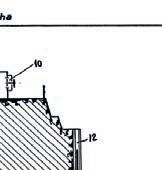
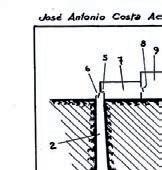

The standard public objections to fish farming in moored pens because of the harmful effects of faeces, waste and contacts with wild species, would lose all their force. There would be no loss of employment in regions where this is scarce, and the conditions for workers would be greatly improved.
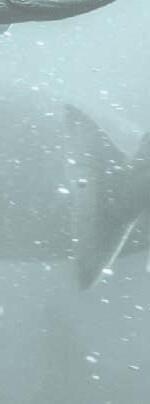
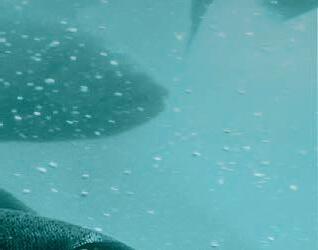
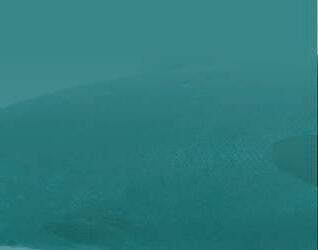
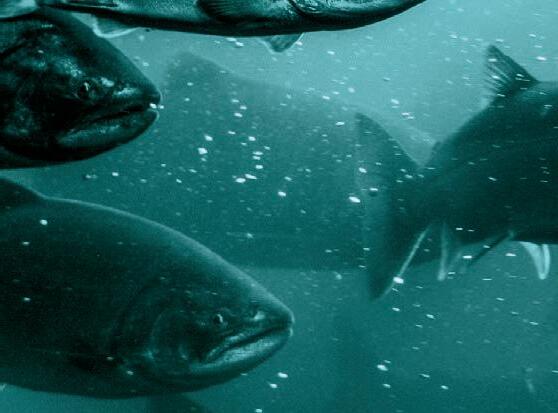

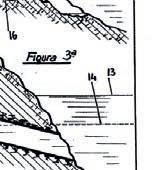

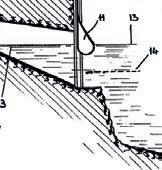



A new research fund, Sustainable Marine Economy Partnership (SWEP) included fish farming in its first call for proposals. Twentyeight countries are members of SWEP (although the UK has not joined yet) so any firm in these can be paid as partners to monitor and replicate this development. For more information, see the SWEP website at bluepartnership.eu.



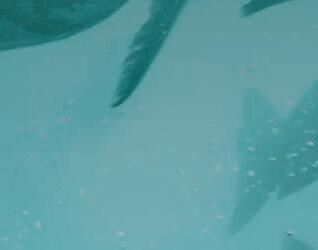
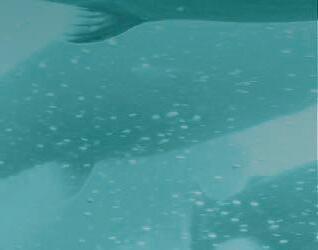
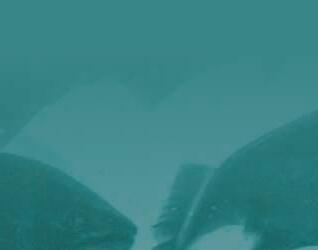
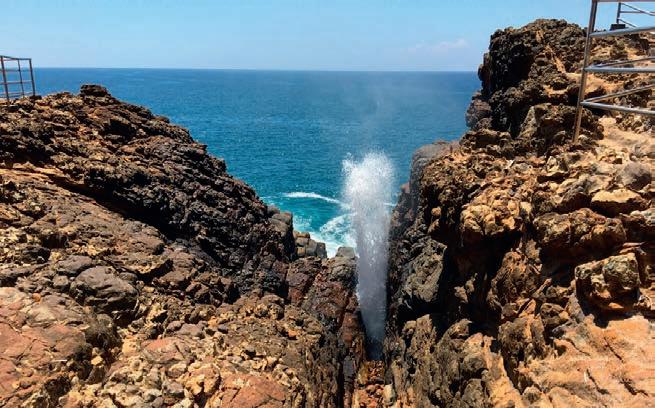

William Kingston is an Adjunct Assistant Professor and researcher with Trinity Business School, Dublin






There are some who may question if that is now possible, given just how bitter relations are between the industry and the government on the salmon ground rent tax issue.

The Icelandic government has indicated that it wants to change the tax system on fish farming, with the industry praying it does not go down the same road as Oslo.
The report says: “It should come as no surprise that Norwegians should set the bar high in this regard, since fish farming in that country has proven its economic and social value many times over.”








“In Iceland it is not unreasonable to expect that over the next 15-20 years Iceland could produce 550,000 tonnes a year in the sea and on land. Annual production in Scotland is currently 220,000 tonnes while world production is 2.5 million tonnes with Norway responsible for well over a million tonnes.







The report states: “Icelanders face great opportunities for increased value creation through growth in aquaculture.






The Icelandic government plans to publish a new report on the future of aquaculture and how it should be taxed before the end of the year.
It is seeking a wide range of opinion including from those who are opposed to aquaculture and claim it poses a threat to the environment, and to wild salmon stocks.

The worry in the aquaculture sector is that the government may try to be all things to every group, thus failing to fully exploit the country’s huge potential.
SFS, Iceland’s Association of Fishing Companies, is convinced the country can overtake Scotland as the world’s third largest salmon farming nation within a few years, provided government intervention is not too heavy.
The Association has published a report urging the Althing, the country’s parliament, to set the bar high. It points to the success of Norway where salmon exports exceeded NOK 100 billion (£7.3bn) for the first time last year. And it is not going to stop there.


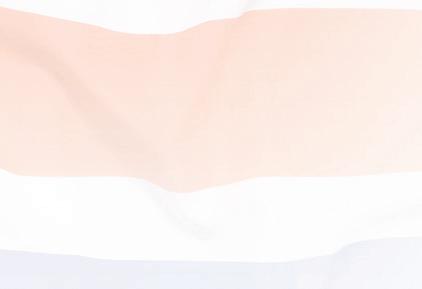
SFS says Oslo has set out ambitious goals to treble Norwegian production to five million tonnes of salmon and trout by 2050.
“This development has actually already started, because in recent years, production and value creation in Icelandic aquaculture has multiplied, especially from salmon farming.”
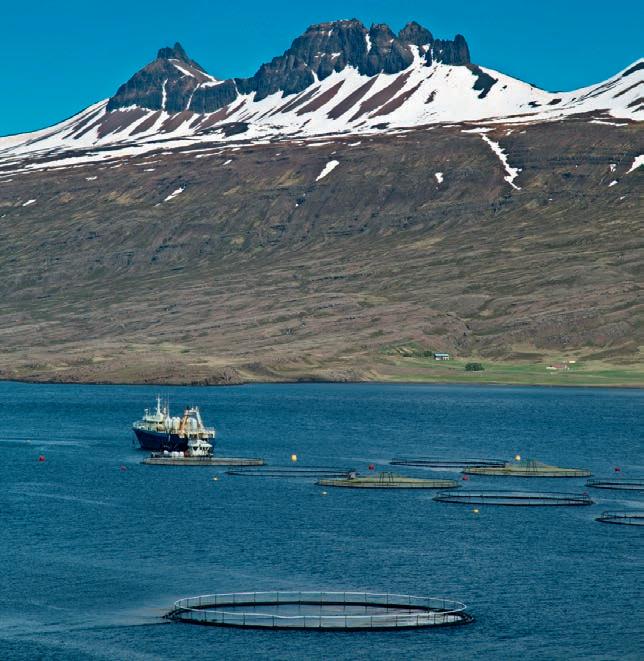


In little more than a decade production there has gone from 1,100 tonnes in 2011 to 45,000 tonnes last year, with exports giving the national economy a significant boost.
On a social level, traditional coastal fishing communities, that were in danger of disappearing a few years ago, are returning to
”Over the next 1520 years Iceland could produce 550,000 tonnes a year in the sea and on land
full economic health thanks to the growth in salmon farming.
With a population of around 370,000, Iceland’s economy depends on exports more than most other countries.
SFS is clear about what should happen: “It is necessary to set clear goals for the scope of aquaculture and formulate a policy on how to reach those goals in a responsible manner.
“As it stands today, there are no plans for how large a scale in fish farming the government is aiming for. “ It does expect that stance to change, however, because of the strategies of the various governing parties.
The report adds: “Emphasis will be placed on opportunities for job creation and the importance of the industry being built on the basis of sustainability, scientific knowledge and the protection of wild salmon stocks.”
Last year the Food Minister Svandísar Svavarsdóttir hired the Boston Consulting Group to conduct an assessment of the state and future of aquaculture in Iceland and in February this year it produced a fairly upbeat report.

It said: “With rapid growth in traditional aquaculture over the last decade, Iceland is witnessing the emergence of a large-scale industry.
“As global demand for aquaculture



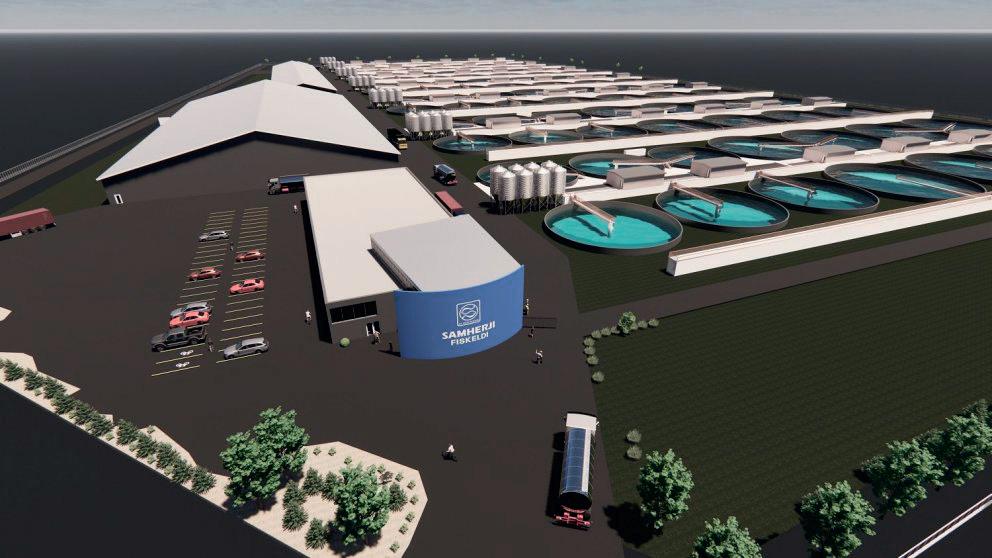
products is expected to rise, Iceland’s natural endowments positions it well for continued growth.
“Across the four aquaculture sectors, Iceland’s economic value potential over the next 10 years is significant in relation to the overall economy.”

Boston adds: “Aquaculture can create significant economic value through employment, tax and fee revenue and exports.
“Relatively, the highest value is captured by the municipalities where aquaculture is operated. Aquaculture has already in the last decade helped reverse trends of population and economic stagnation or decline in several smaller municipalities in the West- and East-fjords.”
It also says that a key factor for growing aquaculture as an industry is access to local expertise and knowledge.
This creates an opportunity to develop a local knowledge industry driven by a thriving research community and educational institutions, stressing that future strategy and resulting policy should amplify the positive impact and limit any negative impacts.
There were also excellent opportunities for land farming particularly in the south west area of the country where there is ready available geothermal energy producing hot water, experienced processing operations and easy export access through the nearby Keflavik airport.
SFS stresses that land based farming should not be seen as a replacement for sea pen activity. That would be considered both unrealistic and irrational, it argues, adding: “Most experts agree that production from land farming will not replace production from sea pen farming, but will complement it.
“It is clear that there is a lot of work to be done with an ambitious and responsible development of marine and land farming in this country.
“How extensive aquaculture in Iceland will be will ultimately depend on the government’s policy.
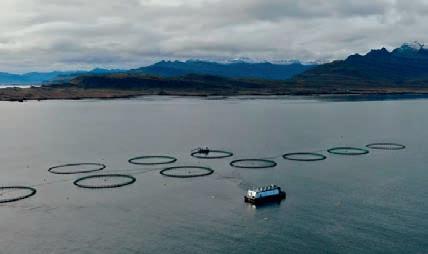
“Taking into account the great economic and social interests that are under them, the government must pave the way for responsible development in the greatest possible harmony with the environment and society.
In order for this to happen, it is necessary to put forward ambitious plans for the scope of fish farming in the long term.“
IN a recent article for the Westfjords news site bb.is, Daniel Jakobsson, Director of Business Development at Arctic Fish, was critical of another newspaper’s claims on fish farming tax. He said when discussing the industry it was important for it to be based on facts. But unfortunately, that was not always the case. He adds: “It is the [strong] desire of those who work in the sea… to be participants in a flourishing and growing society.
Taxes to society are one way to do that, and seafood companies do not shy away from that. In order to support tax collection, the companies need to be financially healthy, so that further investments and value creation can be guaranteed.

“It is this balance that leads to the greatest return of the communities,” Daniel Jakobsson maintains.
NOT everyone in the country is enthusiastic about certain aspects of aquaculture. The Icelandic newspaper Morgunbladid reports on its website that 45 restaurants and shops have taken salmon from open sea farms off their menus and shelves, following a campaign by the Icelandic Nature Conservation Fund and the Wild Salmon Conservation Fund. Two recent opinion polls shows a majority against this type of salmon farming.
They said it… at the Summit For Nutreco, when partnering with businesses producing novel ingredients “…it’s the partnership element that comes first. Investment, if required, is just one tool in the toolbox.” Erik Tveteras, Director of Venturing, Nutreco.
“It’s a challenge addressing welfare when there are so many species in aquaculture - but it is a challenge that is being addressed.” Dave Little, Professor of Aquatic Resources and Development, University of Stirling.
“You can’t fool biology with money or technology. The biology comes first!” Øyveind Fylling-Jensen, Chief Executive, Nofima.
“This is a uniquely exciting time in terms of land based aquaculture. We have crossed the Rubicon in terms of proof of concept.” Ohad Maiman, Managing Partner/Founder, Aquafounders Capital and The Kingfish Company.
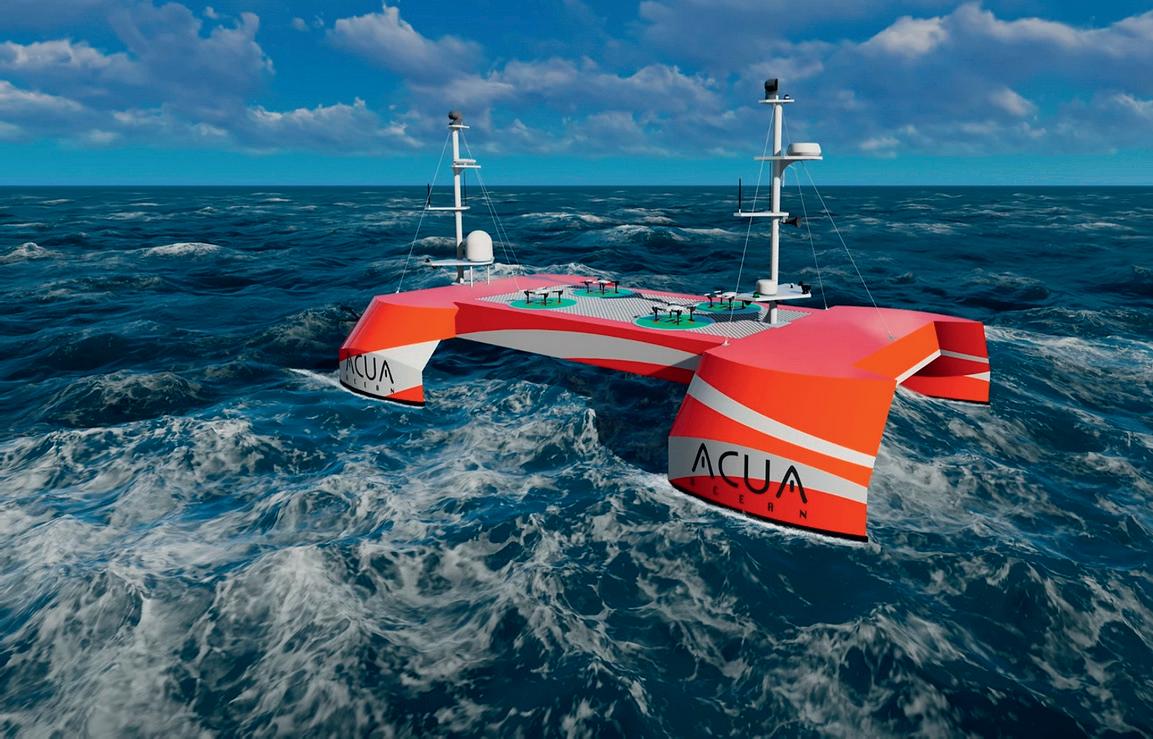
With our food system increasingly under stress from conflict and climate change, the Blue Food Innovation Summit series of events aims to put blue food, sustainable aquaculture, and restorative ocean practices at the heart of the global conversation.
Taking place in London on 23-24 May, the 2023 Summit brought together ground-breaking companies from around the globe to discuss forward-thinking approaches to aquatic food production, including sustainable aquafeed, seaweed, fish health and welfare, and digital platforms for smallholder farmers.
It also served up some tasty ocean-based food including tilapia, kanpachi, shrimp and kelp flakes.
Jim Leape, Senior Fellow and Co-Director, Stanford Woods Institute for the Environment, opened the summit on day one, offering insights into how seafood will play an integral role in improving resilience and strengthening the entire food system.

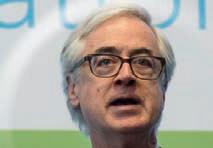
He is also a senior member of the team working in the Blue Food Assessment, a joint initiative of the Stockholm Resilience Centre at Stockholm University, the Centre for Ocean Solutions and Centre on Food Security and the Environment at Stanford University, and EAT that brings together over 100 scientists from more than 25 institutions around the world. The Stockholm Resilience Centre and Stanford University are lead science partners and EAT – a global, non-profit start-up – is the lead impact partner.
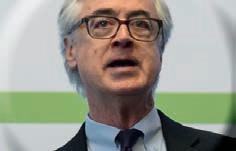
At the Summit, Leape pointed out that food production is a major contributor to climate change and biodiversity loss, but aquatic or “blue” foods can have a smaller footprint than their equivalent on land.
Aquatic foods are also incredibly diverse, he said, with 600 species currently caught or cultivated. And he stressed they should just be assessed in terms of protein alone – aquatic foods are exceptionally rich in nutrients.
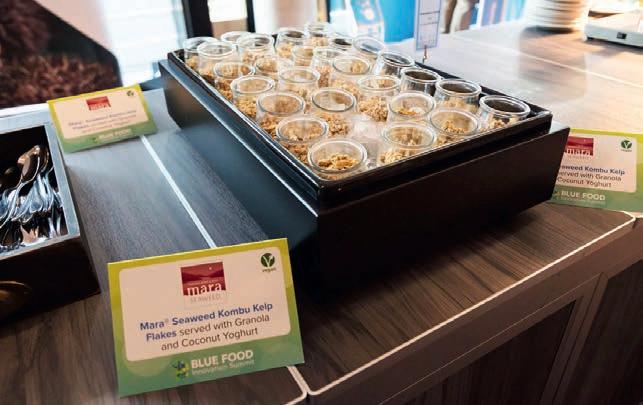
Feeding the world while saving the planet will require fresh ways of thinking, attendees at the Summit heard. By Robert Outram
Leape said that the Blue Food agenda means that not only more seafood, but a greater variety of seafood needs to be produced.
He said: “A broader concept of ‘sustainability’ is needed” including both environmental and social sustainability.
“We need to switch to those species that are lightest in their footprint.”
He also argued that production systems need to recognise the role of women – who make up half of the workforce in producing Blue Food.
And he acknowledged concerns about over-harvesting resources traditionally used by local people: “We should not be operating at the expense of local nutritional needs – that does not mean ‘don’t harvest feed fish’ but it does mean that we need to make sure there are enough left for people.”
As well as producers and the supply chain, Leape said retailers and foodservice businesses have an important role to play, for example in introducing new species and new ways of eating: “We can give diners options they didn’t know about before.”
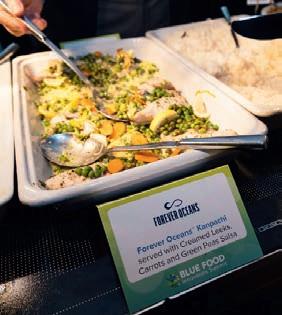
He concluded: “There is a need for innovation on many fronts.”
On day two, Giles Cadman, Ecopreneur and Non-Executive Chairman of Cadman Capital, took to the stage to discuss the company’s success story with Urchinomics, a company they met at the previous Blue Food Innovation Summit, and delved into the pivotal role of combining nature-based solutions with commercial viability in order to achieve sustainable aquaculture production.
He explained how his biggest personal wakeup call over climate change came in 2017 when Hurricane Irma hit the Virgin islands, where he was living, and destroyed his home.
Cadman said: “There is a way to make profit for investors and help reverse climate change.”

The example he cited was Urchinomics, founded by Brian Takeda and funded by, among others, Cadman Capital, which protects and restores kelp forests in danger from overgrazing sea urchins, while removing the urchins and ranching them, for human consumption – urchins are a delicacy in many parts of the world – and to extract nutrients and ingredients for fertiliser.



He concluded: “We are at the dawn of a new era, and the
opportunity is in our hands. The people in this room have a chance to make a difference today. I believe the right time has come, and that time is now: to invest in nature-based solutions for a sustainable future.”
The Summit’s “Start-up Showcase” was introduced by Mercedes Groba of EIT Food and Harry Wright of accelerator funder Bright Tide, and featured six businesses with great ideas to help transform the Blue Economy.
ACUA Ocean is developing the world’s first uncrewed drone ship to be powered by liquid hydrogen with a range of up to 5,000 nautical miles and an endurance of 40 days at sea. Michael Tinmouth, COO and Founder, said the vessel is designed to operate in open ocean sea states of up to three metres, and has the ability to carry up to a five ton payload and with the power to deploy a range of commercial and environmental sensors.
Aquanzo is pioneering farmed marine ingredients to produce marine superfood for animal nutrition while protecting the Ocean. The company aims to farm the zooplankton Artemesia in land based facilities, improving the stock through genetic selection.

AquaRech was founded to eliminate systemic barriers facing small and medium sized fish farmers. Aquarech sources high quality inputs, fingerlings, and aggregates fish produced by farmers through a use of a mobile app technology (Blue ICT), bringing together fish farmers, traders, fish feed companies in one place. The app is integrated with an IoT sensor that measures a farm’s water temperature supporting precision fish farming, lowering costs by 35%.
Presenting, David Okech Okeck, Founder & CEO, said Aquarech’s catfish farmers shorten their production from 13 months to 8 months thanks to their access to top quality fish feeds, which boost yields and increase profit by 45%. Recognizing lack of access to credit as a formidable barrier, AquaRech gives farmers up to 90 day credit period (“Blue Finance”) to pay for the feeds. By providing cold chain facilities to help distribution, Aquarech provides market access for small and medium sized fish farmers.
MariHealth Solutions are developing a diagnostic molecular screening tool for effectively and proactively assessing the impact of farming operations, nutrition and environmental changes on farmed fish and shellfish. Sarah Carroll, presenting, explained the mission is “leveraging biotech for animal welfare.”
The company is accumulating a genetic database with samples from more than 2,000 animals.
Next Tuna designed an innovative Floating
Opposite from top: MAcua Ocean drone vessel; Jim Leape; Mara kelp flakes with granola This page from top: XSea urchins; Kanpachi; Giles CadmanA broader concept of ‘sustainability’ is needed, including environmental and social sustainabilityPhoto: Urchinomics
RAS to overcome the logistical challenges of tuna reproduction –which is suitable for all maritime aquaculture, the company said. Andrew Eckhardt, presenting, said the concept had been proven at a small scale in Murcia, Spain with the help of the Spanish Institute of Oceanography. Now, Next Tuna plans to produce Atlantic Bluefin Tuna in Valencia, Spain.
Viable Gear seeks to reduce petroleum-based plastics in our ocean by producing fishing and marine farming gear using polymers derived from renewable resources. The company believes that tubular mesh, bait bags, shellfish bags, scallop lanterns, and grow lines could be made in a more environmentally responsible manner and perform similarly to existing products.



To achieve this, said Founder and President Katie Weiler, the company is bringing together experts in business, materials science, aquaculture, and fishing. The company’s first product was a seaweed-based bait bag for the lobster industry.
Also at the Summit, panels and breakout discussions addressed some of the key issues for Blue Foods.
The Producer Panel included Melanie Siggs, Global Seafood Alliance; Andrew Swanson, V-P Research & Development, Cooke [fishing and aquaculture group]; Katherine Bryar, Global Marketing Director, BioMar; Catarina Martins, Chief Technology and Sustainability Officer, Mowi; and Tore Eliassen, Global Head of Sustainable Development, Cermaq.
Katherine Bryar – also a founder of Fed by Blue, an initiative set up to educate the public regarding the contribution of the ocean economy to our food supply – commented: “We need to stop this conversation about wild versus farmed. It is about responsible blue foods and this can happen in both sectors.”
Catarina Martins talked about the investment in technology Mowi is making, and said: “When we think about the blue revolution, this is definitely a digital revolution. Over the last one to two years we are
finally able to connect the dots when it comes to data. [We are] putting all these pieces of the puzzle together to bring actionable insights, which is really exciting to see.”
In the panel discussion on “the power of data”, IBM’s Fearghal O’Donncha said: “Data is critical. We have made the transition from ‘big data’ to ‘intelligent data’. A big focus for IBM is to bring in a new wave of AI tech for enterprises and industry stakeholders. We want to see people interacting with AI, creating their own applications and refining their own models.”

The audience also heard about data applications, including Scoot Science’s marine data platform; DSM’s web based sustainability service Sustell; and Aquabyte’s data management and sharing application for salmon farmers.
Scoot Science’s Jonathan LaRiviere said: “Fish farms can be the lighthouses of the coast. They have decades’ worth of monitoring data.”
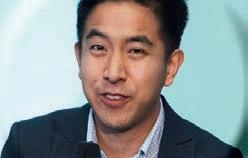

In a discussion on the application of genetics, Professor Ross Houston, Director of Genetics and innovation with benchmark, on the link between aquaculture, genetics and a sustainable future. For example, in 12 years genetic selection had achieved 110% increase in growth rates for Nile tilapia.


Houston added that this field of science is also crucial in improving fish health: ”Genetics is the ultimate tool for preventing disease.”
Carrie Ferrence, Co-CEO, Pacific Hybreed also described how “shuffling” genes for shellfish production in the northwest Pacific had led to improvements in survival rate of 30-40%.
Other topics, among many others, included the future of land based fish farming; the ethics of aquaculture; prospects for novel ingredients in aquafeed; and opportunities in the seaweed sector.
The next Blue Food Innovation Summit will take place on May 21-22, 2024 at a venue in London to be announced
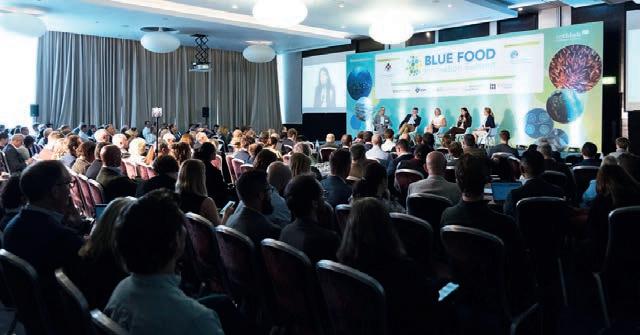
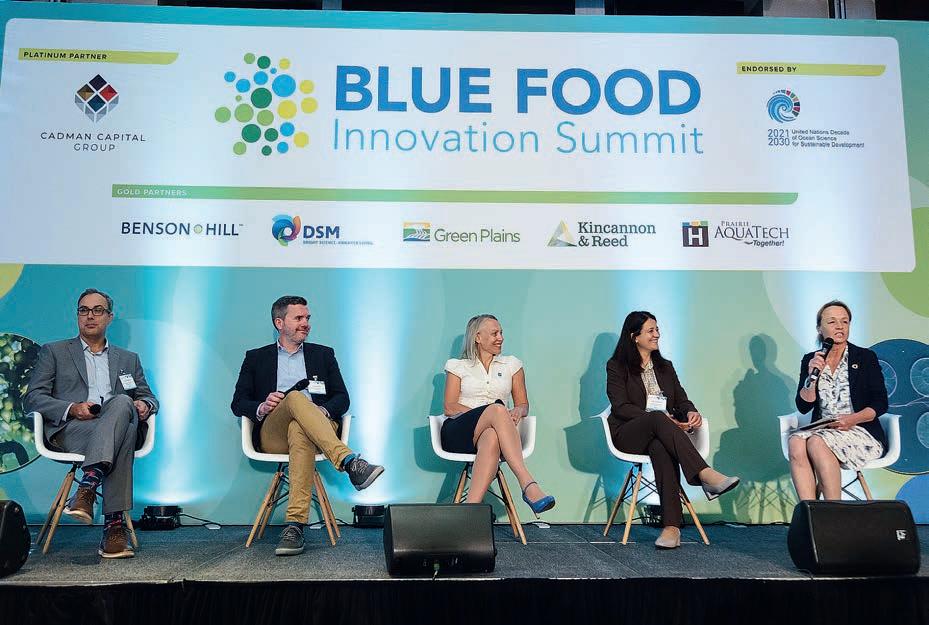
When we think about the blue revolution, this is definitely a digital revolution
”
The Science Skills Academy (SSA) is an inspiring project that aims to introduce the world of science and technology to primary and secondary pupils in the Highland region.
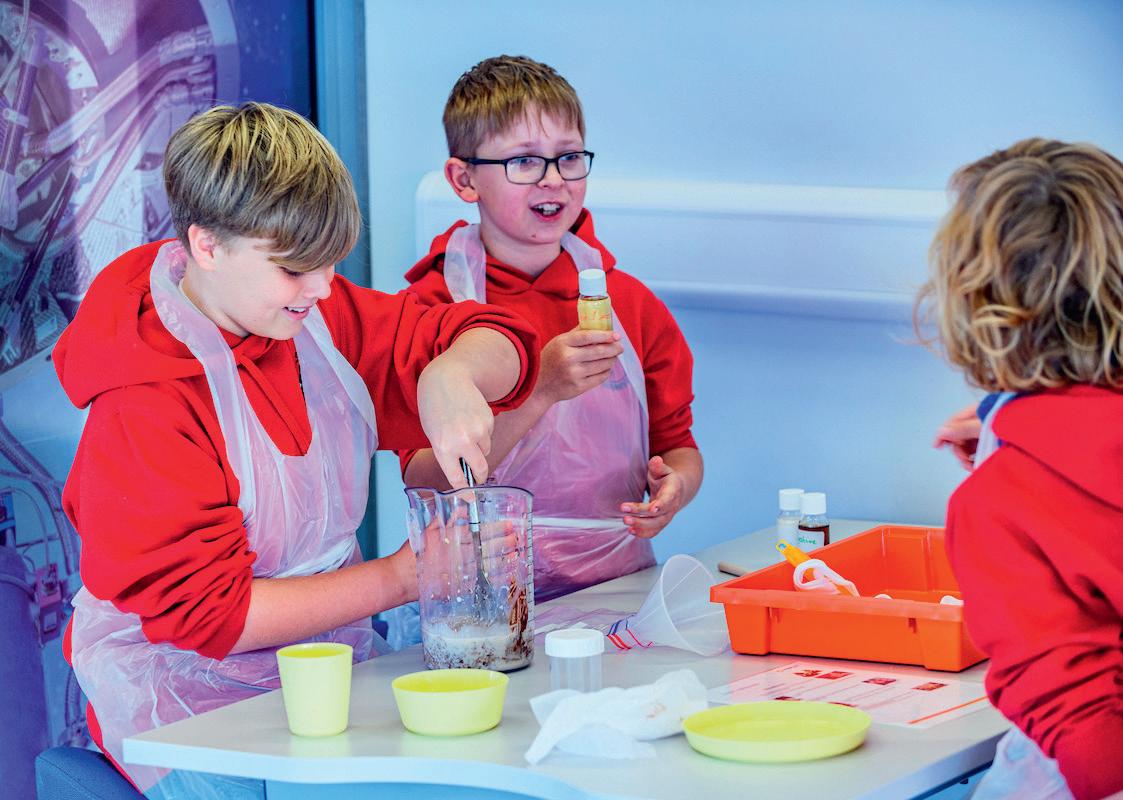
SSA’s success lies in its innovative approach to STEM education. Accessible to all, it has worked with 98% of local schools in Highland, revolutionising learning by taking 10-14 year old pupils out of the classroom and into specially designed Newton Rooms.
Some young people have visited their local Newton Room multiple times over the years, exploring topics such as salmon farming, renewable energy, and rocket launches. Importantly, they have also had the opportunity to hear from young ambassadors already working in these industries.
Recently, SSA has achieved a significant milestone, exceeding 20,000 engagements with pupils, teachers, and parents. And now, it is actively seeking new partnerships with businesses to expand its impact. Plans include reaching new areas, covering more subjects, and establishing itself as a permanent fixture in the Scottish STEM landscape.
The initiative, essentially a science centre for the north, was initiated by economic development agency Highlands and Islands Enterprise (HIE), with support from Highland Council and funding from the Scottish Government through the Inverness and Highland City-Region Deal. It works closely with the regional university, UHI, to ensure a pipeline of STEM-interested pupils that can access apprenticeships and Further Education.
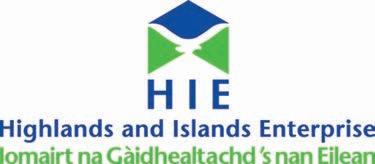
Morven Fancey, Head of Universities, Education, and Skills at HIE believes there’s a massive opportunity presented by SSA for employers to stimulate interest in their industry and develop skills early. She says: “There are significant investments being made in aquaculture, marine conservation and R&D. To fully capitalise on these opportunities and ensure Scotland’s growth, a skilled workforce is crucial, and the Science Skills Academy plays a vital
Above: Primary pupils engaging in Newton Module, Thurso Newton Room
Below: Primary pupil inspecting cells under the microscope

role in connecting young people with STEM careers and fostering a diverse workforce.”
“We’ve showcased a way forward for STEM by joining up services, improving access, and achieving high uptake. Our young people can see the opportunities for them in emerging industries and their supply chains.”
SSA has recently partnered with the Glasgow Science Centre and has plans to expand into the Northern and Western Isles and Moray, demonstrating its commitment to widening its reach and ensuring a sustainable and effective approach to STEM education in Scotland.
The SSA believes that further investment from industry and the public sector will be key to unlocking Scotland’s STEM potential, fostering the growth of new industries, and nurturing and retaining young talent.
Find out more:
www.scienceskillsacademy.co.uk
Get in touch with STEM Engagement Manager: emma.plato@hient.co.uk
OUR Salmon and Aquaculture module is a fantastic introduction to the sector for primary 6 and 7 pupils. In less than a year, 1,500 young people have learned about salmon anatomy up close in the laboratory, re-enacted the many challenges in the lifecycle of Atlantic salmon in the migration game, and researched salmon nutrition –developing and pitching their own salmon pellet products. Teacher feedback: “The children really enjoy the hands-on practical activities,
and the opportunity to use microscopes etc. which aren’t available to them at primary school. It’s a great way for the children to learn about STEM careers.
 By Vince McDonagh
By Vince McDonagh
Norway plans to classify it as seafood; vegans and vegetarians constantly sing its praises – and, above all, it is a free gift from nature (almost!).
Seaweed cultivation is enjoying a huge revival and is now being hailed as the next big development in marine aquaculture. It is not a new crop. Coastal communities around the British Isles have been gathering seaweed for centuries, using as both a food and for medicinal purposes.
Now governments are waking up to its potential by commissioning various studies into how the sector can be developed.
Last year Dr Elisa Capuzzo at the UK Centre for Environmental, Fisheries and Aquaculture Studies, was commissioned by Defra (the Department for Environment, Food and Rural Affairs) to review the status of the UK seaweed sector.


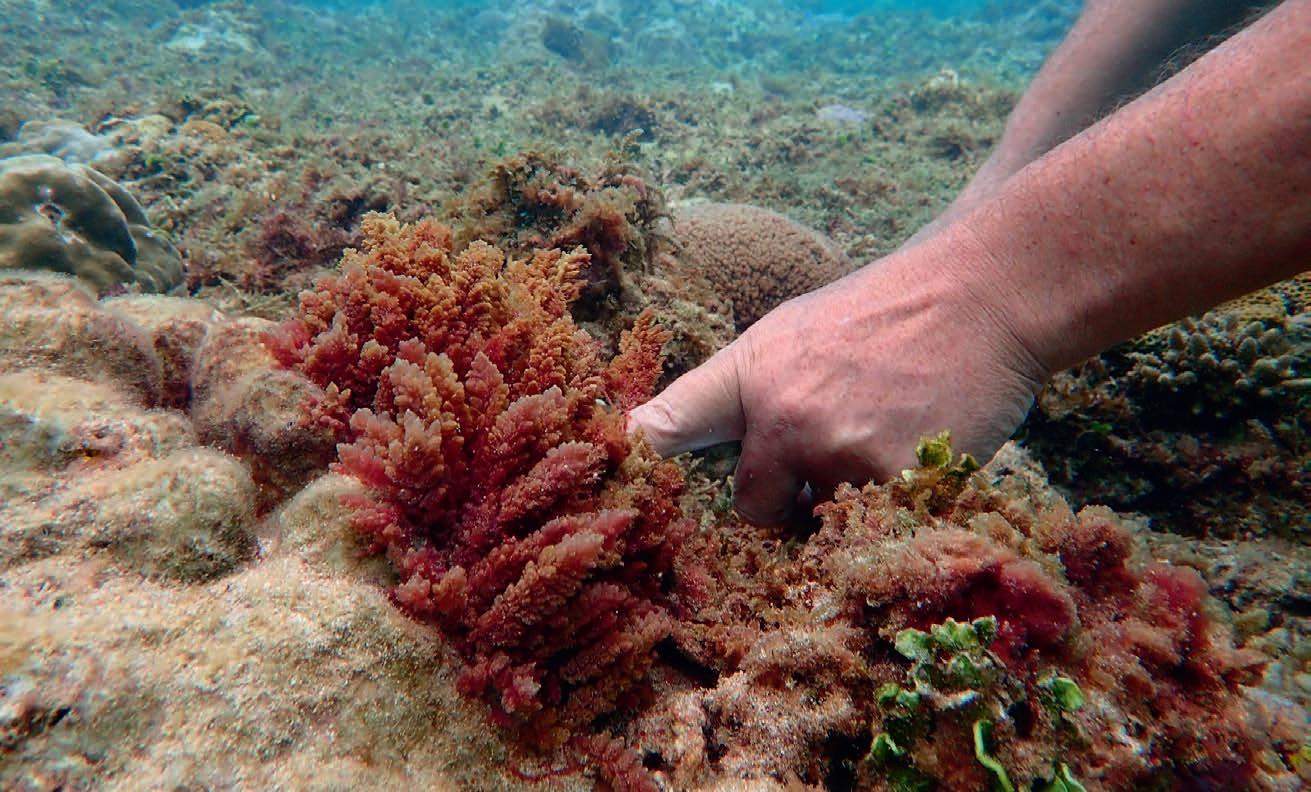
She says seaweed businesses have more than doubled since 2016, and are mainly located in Scotland and England.
Food and drink is currently the main focus for UK seaweed products, with around one-third of related businesses targeting this market.
“Of the remaining businesses, 19% target the beauty industry, while 13% produce nutraceuticals such as nutrition supplements.
“Other businesses provide fertilisers, feed and supplements for
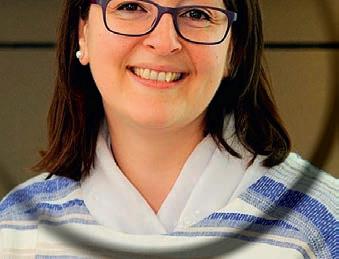

animals, alginate, bio-packaging, consultancy services etc.

Certainly, since 2016, there has been an increased diversification of products and businesses,” Dr Capuzzo adds. The Nordic countries are also moving ahead. Earlier this year, Norway, credited for turning salmon farming into a global industry, intends to change the rules so that seaweed and kelp are defined as a “seafood”, thus coming under the remit of the Norwegian Seafood Council.
Fisheries and Oceans Minister Bjørnar
Since 2016, there has been an increased diversification of products and businesses
Governments are waking up to seaweed’s potential as a future blue economy star.
Skjæran said it was important that Norway leads the way, so the government is investing in facilities for research and development in the field of seaweed.
Skjæran says: “This is an industry with great potential, which has long signalled a strong need for access to resources for marketing and research funding.
“Norway’s long coast and favourable conditions for the cultivation of seaweed and kelp means that the industry can have great potential.”
He adds: “We are working hard to improve the opportunities for Norwegian exports abroad, also for new marine products. This work is part of a larger and long-term goal to facilitate activity along the entire coast and create more opportunities for the Norwegian seafood industry.”
Nordic countries love to levy tax – and seaweed is no exception. Oslo is now proposing changes to the regulations so that exports of seaweed and kelp products for human consumption are subject to a market tax allowing the Norwegian Seafood Council to include seaweed in its promotional work.
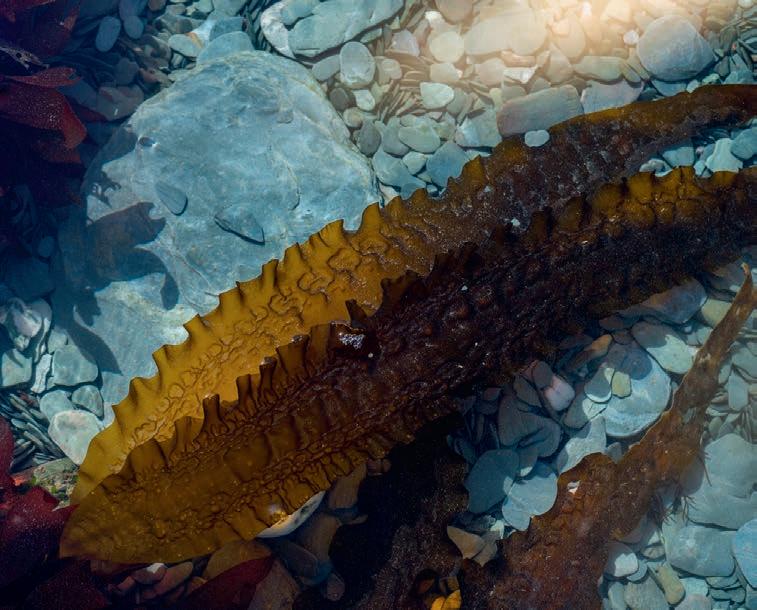
Exports for human consumption will also be subject to a research and development fee which will be included in the budget for the Fisheries and Aquaculture Industry’s research funding (FHF). Britain is not too far behind when it comes to driving the industry forward. Dr Capuzzo says: “In 2021, seaweeds were still harvested from the wild in various parts of the UK, mainly at a small-artisanal scale.
“However, there were an increasing number of commercial seaweed farms being established. For example, in 2016 there was only one commercial seaweed farm in the UK, while currently there are at least 10 active farms, suggesting a shift towards farmed aquaculture sources of seaweed.”
She says the UK has expanded in the last decade, with a variety of products now available on the market.
“Positive press coverage around consumption of seaweed is also helping to corroborate consumers’ perception of seaweed as a healthy and nutritional food.
“Seaweed-related businesses in the UK have more than doubled since 2016.
“In the 2021 review I found at least 74 businesses (harvesting/ farming seaweed, processing seaweed and/or providing seaweedrelated services), mainly located in England and Scotland and relying on seaweed harvested from the wild in the UK,” she adds.
As to the future, she believes the UK seaweed industry has the potential to thrive and support a range of businesses.
“However, for the industry to grow and realise this vision, several knowledge gaps and challenges remain and need to be addressed,” Dr Capuzzo stresses.
THE SEAWEED Academy is the UK’s only dedicated seaweed industry facility offering a complete package of training, education, and business development – a one-stop-shop for supporting expansion and skills development for the seaweed aquaculture industry.
Operating its own nursery and based at the Scottish Association for Marine Science near Oban, it provides an innovative and holistic service to the sector, offering :
Research and technical input on issues such as disease management
• Developments and assistance in the field of social and commercial licencing



• Support in establishing a commercial business
• Cryopreservation of strains in the CCAP
• Technical courses through Argyll College such as sea safety and manual handling.
Two years ago it won significant UK government funding to help develop seaweed as a commercial crop.

Carbon Kapture is launching its first seaweed farm through a partnership with a shellfish farmers in Ireland. The company says it will be able to grow about 11,000 metric tons of seaweed per year, which would make it one of the largest seaweed farms in the world.
Carbon Kapture Co-Founder Howard Gunstock says: “Our


partnership with shellfish farmers is a game-changer for the industry and for the fight against climate change.” The group says it plans to establish a global network of 200 farms over the next 10 years, the company said.
Gunstock and his business partner, Dave Walker-Nix, came up with the idea after searching for a project with impact.
JAPAN’S Nissui has become the latest global seafood name to go into the seaweed business.
It is investing in Australian cultivator Seascape Restorations (trading as the Immersion Group) whose work has positive environmental benefits.
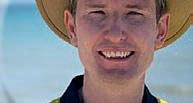
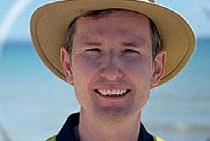
The Immersion Group cultivates Asparagopsis, a red seaweed which Nissui says “contributes to the reduction of methane emissions from livestock”.

Asparagopsis is a type of red algae found in the tropical and subtropical waters of Asia and Oceania.
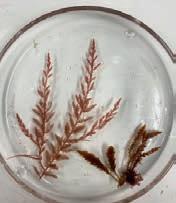
Nissui says that if used as an additive in cattle feed, the seaweed inhibits the growth of methanogenic bacteria and can suppress methane emissions from the animals by up to 98%. Research is now underway to grow and produce Asparagopsis as a feedstuff.

Marine energy, defence and science company Sonardyne has been selected to provide a subsurface communications and navigation network for the Smart Sound Connect Subsurface (SSCS) Project. Sonardyne will partner with the University of Plymouth and Plymouth Marine Laboratory to install, operate and manage an underwater acoustic communications and navigation network that will link to existing surface assets at the Laboratory.
During 2023, Sonardyne will provide nine navigation and communications nodes, which can be deployed on the seabed either as fixed or mobile networks. Two integrated sensor nodes also will be supplied to enable real-time reporting of key subsurface operational safety parameters. Sonardyne’s new Origin 600 ADCP with integrated acoustic communications and onboard Edge processing will be at the heart of these.
The latest underwater drone from marine manufacturer QYSEA Technology is equipped with a 4K 60 FPS professional-grade camera system which is omni-directional, allowing visibility and filming in any direction.
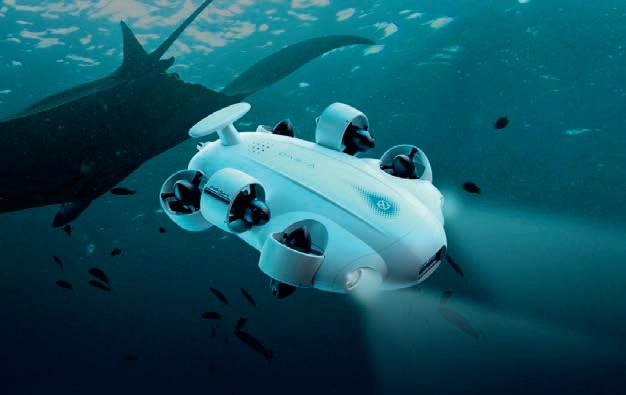

The FIFISH V-EVO is QYSEA’s latest addition to its award-winning V6 series pf small drones. It also comes with dual 5000 lumens 5500K white LED lights, and its unique six-thruster layout enables unrestricted movement. The drone also uses AI-powered image enhancements to improve footage clarity. An attachment port accommodates a variety of tools. The FIFISH drone is aimed at both leisure and professional users.
The global market for underwater robots is expected to reach a value of US$ 1.2bn (£0.95bn) in 2023 and US$ 4.3bn (£3.4bn) by the end of 2033, growing at a CAGR of 13.7%. That is the conclusion of a market report by research business Fact.mr.
The report suggests that growth in the sector is currently being held back by a world shortage of semiconductors, which are needed for the manufacture of unmanned underwater vehicles (UUVs) and remote operated vehicles (ROVs) like the Saab Seaeye eWrov (pictured). Underwater robots have become useful for various applications, the report says, but their high cost is restricting market growth. Players in the underwater robot market are looking to reduce costs of their products, in order to attract medium and small-scale users.




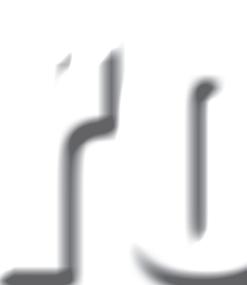
Underwater operations are difficult and hazardous, by their very nature. The challenges of the sea and often poor visibility mean that operating safely requires skill, training and technology.
The inherent risks were made all too clear earlier this year in a court case in Malta, when a diver was awarded 534,000 (£472,000) in compensation for life-changing injuries after a diving operation at a fish farm went wrong.

It’s not surprising, then, that even while some operations still require human divers, especially if they are technically complex, the marine sector is increasingly turning to remotely operated vehicles (ROVs) or even unmanned underwater vehicles (UUVs), otherwise known as autonomous vehicles.




In the UK and Norway, there is no doubt that the biggest driver for this is the energy industry – including oil and gas, and renewable
energy – but aquaculture also creates a requirement for underwater services.
The Shetland and Aberdeen-based marine engineering and support services business Ocean Kinetics, for example, offers not only skilled diving services but also a range of ROVs. The company recently launched diving inspection vessel, the Rubymay, which is fitted with two ROVs, a new 10-kilowatt, 240-volt generator, a crane Hiab 013T, a capstan and a dive platform. It offers inspection and surveys to a depth of 300 metres.
How far could technology take the sector? SINTEF, an independent research institute based in Trondheim, Norway, is one of the bodies at the cutting edge in this field.

Specifically, the SINTEF Ocean Aquaculture and Robotics group has established the dedicated SINTEF ACERoboticLab in order to develop the science that will pave the way for a new generation of genuinely autonomous vehicles for aquaculture.
The goal is to enable the development of “precision aquaculture”, not only making fish farming more efficient and reducing its carbon footprint, but also improving fish welfare.

For robots, operating in sea cages presents particular challenges. Autonomous vehicles on land, from driverless cars to robot vacuum cleaners and lawnmowers, normally only have to contend with a twodimensional space, while underwater they are operating in three dimensions, as well as dealing with variable currents and swells.
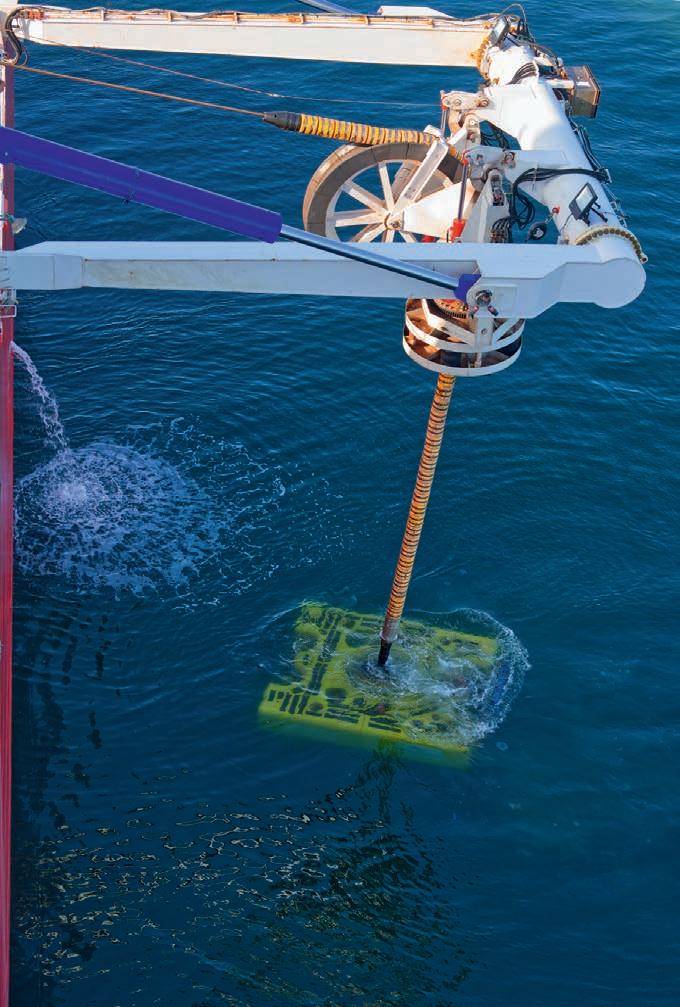
In a fish farming environment, the interaction between technology and biology is also crucial, and one of the areas of study for SINTEF concerns how to ensure that UUVs are not intrusive or harmful when it comes to fish welfare.
There are a couple of obvious applications for autonomous vehicles in fish farming. One is monitoring the biomass and state of health of the stock; another is net cleaning. Nets and sea can quickly become fouled with algae and other marine life, which among other things can restrict the flow of oxygen into the pens, so regular cleaning is a must. Manual cleaning with high-pressure

Underwater, they are operating in three dimensions

jets is a labour-intensive job, and also quite disruptive for the fish. Gentler scrubbing, carried out more frequently, would be preferable, but if this was done manually it would be very time-consuming.
SINTEF’s NetClean 24/7 project, one of several under way at the RoboticsLab, is aimed at developing a resident, untethered and autonomous net cleaner for fish farms. The idea is for the robot to be small, energy efficient and have its own docking station, and to carry out continuous net cleaning and inspection operations.
The two research partners, SINTEF and the Norwegian Institute of Science and Technology, are working with salmon

farmer Nordlaks Oppdrett, instrument specialist Xylem Aanderaa and Remora Robotics, which has already developed a remotely operated net cleaner, the Remora. The focus of the research is to see how the Remora can be adapted to operate completely autonomously.
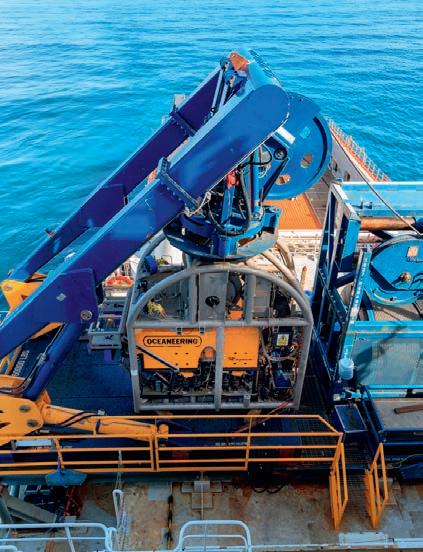

The first step was to break down the functions and requirements of the robot, defining all the operations required and then breaking them down into sub-tasks. Once this was done, the researchers
developed a mathematical model to represent the dynamics of the robot operating in a fish farming cage at sea.
It was necessary to develop algorithms that would enable the robot to both follow a prescribed path as part of its net cleaning routine, and to avoid obstacles in its path.
The researchers at SINTEF decided to adopt an “Elastic Band” approach, in which the robot maps a path that is analogous to a rubber band stretching between the start and end point of the cycle. When an







obstacle appears and is sensed, the path wraps itself around it like an elastic band wound around the various points along the way. A sensor package to enable the robot to detect obstacles was also part of the design.
To avoid collisions, an area around each obstacle is treated as a spatial “bubble”, which the robot will not enter, in order to allow a safe distance.
It was also important to devise an underwater docking station which would allow the robot to recharge without having to be
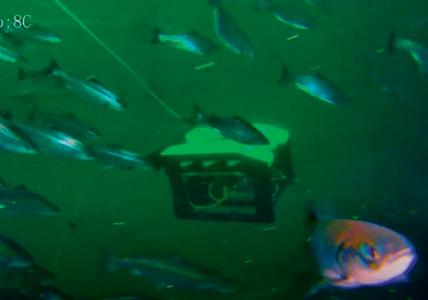
The adoption of underwater vehicles in the aquaculture industry to improve access to underwater assets and increase operational efficiency has grown swiftly in the past decades. Today’s vehicles are able to stay on station longer, dive deeper and deliver realtime video for analysis. Yet, they have until now remained a complicated and expensive alternative to professional divers, requiring extensive training to operate and maintain. This can be daunting to operators especially when faced with a bewildering array of underwater vehicles and technology that can vary hugely in cost, performance and reliability.
Wight Ocean Ltd has 30 years’ experience in marine robotics technology. Based in the UK, Wight Ocean helps customers in selecting underwater technologies, offering marine robotics solutions, systems and expertise. Wight Ocean partners with leading underwater equipment manufacturers and software suppliers to provide unique solutions that solve customer operational and technical challenges.
Two examples of this are The Oceanbotics™ ROVs which offer “drone-like” vehicles that are easy to learn and use to inspect and maintain underwater infrastructure, and Bayonet’s unique range of amphibious seabed crawlers, which provide an excellent platform

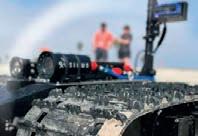
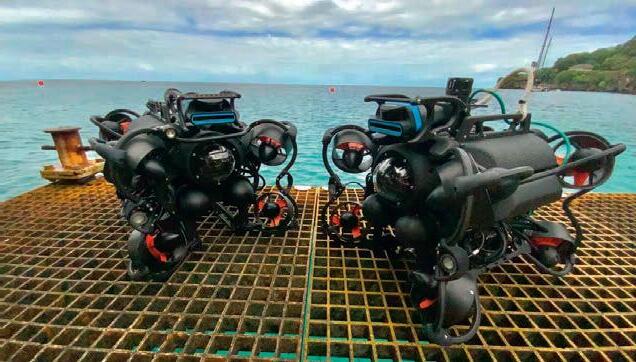
recovered each time.
The project successfully created the mathematical model and also designed a workable subsea docking station, using wireless charging and data transfer. Trials in laboratory conditions showed that the robot was able to negotiate its way around the net in a cage at sea, avoiding static and dynamic obstacles.
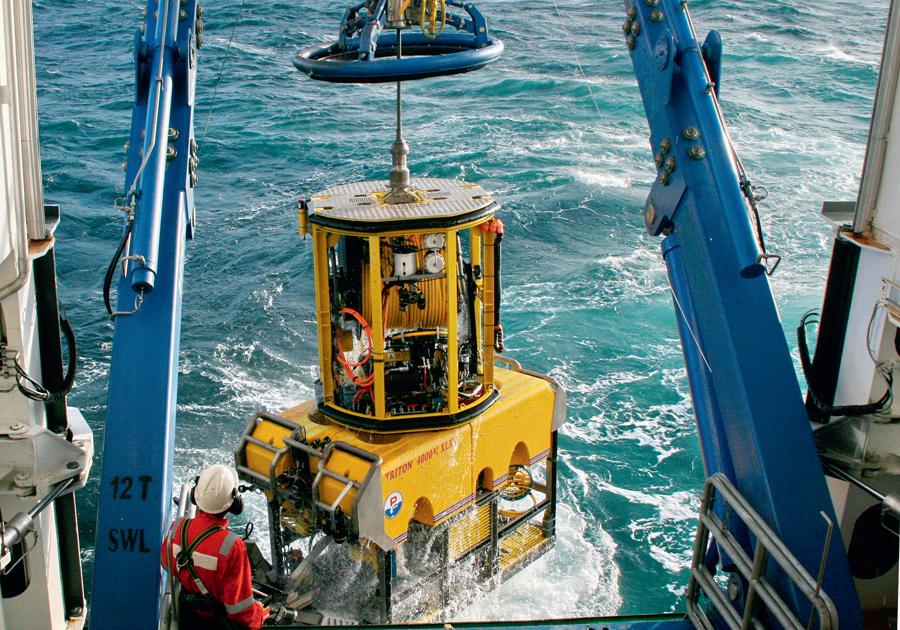
Field trials commenced last year at several active fish farming locations around Norway and are currently under way.
With the salmon industry exploring the possibility of expanding further offshore, into locations that are hard to staff with a human crew day-to-day, not to mention the development of “smart farms” managed using remote operations and artificial intelligence, further advances in the world of underwater operations will prove vital in helping the sector to move forward.
for conducting remotely controlled or fully autonomous seabed operations.








These systems bring a wide range of payloads into play like never before. Bayonet vehicles go where other systems cannot, operating safely, free of weather and sea state constraints, and in all surface traffic environments.
For further information contact Wight Ocean with your underwater needs. Call +44(0)7818 348106 or go online to wightocean.com
 Above left: The Bayonet 250 crawler. Above: Oceanbo�cs rovs
Above left: Triton ROV li�ed out of the sea
Above left: The Bayonet 250 crawler. Above: Oceanbo�cs rovs
Above left: Triton ROV li�ed out of the sea

LOAD handling specialist Techano Oceanlift has successfully completed delivery and commissioning of a new and upgraded live fish transfer system provided to SalMar Aker Ocean’s fish farm, Offshore Farm 1. Techano won a contract to supply two FTS500 fish transfer systems in March 2022 for the Ocean Farm, which represents a pioneering design for large-scale offshore aquaculture. The systems were delivered last winter to Aker Solutions’ Verdal yard, where the Ocean Farm underwent a functionality upgrade. Recently, the first live fish transfer operations were successfully executed with the new system. Techano was recently acquired by the industrial technology group Nekkar, which also includes Syncrolift.
ANB Sensors has signed a reseller agreement with instrumentation company RS Hydro for the distribution of ANB’s revolutionary pH sensors. The agreement entitles RS Hydro the right to resell ANB Sensor products through RS Hydro’s and Proteus Instruments’ network of customers, helping ANB to make use of RS Hydro’s established market presence. ANB’s sensors require no calibration and are suited for use in any sensing platform in freshwater, saltwater and aquaculture applications.
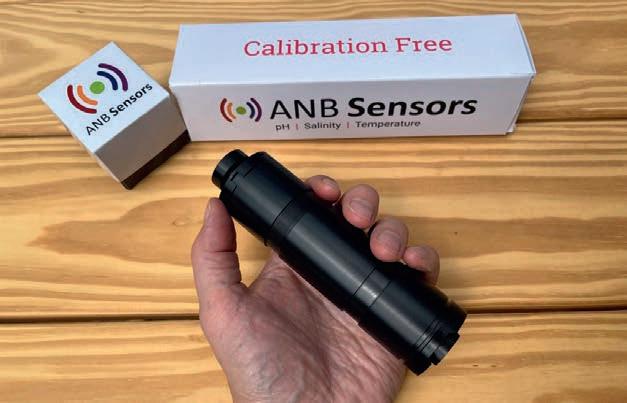
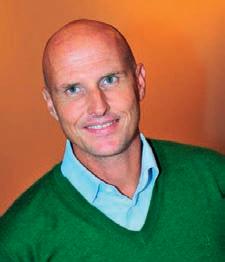
NETHERLANDS-based feed additive specialist
Orffa has announced a change at the top of the company, with Eddy Ketels, CEO since 2001, stepping down at the end of 2023. He will be succeeded by Haiko Zuidhoff (pictured), who will start in his new role on 1 October 2023. Haiko Zuidhoff most recently served IMCD as President for the Asia region. Prior to IMCD he held senior roles at Trouw Nutrition Nutreco and Corbion.
Norwegian government agency Statsbygg has awarded manufacturer Framo a contract to supply pump systems for the Norwegian Ocean Technology Centre, currently under construction in Trondheim. The delivery includes 96 pumps that will pump huge amounts of water to create ocean currents in the research facility’s basin, which is 60 metres long, 50 metres wide, and 12 metres deep. Framo Aquaculture Sales Manager Terje Ljones said: “Our system will pump enormous amounts of water to simulate ocean currents together with realistic waves.”
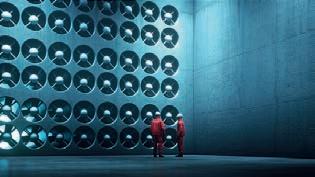
Net specialist Garware Technical Fibres has appointed three executives to support the management of its Norwegian, Chilean and southern European markets. Olav Kolbjørn Øvereng joins the Garware Technical Fibres team in Norway as a Technical Advisor, while Ramkhrisna Borse joins the Chilean team as Technical Manager and Eduardo Wolff has been appointed as Sales Consultant to take care of the business in all segments for southern Europe.
(Pictured, from left: Ramkhrisna Borse, Technical Manager, Chile; Olav Kolbjørn Øvereng, Technical Advisor, Norway; Eduardo Wolff, Sales Consultant, southern Europe.)
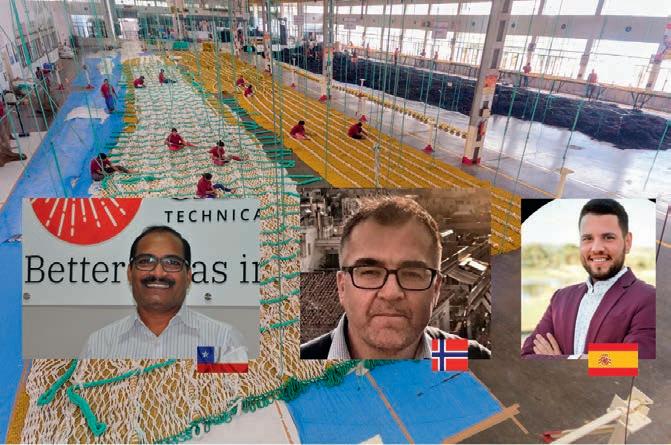
Our

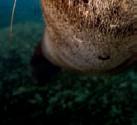
Our new generation, award-winning acoustic deterrents





Comply with both Marine Scotland EPS and U.S. MMPA requirements





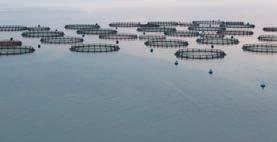
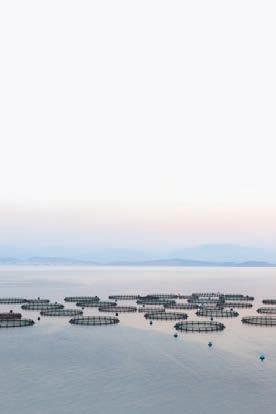
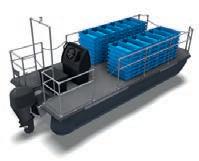


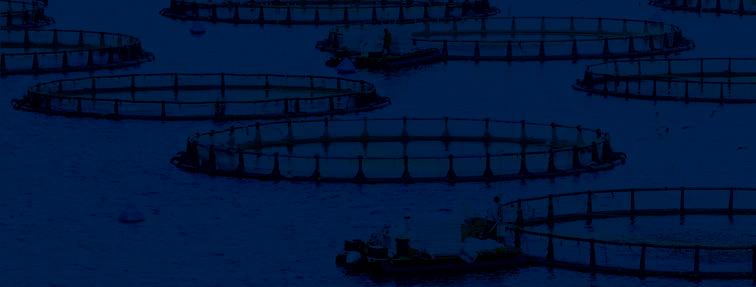

Create conditioned avoidance so we can put far less acoustic output into the water than older barrier systems
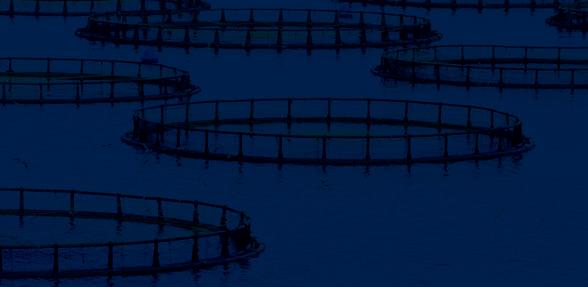
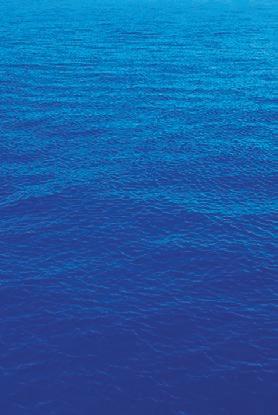
Have low duty cycles, low average volume and low frequency to help deter seals, while better safeguarding cetaceans

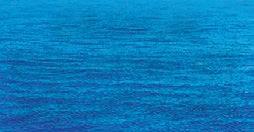


cetaceans
Your first choice for animal welfare.
Your first choice for animal welfare.
Get in touch to set up a

Get in touch to set up a trial: acedeterrents@aceaquatec.com





tomorrow www.storvik.no
Fish Health

Clynav will turn the way you see PD control upside down. Clynav is like no other PD vaccine it uses Elanco’s unique DNA plasmid technology and has become the leading choice for PD protection in Norway. Clynav is delivered intra-muscularly without the need for an adjuvant.
www.elanco.co.uk
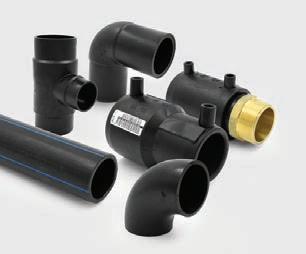

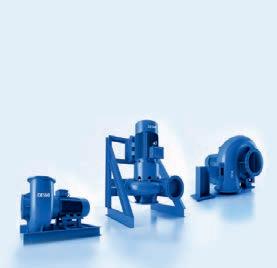
Clynav brings fresh hope in the fight against pancreatic disease Clynav contains pUK-SPDV-poly2#1 DNA plasmid coding for salmon pancreas disease virus proteins: 5.1 9.4 µg. Legal category
Turning conventional approaches... upside down Clynav brings fresh hope in the fight against pancreatic disease. Take back control of PD with Clynav. It will change your point of view, for good. www.elanco.co.uk
Clynav will turn the way you see PD control upside down. Clynav is like no other PD vaccine - it uses Elanco’s unique DNA plasmid technology and has become the leading choice for PD protection in Norway. Clynav is delivered intra-muscularly without the need for an adjuvant.
Turning conventional approaches... upside down Take control
Hatcheries Turning conventional approaches... upside down Take control
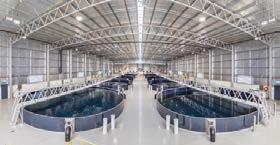
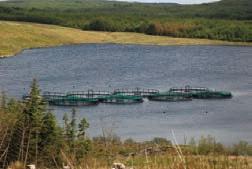
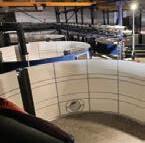

So, with Clynav, you can rest assured of excellent PD protection without the risks associated with conventional vaccines. Take back control of PD with Clynav. It will change your point of view, for good.
So, with Clynav, you can rest assured of excellent PD protection without the risks associated with conventional vaccines. Take back control of PD with Clynav. It will change your point of view, for good.
impex@impexagency.dkimpex@impexagency.dk impex@impexagency.dk retreatment. HATCHERIES NETS

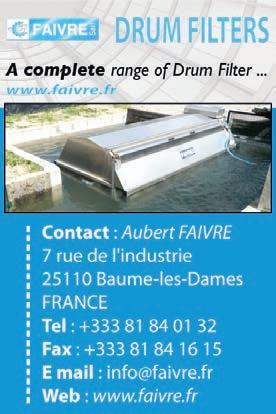

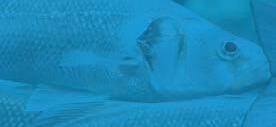
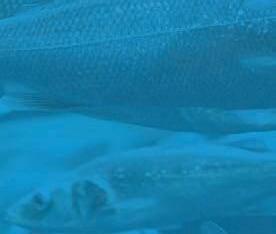



Clynav brings fresh hope in the fight against pancreatic disease Clynav contains pUK-SPDV-poly2#1 DNA plasmid coding for salmon pancreas disease virus proteins: 5.1 – 9.4 µg. Legal category in UK. For further information call Elanco Animal Health on +44(0)1256 353131 or write to: Elanco UK AH Limited, First Floor, Form 2, Bartley Way, Bartley Wood Business Park, Hook RG27 9XA, United Kingdom. For further information consult the product SPC. Clynav, Elanco and the diagonal bar logo are trademarks of Use medicines responsibly www.noah.co.uk/responsible. Advice should be sought from the Medicine Prescriber. PM-UK-21-0435 04.2021 RLH


www.elanco.co.uk CLYNAV Upside Down Ad 297x210 2021.indd 1 11/05/2021 10:07
EQUIPMENT SUPPLIEER EQUIPMENT SUPPLIEER RECIRCULATION
Storvik LTD Lochgilphead, Scotland Tel: +44 (0) 1546603989 info@storvik.co.uk MARINE EQUIPMENT NauticastTM & VideoRay Available for Sale or Hire from www.atlantasmarine.com T: +44 (0)1935 426 000

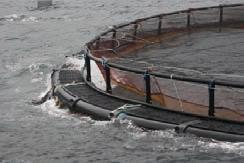
rkplast@rkplast.dk
Delivering state of the art, quality products... industry... on budget, on time 06/02/2014 16:35:16






























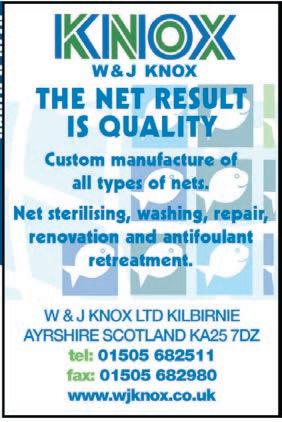

















Design • Supply • Build • Support Engineered Prefabricated Modular .com Advanced RAS Recirculation

Salt
Sensors


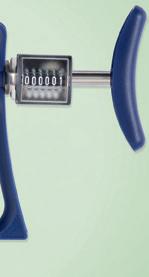

A wide range of applications, including lobster, oyster, mussel and prawn cultivation














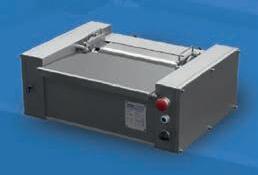


Artificial seawater free from bacteria, algae and toxic detritus found in seawater



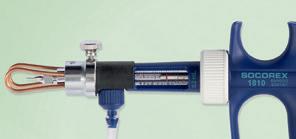


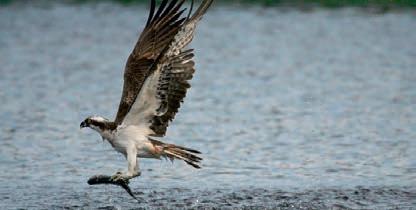
JUNE 23
seagriculture.eu
12th International Seaweed Conference EU organised since 2012.
Trondheim, Norway

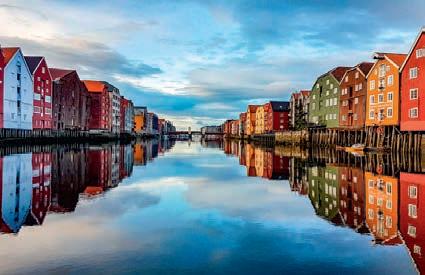
June 21-22, 2023
www.aquaeas.org
The European Aquaculture Society’s annual conference focuses on “Balanced Diversity in Aquaculture Development”.
Vienna, Austria

September 18-21, 2023
MAY 24
AQUACULTURE UK 2024
www.aquacultureuk.com
Aviemore will once again be the venue for this biennial trade fair and conference. It is undoubtedly the most important aquaculture exhibition held in the British Isles. The show has a tremendous following and with increased investment for 2024 it promises to reach even further across the broader aquaculture markets in both the UK and Europe.
AUGUST 23
AQUA NOR 2023
www.aquanor.no/en/ Trondheim, Norway
August 22-25, 2023
NOVEMBER 23
AFRAQ 2023
www.was.org/meeting/code/AFRAQ23
Lusaka, Zambia
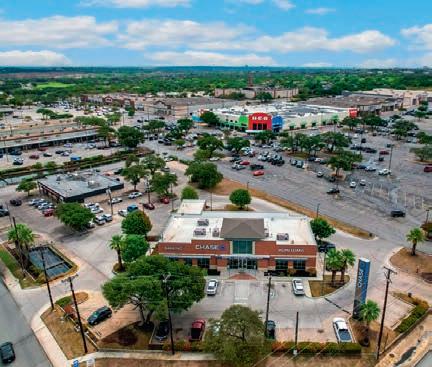
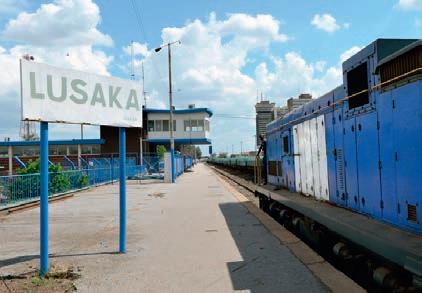
November 13-16, 2023
Aviemore, United Kingdom
May 14-15, 2024
AUGUST 24
AQUA 2024
www.aquaeas.org - www.was.org
Copenhagen, Denmark
August 25-29, 2024
The theme of AQUA 2024 is BLUE FOOD, GREEN SOLUTIONS.
NOVEMBER 24
WORLD AQUACULTURE 2024
Oman
November 2024
SEPTEMBER 23
seagriculture-usa.com
2nd International Seaweed Conference USA.
Portland, Maine, USA
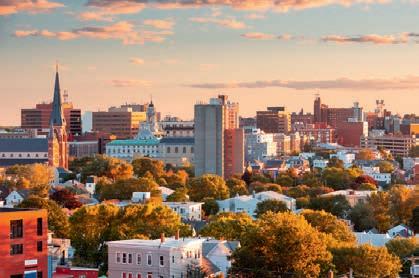
September 6-7, 2023
FEBRUARY 24
www.was.org
San Antonio, Texas, USA
February 18-21, 2024
MARCH 25
AQUACULTURE 2025
New Orleans, Louisiana USA
March 5-9, 2025
JUNE 25
WORLD AQUACULTURE 2025
Entebbe, Uganda
June 2025
o here it is, my first piece of humble pie for a while: The Sustainable Aquaculture Innovation Centre (SAIC) conference in Glasgow last month was well worth it, with innovation on show and as a topic of discussion. There were opportunities in some talks to put your views and challenge the wisdom on show, and though people appeared to be uncomfortable challenging, there were one or two doing that. Most importantly, and unusually, I really enjoyed it. It is the first conference I have enjoyed in a very long time.
Was it enough? Did it challenge enough? Were there enough ideas from way out there? Probably not, in my ungrateful estimation, but then I tend to like ideas and the whackier the better. This was SAIC’s first one and though occasionally it became a bit controlled, and avoided controversy, it was nonetheless the best ideas forum I have ever attended in aquaculture. I hope I get invited to the next one, which is something I did not think I would ever say.
To counteract all this cheerfulness I read a long article on the BBC website about a member of a certain salmon company’s board suggesting that Scotland was becoming a poor place to invest due to its overweening regulation etc etc.
This is no surprise to me but I am surprised at the resilience of the investors who keep on pumping money into an entirely ungrateful country. For those who don’t understand, there are many, many countries who try to attract investment, especially those who are willing to invest in food production and the rural economy.
Unsurprisingly the BBC, which my father used to call the ABBC (he put “Anti” in front), decided to discuss the fact that the Norwegian government is introducing a tax on the profits of salmon farming. Not once in the article did it mention food security nor the fact that salmon is a healthy food that would benefit a whole load of people who currently eat poor alternatives.
The whole article was slanted towards how the country needs to review whether it really wants salmon farming or not. I have read a few of these in the past few weeks about other forms of food production. I have begun to think that the so-called journalists who write these articles really believe that we can exist on thin air. Of course they closed the article suggesting that the UK should look at taxing salmon farming profits.
So having been reminded of the general insanity of journalists, especially the BBC type, I then went and read a piece on the insanity of our regulators. The Scottish Environment Protection Agency (SEPA) apparently are still intent on implementing regulation based on a model which is fundamentally flawed, given that there is no evidence it actually predicts anything.
At the SAIC conference I was speaking to an old friend who happens to be an ex-modeller. Guess who he used to work for? Correct. I asked him what he thought about the SEPA lice model. He replied “It’s rubbish”. This, from a mild-mannered gentle man who has lived a life immersed in science. We had a lovely discussion following that statement and we concluded that more often than not these days, science is being abused by those who try to get the facts to fit a theory.
So if the above does not make you feel that the less than able are in charge, remember the poor old land farmers, trying to survive www.fishfarmermagazine.com

while idiots suggest that we should live on vegetables entirely. The fact that winter occurs obviously hasn’t occurred to anyone.
However, that particular level of lunacy isn’t the one to which I refer. Lately there has been discussion about where £33m ring-fenced for agriculture has disappeared to. The discussion at Holyrood would have been hilarious if it wasn’t so serious. Apparently the funds were ring-fenced. When ministers asked where they were, the reply was that they were a saving. When asked when farmers would get them, the reply was that they were ring-fenced and so it went on. They were a saving that has been ring-fenced.
To add insult to injury, the other government decided to ask the supermarkets to cap food prices. Who in their right mind could possibly think anything but that the farmers would pay for this? Does anyone think that the supermarkets would pay for it out of their own pocket?
So to all those putative investors who think that maybe the UK is not a sensible place to put your investment, especially in the food production area, my answer is of course you should. However before you do I think I’ll just go and have a word with the leprechaun who lives under the toadstool in the bottom of my garden. See report, page 38.
I am surprised at the resilience of the investors who keep on pumping money into an entirely ungrateful country




